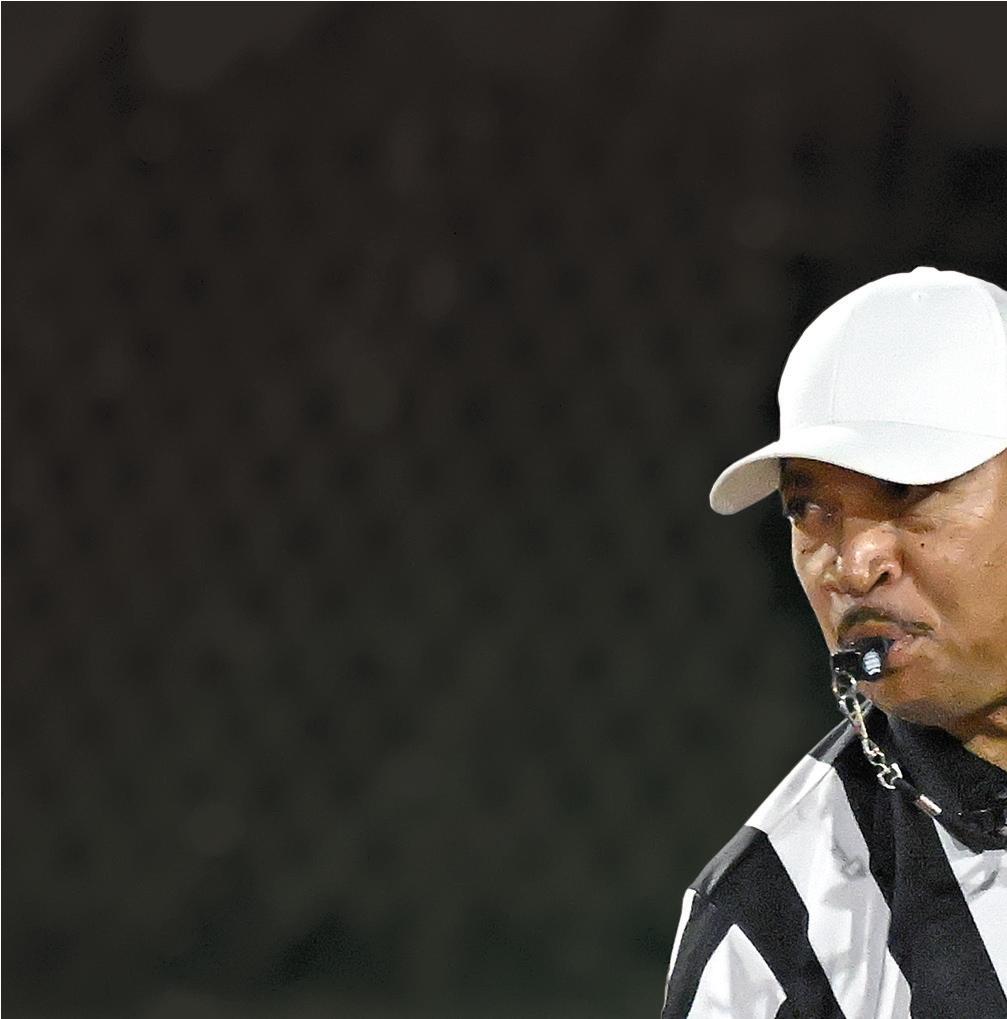










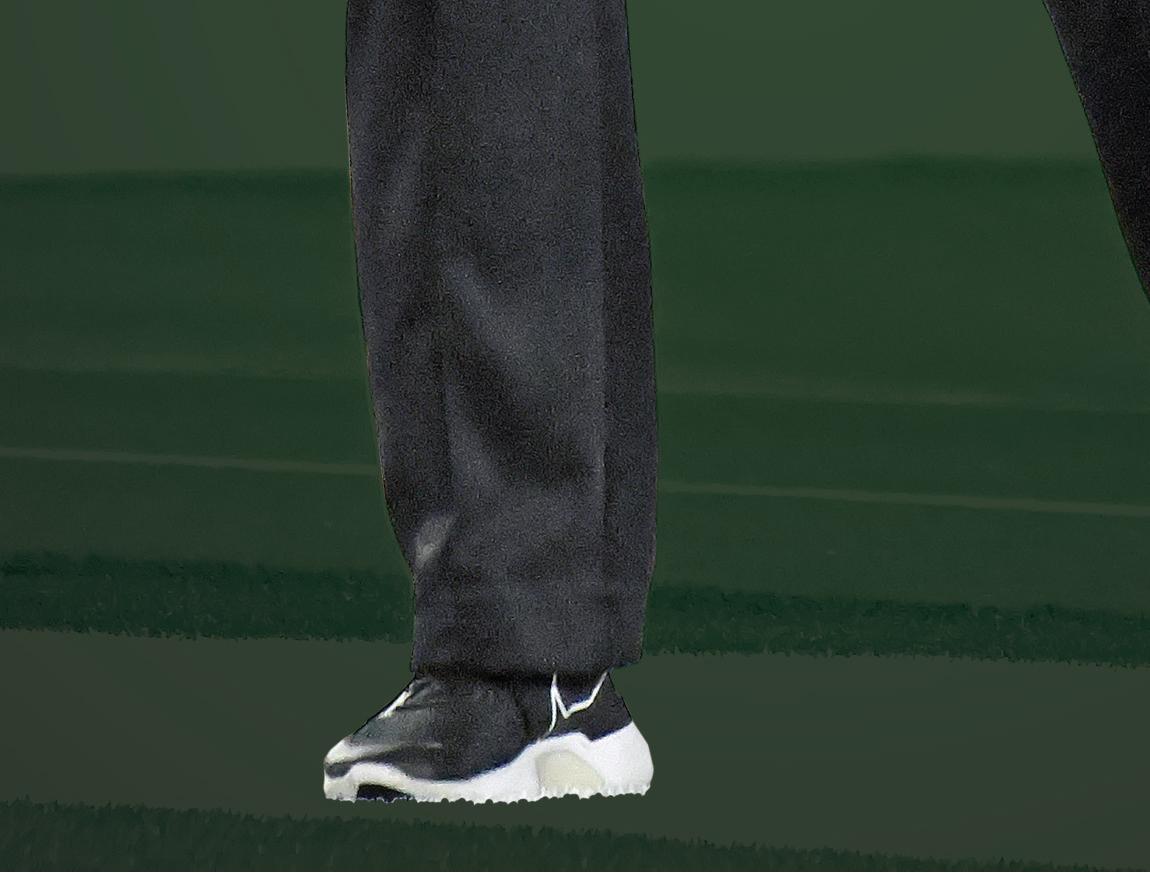





















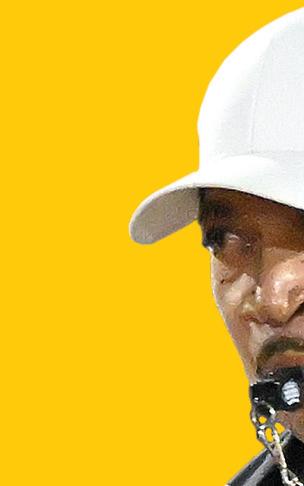
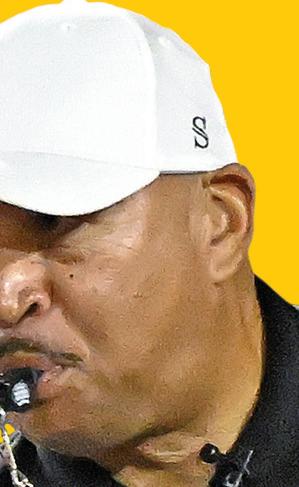
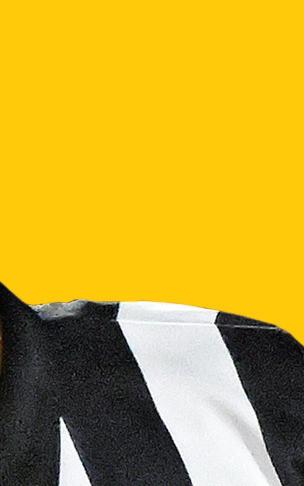












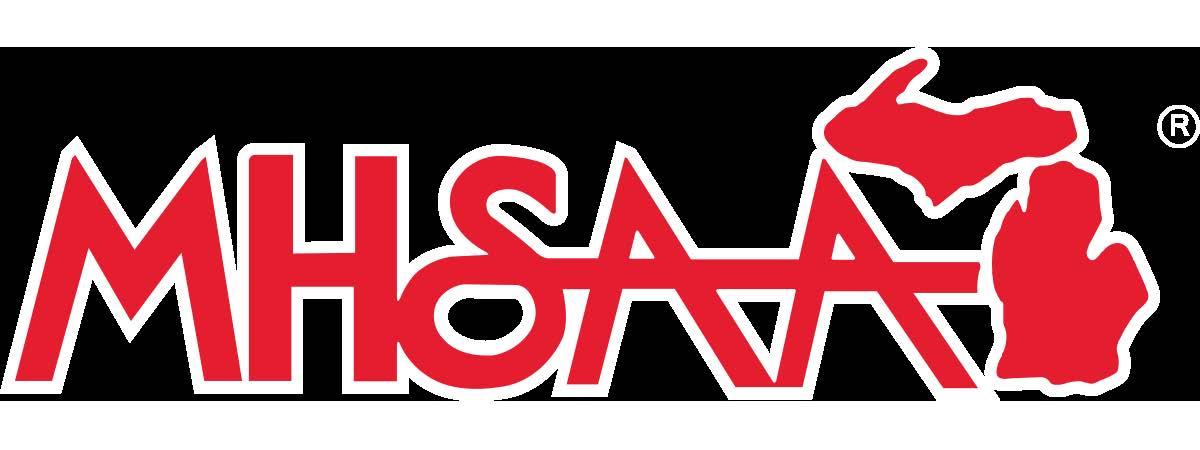
TERMINOLOGY BASEBALL FOOT FOULS LEGALITIES RELEASE SMARTA** NEW RULES your voice since 1976 $6.95 OOPS! START ’EM STRESS TESTED MASTERS DEGREE IN OFFICIATING P.26 KICK STARTSFOOTBALL YOUNgP.76 P.58 P.40 STARTS SEPTEMBER 2023 // REFEREE.COM

FEATURES
26 STRESS LESS
There’s no escaping the pressure, but it doesn’t have to cook you.
44 OOPS!
Every official has had that feeling. Your heart sinks and you feel all alone in the moment.
58 MASTER’S DEGREE IN OFFICIATING
Higher education took on a new meaning when two British women completed an advanced officiating course in Scotland.

76 AO-K
Group finds recruiting success with Associate Officials program.
ON THE COVER
Occupation: Oil and Gas Project Manager
Officiating experience: High school football official. High school, collegiate, USATF track and field starter. Los Angeles Chargers chain crew coordinator, assigned to Super Bowl LVI.
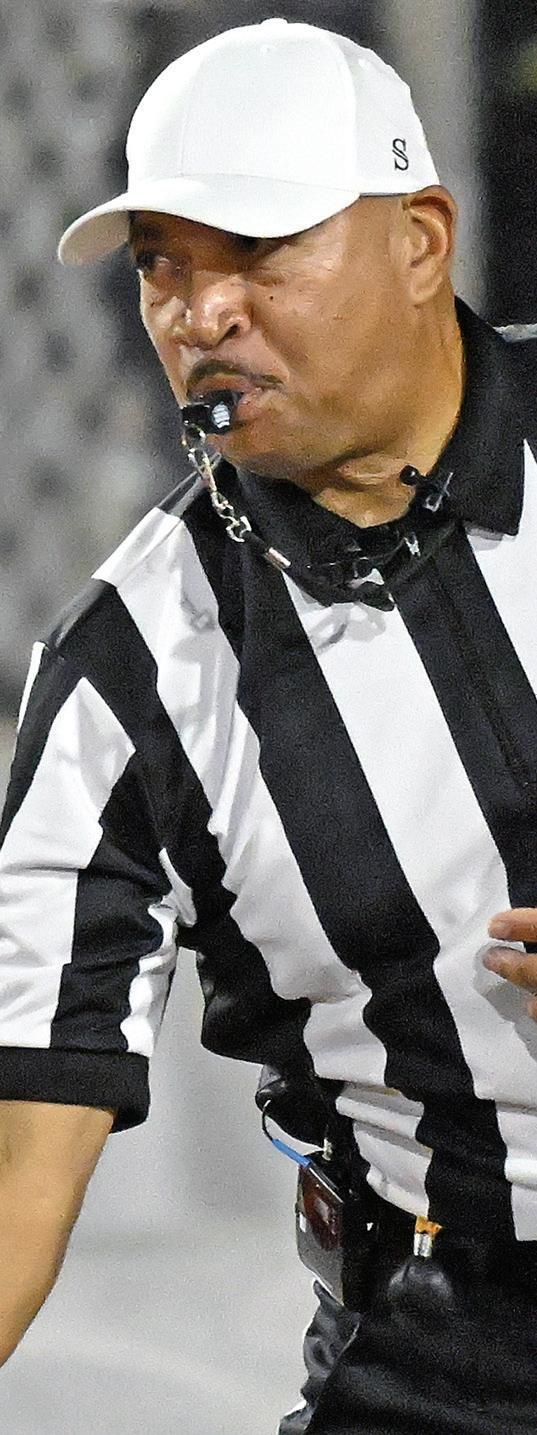
SPORTS
16 FOOTBALL
Kick Starts: Reviewing the Rules Regarding Free Kicks; (Fair) Catch of the Day; NCAA Rule Change Creates a Difference; Get Well-Read on the Red Zone
32 SOCCER
Best Foot Forward: Tips for Spotting Fouls With the Feet; The Teaching Referee; Classic Confrontation
38 BASKETBALL Changes to LGP Now Afoot: Plant Foot Key to Airborne Player Contact Rulings; NFHS 2023-24 Points of Emphasis
48 VOLLEYBALL Lineup Check Logistics: How Second Referees Can Quickly Fix Issues; Postmatch Postulation; Libero Do’s and Don’ts 62 BASEBALL
Fluency Has Its Rewards: Proper Rulebook Language Breeds Confidence; Talent Isn’t Everything for Those Looking to Climb; Extra Steps Create Some Extra ‘Sell’
68 SOFTBALL Get in the Zone: A PlateFull of Principles to Digest; Be Deliberate on Voluntary Release
78 ALL SPORTS
Four on the Floor (Or Court): You Can Accelerate Your Performance; 50-50 Calls: Not Half Bad
COLUMNS
4 PUBLISHER’S MEMO Babysitting Service Revisited
10 THE GAG RULE
Letters: ‘What’s Going On?’; They Get It; Snap Shot; They Like Us; Survey Says
12 THE NEWS
Texas Pases New Law to Protect Sports Officials; Collins Named NCAA Soccer Coordinator; Timing Device Lawsuit Reaches Settlement; Rivera, Fomer Coordinator of College Football Officials, Dies
56 GETTING IT RIGHT Oh Captain! LeCaptain!; Recruitment at Alta Vista Park; Dust Devil in Jacksonville
74 PROFILES
Three Generations, Triple the Memories; From an Air Force Uniform to an Umpire’s Uniform; A Legendary Career Receives Recognition
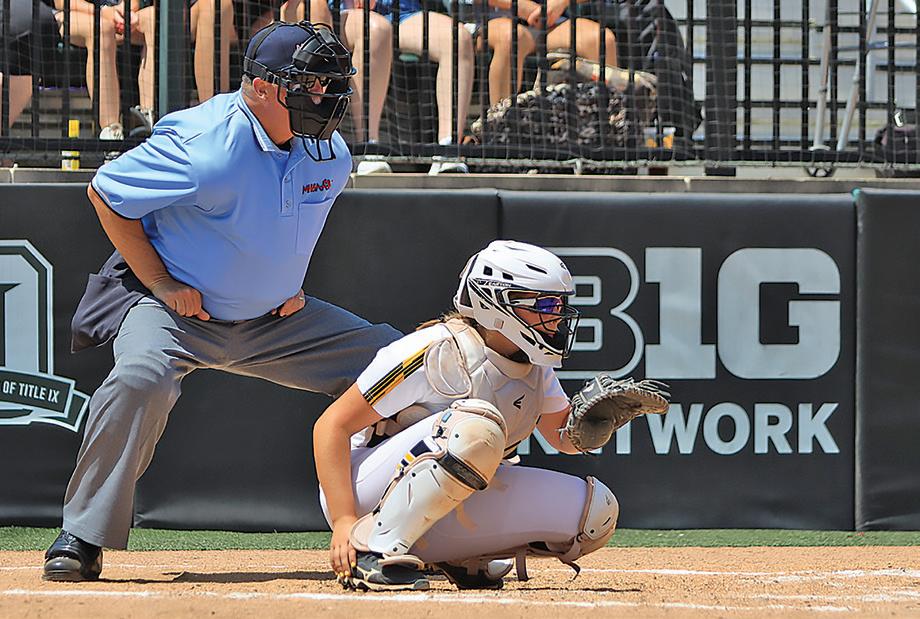
82 FOR THE RECORD
NBA Playoff Assignments
84 LAW Association Restrictions May Carry a High Cost; Restricting Former Members; Ways to Support Legislative Initiatives
85 CLASSIFIEDS Camps/Clinics/Schools; Equipment/Apparel; Leadership Resources


86 LAST CALL
Passing the Bataan: We are out there as a team.
SOFTBALL HIGHLIGHT THIS MONTH
John
Find Referee Magazine on Facebook and follow RefereeMag on Twitter Volume 48, No. 9 Issue 563 SEPTEMBER 2023
CONTENTS
COURTESY OF EDINBURGH NAPIER UNIVERSITY, COURTESY OF MHSAA (SOFTBALL), HESTON QUAN (COVER)
54
VanHolstyn, Sandford, Mich., locks in behind the catcher and tracks the ball all the way to the mitt. This helps him stay accurate and consistent throughout the game.
GO TO PAGE 62
FOR MORE,
Mike Andrews San Diego
PUBLISHER’S MEMO
Babysitting Service Revisited
Back in March 2013, I resisted publishing a Memo like this. I apologized to the readers for not writing it sooner. Now, I feel a need to update that Memo and run it this month.
Have you noticed there continues to be a serious coaching-behavior problem on the sidelines? Incessant ranting, being on the playing surface while the play is live, over-the-top gesturing, etc. When I see coaches acting like spoiled brats without boundary, I want to scream. What do I want to scream? “Take care of business, dammit!”
And let me note something here: The behavior of some of our own makes me want to puke. What in the hell do we think we are hired to do out there? Save the coaches from themselves? So far, I haven’t read in any rulebook, officials manual or conference communication that we are tasked to provide babysitting services.
Further, not only are we not directly taking care of business, we have even gone so far as to become enablers of the rotten conduct. Many times I have seen an official actually step around a screaming coach, who is standing on the playing surface itself during a play, and just pretend the coach is not there. Incredible! At a recent game, I witnessed one very well-seasoned official actually take both hands and gently nudge the coach on each arm and move him ever so gently to the sideline … and the game was full on in that very area. Are we kidding here?
We have the power, authority and responsibility to enforce bench conduct and sideline behavior. The rules committees and virtually every coordinator I have spoken with want those matters taken care of. But forget those folks for a minute and give a reality check. Coaches who act like total jerks do that for the same reason a young kid acts out. They believe there is no boundary — they simply act out because they know there will
be no meaningful consequences.
The buck stops with us. We are hired to ensure the game is well behaved. We have two tools to etch behavior boundaries — the alkali of warnings and the acid of penalties.
Rulebooks and manuals do have coverage on warnings, but much is still left to the “officiating imagination.” Talk to most referees and they will tell you use of a warning is an important tool for game management. Ask when they use it and they grope for an answer.
Some say we have taken the use of warnings well beyond what was intended by those who write the manuals and the rules. I agree with them. Today, we fashion ourselves as kinder and gentler referees. We cajole, we wheedle, we warn, we “communicate.” Far too many times what we don’t do is enforce. We sometimes act like parents I have seen so often in a mall or airport. Their kid is acting out and they ask her to stop. She keeps it up. They ask her to stop. She keeps it up. The words of the parents have been completely devalued.
As officials, we find comfort in warning versus enforcing. That is the path of lesser resistance. We don’t want to be viewed as a “baddie” or, excuse my French, a “hardass.” We want to belong. We like smooth. We are acting like parents of spoiled kids. We warn, warn and warn again instead of simply enforcing the law. We enable.
We would be well served to take stock of our approach. And please, stifle the howl that a schedule might suffer if we get on the wrong side of a coach. Stop yourself on that score. It is our responsibility to clean up the obscenity of obstreperous coaching behavior — college football and basketball especially, but now regrettably, in high school and youth sports. Time to take care of business.
Chief Strategy Officer/Publisher
Barry Mano

Chief Operating Officer/Executive Editor
Bill Topp
Chief Marketing Officer
Jim Arehart
Chief Business Development Officer
Ken Koester
Managing Editor
Brent Killackey
Assistant Managing Editor
Julie Sternberg
Senior Editor
Jeffrey Stern

Associate Editors
Brad Tittrington
Scott Tittrington
Assistant Editor
Joe Jarosz
Copy Editor
Jean Mano
Director of Design, Digital Media and Branding

Ross Bray
Publication Design Manager

Matt Bowen
Graphic Designer
Dustin Brown
Video Coordinator
Mike Dougherty
Comptroller
Marylou Clayton
Data Analyst/Fulfillment Manager
Judy Ball
Marketing Manager
Michelle Murray
Marketing Coordinator
Ben Wirth
Director of Administration and Sales Support
Cory Ludwin
Office Administrator

Garrett Randall
Client Services Support Specialists
Lisa Burchell
Sierra Miramontes
Trina Cotton
Editorial Contributors
Jon Bible, Mark Bradley, George Demetriou, Alan Goldberger, Judson Howard, Peter Jackel, Tim Sloan, Steven L. Tietz
These organizations offer ongoing assistance to Referee: Collegiate Commissioners Association, MLB, MLS, NBA, NCAA, NFHS, NISOA, NFL, NHL, Minor League Baseball Umpire Development and U.S. Soccer. Their input is appreciated.
Contributing Photographers
Ralph Echtinaw, Dale Garvey, Carin Goodall-Gosnell, Bill Greenblatt, Jann Hendry, Keith Johnston, Jack Kapenstein, Ken Kassens, Bob Messina, Bill Nichols, Ted Oppegard, Heston Quan, Dean Reid, VIP
Editorial Board
Mark Baltz, Jeff Cluff, Ben Glass, Reggie Greenwood, Tony Haire, John O’Neill, George Toliver, Ellen Townsend Advertising
advertising@referee.com
the video at referee.com/pubmemo 4 | REFEREE September 2023
Watch
2017
REFEREE (ISSN 0733+1436) is published monthly, $49.95 per year in U.S., $84.95 in Canada, Mexico and foreign countries, by Referee Enterprises, Inc., 2017 Lathrop Ave., Racine, WI 53405. Periodical postage paid at Racine, WI and at additional mailing offices. Postmaster: Send address changes and undeliverables to REFEREE, PO Box 319 Congers, NY 10920. Direct subscription inquiries, other mail to REFEREE, PO Box 319 Congers, NY 10920. 1-800-733-6100. © 2023 Referee Enterprises, Inc. All rights reserved. (USPS Publication #107790.) Subscribers: Send address changes to REFEREE, PO Box 319 Congers, NY 10920.
Lathrop Ave., Racine, WI 53405 Phone: 262-632-8855
FEATURING THE LATEST FOOTBALL PRODUCTS MADE BY SPORTS OFFICIALS
GOOD CALL OFFICIATING SPEAK EASY HEADSET

GOOD CALL OFFICIATING NFHS GAMEBOOK

Mark B. Skiatook, Oklahoma
“Great equipment addition for our crew. Very clear even over crowd noise. The push button is always there. You’re not fumbling around for a small mic with a small button.”
OFFICIAL REVIEWS
UMPLIFE PROFESSIONAL GARMENT BAG



Tim T. Batesville, Arkansas
“I love this book! It has everything in it you’ll need on the football field. There’s no point in carrying anything else. It’s slick, perfect size for your shirt pocket.”
OFFICIAL REVIEWS
WILLIAMS ULTIMATE FOOTBALL REFEREE INFORMATION CARDS

Nick D. Windsor, Connecticut
“WOW! #GameChanger. The quality of this bag is beyond reproach. Ray has designed this bag with o cials in mind.”
OFFICIAL REVIEWS
Donald P. Virginia Beach, Virginia
“Finally, a game card that has everything an o cial needs to record the game. Thanks.”
OFFICIAL REVIEWS




Preferred vendor
Team Works Officials Are the Third Team in the Competition
Most people think two teams are required for an athletic competition. Officials know better. It takes three — the teams scheduled to take the field or court, plus the team of officials. As the saying goes, without the officials, anything else is just practice.


Just as the athletes must work as a team in order to win, the officiating crew must exhibit teamwork in order to execute at the highest level. But being assigned to a crew does not ensure teamwork. So how well does your crew perform? Grade your group on these 10 items and see how you fare.
• Is everyone on the crew there for the same reason? Common mission and values drive team success. The pressure to “move up” or earn postseason assignments is a powerful one. But if some crew members are aiming for the state tournament while others are happy to be just working the regular season, some adjustments may be necessary. The desire to make more money doing other sports can be a drawback as well. Will a crewmate create an opening on a game night to work a different sport with a different crew? Is there enough focus by individual
crewmembers on the game at hand?
• Does the crew take personal responsibility for game preparation? Is the crew ready? Many associations require weekly caseplay reviews and regular study. But even when that’s not the case, it’s the individual’s responsibility to maintain a solid understanding of the fouls, penalties, rules and specifics of the position. Does the crew arrive at the pregame prepared? Do the members hold one another accountable? If someone is assigned a task, such as choosing a rendezvous point and meeting time to travel together, or putting together a quiz for the ride to the game, is that being handled?
• What is the nature of the pregame meeting? Is it business or bickering? Overly convivial? Are the pregame meetings coordinated and geared to discussing points of emphasis and potential game events? Does the atmosphere encourage questions and learning? Or are they sessions mired in complaints about game fees, the quality of the competing teams or the assignments of other officials?
• How does the crew view the crew chief or lead official? The head of the crew wields significant
influence not only on the field or court but off. During a game does he or she create an environment of, “Let’s just get the call right,” or one of, “Don’t embarrass me”? Are crewmembers more concerned with the lead official’s influence on subsequent playoff assignments?
• How is conflict handled?
Officials are notoriously confident — they have to be in order to make split-second decisions. In pressurefilled situations that confidence can manifest itself in the form of closed minds and an unwillingness to discuss other viewpoints. Is your crew able to constructively and quickly handle conflict among crewmembers?
• Does the crew focus only on the negative? Clearly missed calls draw the most attention and they need to be addressed at the appropriate time. However, positive feedback validates good performance and builds a constructive and upbeat atmosphere.
• Are crewmembers empowered? Empowerment is a word often overused and seldom understood. Empowered team members enjoy an environment of trust that fuels assured decision-making. They are vested in the success of the crew.
6 | REFEREE / MHSAA September 2023
Referee Ron Blevins, Ypsilanti, Mich., and Umpire Eric Thomas, Brooklyn, Mich., converse during a break in the action. Camaraderie and working toward the same goals are part and parcel of the officiating experience.
MEMBER BENEFITs & services
Any Game, Any Time, Anywhere — You Are Covered
Insurance
(Sports Officials Security Program)
$6 million General Liability Coverage

Excess coverage for claims for bodily injury, property damage and personal and advertising injury (defined as slander or libel) up to $6 million per occurrence general liability limit with a personal aggregate of $14 million.
Assault-Related $15,500 Coverage
Provides coverage for certain legal fees and medical expenses and game fee losses resulting from injuries suffered when an official is the victim of an assault and/or battery by a spectator, fan or participant while officiating.
$100,000 Game Call and Assigners’ Coverage
Up to $100,000 coverage for claims involving a challenged game call which resulted in a claimed financial loss or a suit against an assigner by a disgruntled official.
Referee Digital Magazine
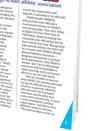
Allows you access to a digital customized MHSAA-version of Referee magazine to read wherever you’re on the go. MHSAA NASO members will receive exclusive MHSAA content through the digital magazine. Referee is the number one source of information for sports officials, written by officials. Each issue includes news columns and journalof-record reports and deep-coverage sport-specific sections complete with rule interpretations and caseplays.
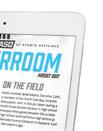
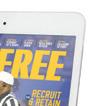
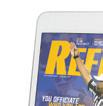
Referee Magazine (NASO Print Edition)
MHSAA members have the option to upgrade to the print version of the magazine, delivered to your mailbox every month. 84 pages of in-depth feature stories as only Referee can report them.
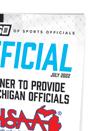
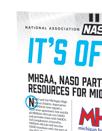


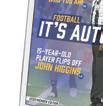

It’s Official Newsletter
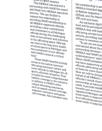








Monthly 16-page newsletter providing association news, information, caseplays and educational product discounts.
Marriott VIP Card
Provides discounted rates at Marriott & Starwoodbranded hotels within the US and Canada, subject to availability.













With the VIP card, NASO members may receive a room rate of up to 25 percent off the regular price at participating hotels where space is available. The Athletic VIP card must be shown at check-in.
Registration Discount to The Sports Officiating Summit Members only registration discounts.
Ump-Attire.com
10% discounts
Member Information & Consultation Program (MICP)
LockerRoom
NASO LockerRoom
Online newsletter includes latest news on NASO, officiating techniques and philosophy.




Interactive Sport Quizzes
Online access to sport quizzes that will help you improve your knowledge of the rules.

Officiating Resources
Special Members-only buying discounts on Referee and NASO publications. Savings up to 20%.
Provides help when you need to sort out an officiating related issue, includes both free information and free consultation with a knowledgeable person.
Address:
Phone:



Web:

Email:















2017 Lathrop Ave Racine, WI 53405
262-632-5448
naso.org
naso@naso.org
Publications Discounts & Savings Information Services Contact NASO wherever you’re on the go.
NASO covers common gaps in other officiating insurances, protecting you when other officiating coverages come up short.
NATIONAL ASSOCIATION OF SPORTS OFFICIALS
• Are the roles of each crewmember clear? That is usually a case of mechanics, but it’s one worth revisiting on a regular basis. Who has the ball? Who has the action around the play? Those processes often change as crews grow and offseason rules are enacted.
• Does the crew communicate? Every sport requires communication
among crewmembers. That isn’t limited to the pregame meeting. Rather, adopt sound in-game mechanics that allow effective communication among crewmembers before and after the play.
• Does the crew follow through? Teamwork among officiating crews need not end when time expires or the final out is recorded. Effective
teams use postgame discussions to reinforce positive aspects of their performance and identify areas that need attention.
The officiating crew may not be the team the crowd comes to see, but the need to function as a team is just as important. Use the above questions as a guideline to see where your crew stands.
MHSAA 2023-24 Officials Registration Underway
The Michigan High School Athletic Association is accepting registrations online or by mail for game officials for the 2023-24 school year.
The MHSAA registered approximately 8,300 officials for the 2022-23 school year as building back the ranks continues after the number of registrations decreased during the height of COVID-19.
All officials who register may sign up for up to two sports as part of their registration. Officials also will receive membership in the National
Association of Sports Officials (NASO), which comes with a variety of educational and training resources including a subscription to an MHSAA-branded “Referee” digital magazine, and the NASO’s Shield liability insurance that will provide $6 million in coverage for officials while they are working both MHSAA and non-MHSAA events.
For new and returning officials, a $70 fee covers registration for up to two sports. Officials may register for additional sports at $16 per sport.
To avoid a $30 late fee, all fall sport registration applications must be received by Aug. 16, 2023. Winter sports registrations must be received by Nov. 11 to avoid the late fee, and spring sports registrations must be received by March 17, 2024.
Online registration can be accessed by clicking “Officials” of the MHSAA Website. More information about officials registration may be obtained by contacting the MHSAA by phone at (517) 332-5046 or by e-mail at register@mhsaa.com.
I Help, You Help, We All Help
Here are two statements you’ve likely heard from a timer, scorer or chain crew member. “I’ve been doing this for 20 years. You don’t need to give me instructions,” or “I’ve never done this before. I don’t really know what I’m doing.”
Which sends the greater shiver up your spine?
We are all aware of the jobs of auxiliary personnel such as timers, scorers and chain crews. The question is: Are they aware of our expectations of them? Are you underutilizing some of the resources at your disposal?
The key is a good, clear pregame discussion with them.
If you’re met with a closeended statement like the been-there, done-that character, try disarming them with a response like, “I really appreciate experienced help. Just so I’m on the same page, let’s cover some situations.” In that way, you’ve
acknowledged their experience and led them to a place where they won’t be insulted by instructions.
Often those veteran helpers can provide valuable assistance, even an extra set of eyes, during tricky situations. For example, the down box operator on your chain crew can let you know there’s a flag on the far side of the field that you didn’t see. Take advantage of the help that’s available to you.
You’ll most often encounter the rookie at the sub-varsity level. In that case, it’s important to realize that a big part of your job is going to involve multiple explanations and a slower pace to make things go right. Don’t show irritation or impatience — that won’t help anything. Instead, anticipate less-experienced help at JV, freshman and youth games and make it your habit to arrive at the game site even earlier than usual on those days
for an extended pregame with your helpers.
Even “unofficial” helpers can be useful. Those might include ball handlers and scorekeepers who have kept a close eye on the game. Take, for example, a baseball game in which there is a question about the count. You check with your partner who has a different count than you. Now what?
A quick stroll over to the official scorer will likely answer the question. Ask in a way that covers both of you, such as, “Do you show the count as 2-2 or 3-2?”
Be certain that the person you ask for help is qualified to give it. Keeping your need for help on the down low in such situations is very important.
Good officials use every tool at their disposal to pull the game off without a hitch. Don’t overlook the fact that some might be living and breathing.
8 | REFEREE / MHSAA September 2023
2023 MHSAA Spring Sports Championship Officials
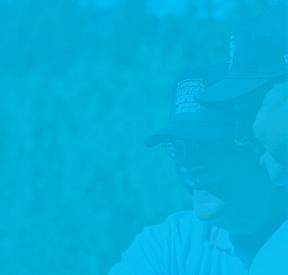


BASEBALL

Richard Anderegg, Norton Shores
Larry Anderson, Allen Park
David Baumgart, St. Clair
Brent Clark, Allendale
Kevin Courtney, Rodney
David Cuthrell, Bath
Jerry Haines, Freeland
Troy Miller, Jackson
Jim Moreno Sr., Holt
Kevin Price, Negaunee
Andrew Rieman, Jackson
Dakota Rutkowski, Midland
Eric Smith, Flushing
Andy Taylor, Burton
Courtney Todd, Canton
Scott Walendowski, Clinton
Township
Kevin Weber, Grand Rapids
BOYS LACROSSE
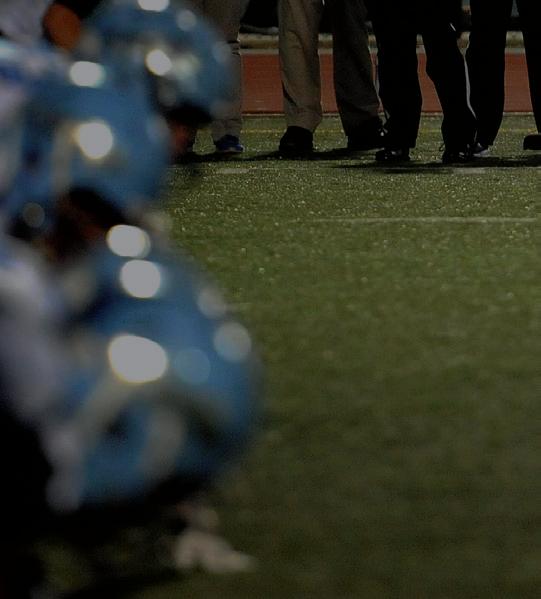
Brian Feeney, Lansing
Luke Griemsman, Grand Rapids
James Hebden, Plymouth
Steven Hedke, Grand Rapids

James McKillop, Clarkston
Kyle Nussdorfer, Holland
Rodney Suggs, Kentwood
Brett Svacha, Grand Rapids
GIRLS LACROSSE
Anne Acluche, West Bloomfield
Ellery Blasch, Alto


Sidney Gray, Grand Rapids
Brian Mishler, Portland
Marci Schaeffer, Eaton Rapids
Todd Schaeffer, Eaton Rapids
Crathman Stephens, Lathrup Village
Paige Winne, Lansing
GIRLS SOCCER
Luis Aguirre-Rivera, Niles
Bradley Barlog, Saginaw
Brandon Barlog, Auburn Hills

Branden Bennett, Big Rapids
Jake Brochu, New Hudson
Thomas Coatoam, Midland
Jason Greaves, Commerce
Township
Tyler Gregory, Livonia
Christian Haack, Arden
Andrew Hoard, Holt
Stephen Hungerford, Richland
Noah Litwiller, Byron Center
Pietro Loria, Sterling Heights
Patrick McDonnell, DeWitt
Robert Shewman, Hudson
Scott Stewart, Dowagiac
SOFTBALL
Robert Barrett, Leslie
John Carideo, Akron
Jerald Cook, Brimley
Ann Eisen, St. Clair
William Gomoluch, Deerfield

Kevin Haun, Portage
Michael Hunt, Detroit
Edward MacKool Jr., Sterling Heights
Scott Mellen, Midland
Theodore Simons, Wyoming
John Van Holstyn, Sanford
Robert Wurm Jr., Jenison
QUICK TIP
Many officials work extremely hard to get into good position to call a play, then undo all that good by missing the call because they make it too quickly. It’s the accuracy of the call — not the speed with which it’s made — that counts. It may seem like an eternity between the end of the play and your decision, but the extra second or two you take will pay dividends in the long run. Similarly, if yo u have to consult a partner in order to make the right call, do it. Don’t make it an every-other-play thing, but an occasional conference to pass on or gather more information will lead to more correct calls.


REFEREE / MHSAA July 2023 | 9
•Pre-Built Presentations •Turnkey Marketing & Social Media Kits
Guides
Downloads morefindofficials •Mentoring Plans •Inspirational Presentations & Video
ase Studies of What Works keep the officials you have SAYYESTOOFFICIATING.COM GET ALL THESE FREE RESOURCES AND MORE @ The free resource for recruitment & retention
•How-To
•Free
•C
LETTERS
‘What’s Going On?’
As a guy who played football for 17 years, and coached many more than that, I’ve noticed something that bothers me.
You’ll notice how many football skill players across the country are not wearing their uniforms correctly. Knee pads are no longer being used and the pants are literally folded up four to five inches above the knees! It seems every team has a few players doing this and it’s becoming worse.
The major problem is that high school and Pop Warner players are emulating this ridiculous, unsafe idea. Sooner or later, someone is going to have a serious patella injury. Bone bruises are extremely painful and take forever to heal.
Players used to pull the pants up just above the knee for comfort, but now it’s getting out of hand. Skill players literally look as if they are wearing bicycle shorts!
Mike McCaffrey Newport Beach, Calif.
THEY GET IT
THEY ALSO GET IT
“What point have we as a society reached when winning a youth basketball game is more important than teaching our children the value of sportsmanship? Who is going to want to officiate in the future if these incidents continue to escalate?”
— Charlie Tygard, guest columnist for The Tennessean

SNAP SHOT
“A lot of parents were concerned about the impact this bad adult behavior had on kids who are observing, and kids were sick of dealing with coaches and parents who are out of control. The impact on kids is no different than being in a house where parents fight all the time.”
— New Jersey State Assembly Member Victoria Flynn, co-sponsor of Bill A4444, which would increase penalties for assaulting an athletic official
Section, Row, Seat Number Please?
Umpires have a lot to keep track of, but the section, row and seat number of fans is not on the list. This fan was confused about her seat location and ended up on the diamond during a softball game at Bellevue (Wash.) College. She was ushered out of harm’s way by the third-base coach.
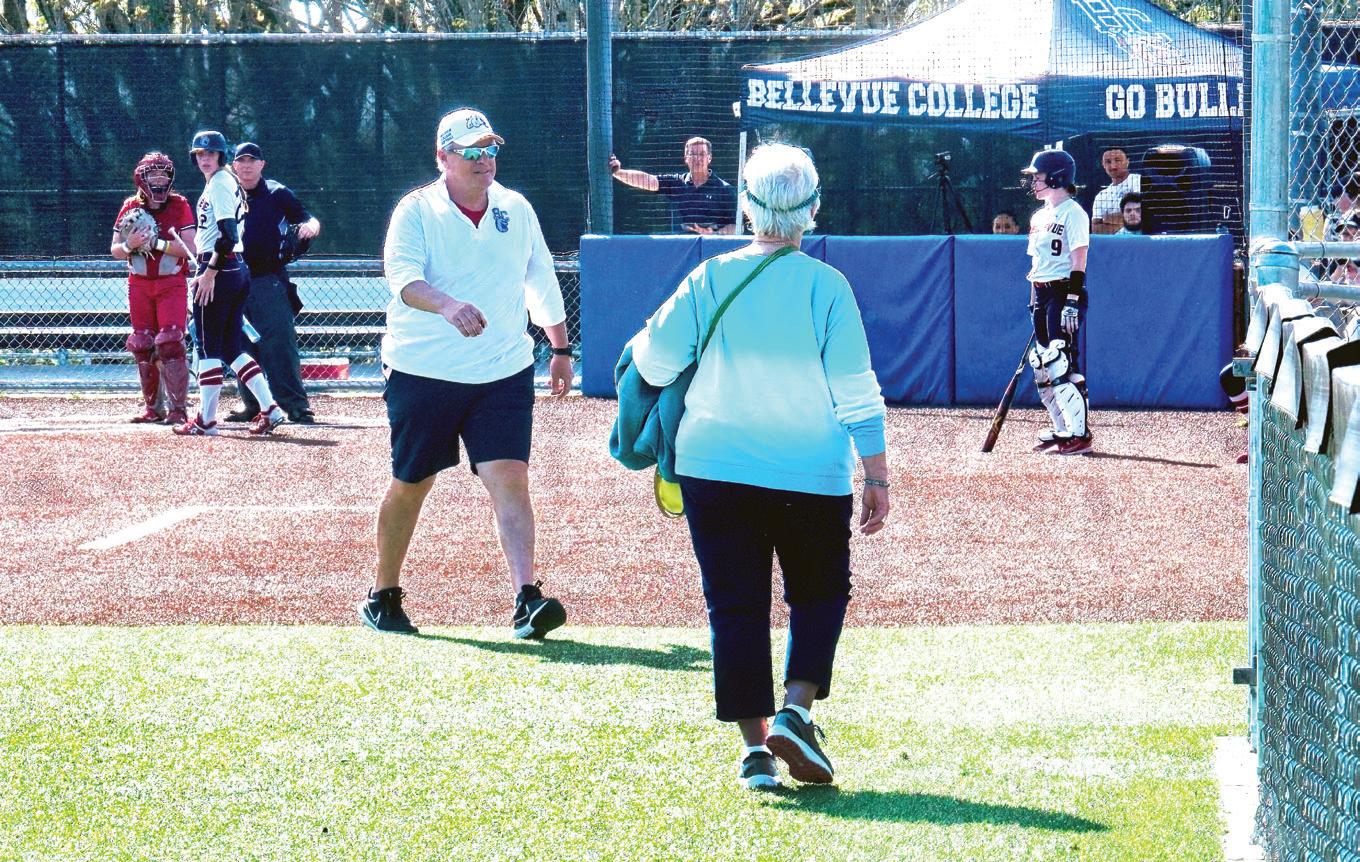
THEY LIKE US SURVEY SAYS
“These umpires don’t get enough credit. We have the benefit of reviews. We have the benefit of instant replay. But the amount that they are right, at game speed, is amazing. I tip my hat to them. It’s not an easy job.”
— Big Ten Network’s Scott Pose, during a second-round conference tournament baseball game between Illinois and Michigan
SURVEY OF 139 REFEREE READERS
you or an officiating partner ever walked off the court or field in the middle of an assignment? DALE GARVEY 14.4 % YES NO 85.6 %
SOURCE:
Have
GAG
WHAT PEOPLE ARE SAYING 10 | REFEREE September 2023 Tell Us What You Think Send email to letters@referee.com Send letters to: Editor, Referee, 2017 Lathrop Ave. Racine, Wis. 53405 Opinions expressed in “The Gag Rule” are not necessarily those of Referee. Unless otherwise stated, letters sent to Referee are intended for publication and become the property of Referee
THE
RULE

Texas Passes New Law to Protect Sports Officials
AUSTIN, Texas — On June 13, Texas Gov. Gregg Abbott signed into law a bill to deter assaults against sports officials. HB 2484 states a school district shall prohibit attendance at University Interscholastic League (UIL) athletic events for a period of one to five years for a spectator who engages in conduct that intentionally, knowingly or recklessly causes bodily injury to a sports official.
According to the law, the district may establish a process so the spectator can appeal to the district, and it can determine the facts associated with the conduct.
Texas Rep. Ryan Guillen, who filed the bill Feb. 17, and Sen. Morgan LaMantia were major sponsors of the legislation and instrumental in getting it passed.
“I had been aware of, and alarmed by, the increasing abuse of sports officials throughout the nation,” Rep. Guillen shared in a statement. “While engaging with my constituents, I heard firsthand about the challenges facing sports officials as well as the difficulties of school athletics in retaining qualified referees. After reaching out to stakeholders, such as TASO (Texas Association of Sports Officials), I was told that abuse of officials is the No. 1 controllable reason for sports officials leaving the avocation. I am a strong supporter of high school athletics and understand that officials are a vital component.”
THE WIRE
Automated Strike Zones Not Coming in 2024
Automated ball-strike (ABS) systems may not be deployed in MLB next season after all.
Commissioner Rob Manfred, who previously said he wanted to see it rolled out in 2024, moderated expectations following a midJune owners meeting. “I think there’s some sentiment among
The bill also requires a district to provide a peace officer, administrator or other security personnel to ensure the safety of a sports official until he or she leaves the site if a participant or spectator threatens violence or otherwise disrupts the duties of the sports official.
The legislation was signed into law two years after Texas passed a protection law prohibiting a student from participating in any future extracurricular activity if the UIL determines the student intentionally caused bodily harm to a sports official. Texas is also among the states with a law relating to the punishment of assaults against officials.
The new law, which was pushed for and supported by TASO, became effective immediately upon the governor’s signature.
“Our members are appreciative that the abuse of officials is finally being recognized and addressed,” said Michael Fitch, TASO executive director. “We’re not going to solve this problem overnight, but it is our goal to make more progress each year, not only through the legislative process, but other initiatives as well.”

“I trust that when parents and other spectators understand the consequences of their behavior under the new law, changes will take place,” Rep. Guillen stated.
the group that we made a lot of changes here,” Manfred said. “We ought to let the dust settle, and there are clearly unresolved operational issues with respect to ABS. Despite all the testing, we still have some things that are unresolved.” ABS is being used throughout Triple-A this season, with two methods being tested: one uses ABS for all calls and the other allows batters and catchers a limited number of challenges.
Collins Named NCAA Soccer Coordinator
INDIANAPOLIS — John Collins has been named the NCAA men’s and women’s soccer national coordinator of officials, the NCAA announced in early June.
As the national coordinator, he will oversee communication among officials, conference coordinators, coaches and NCAA national office staff and will help provide consistency in the interpretation of NCAA soccer rules and referee mechanics.
In addition, Collins will work with the Division I, II and III men’s and women’s soccer committees in the identification, training, selection and evaluation of officials for each championship. Collins succeeds Ryan Cigich, who recently retired from the role.
“I’m extremely honored to receive this appointment from the NCAA and excited to serve our student-athletes, coaches and soccer officials,” Collins said in a news release. “Thank you to Ryan Cigich for his leadership over the last 11 years, which has produced many advancements for college soccer officiating. I look
Former NBA Referee Mayfield Dies
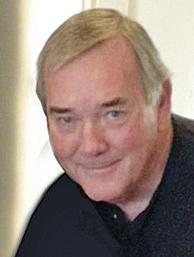
James “Woody” Mayfield, who officiated in the NBA and later went to work for a team providing officiating-related advice, died June 1 at age 74. A cause of death was not given. Following a decade of college basketball officiating, Mayfield
began a 10-year career in the NBA in 1988. He left the floor due to knee problems, but his officiating knowledge was put to use by the Dallas Mavericks, who hired Mayfield as a consultant. At the time of his death, Mayfield resided in Georgetown, Texas.
Pay Boost for Oklahoma Officials
The Oklahoma Secondary School Activities Association
THE NEWS
12 | REFEREE September 2023
See “Collins” p.10













Everything you need to know about the penalty enforcement rule change on running plays. Easy to understand language and Referee’s exclusive MechaniGrams® descriptions and caseplays scenarios. *NASO Member & Bulk Discounts Available. $495 * DIGITAL $695 * PRINT $895 COMBO 2023 rule change WHAT
PENALTY ENFORCEMENTS with Useful laminated reference card included for quick reference learn more at STORE. /football 5.5”x8.5” 12 pages
YOU NEED TO KNOW
Timing Device Lawsuit Reaches Settlement
WILMINGTON, N.C. — A dispute between competing manufacturers of automatic timing devices over patent infringement issues has ended with an out-of-court settlement.
The agreement ended a two-year legal battle involving Precision Time Systems Inc. and UStopIt LLC. Both companies manufacture devices used by basketball officials that stop the game clock when officials blow their whistles.
The settlement was announced in U.S. District Court for the Eastern District of North Carolina. The terms of the settlement were confidential. Both companies will continue to operate.
The case dates back to September 2021 when Mike Constabile, the president of Precision Timing System, filed suit against Keith Fogleman, Roger Ayers and UStopIt LLC alleging patent infringement and sought damages and relief.
Constabile, who resides in Oak Island, N.C., received the first patent for his device in March 1994. He began testing it at various recruiting camps the next summer, and in 1995 his device was used at the North Carolina state tournament. By the early 2000s, it was being used by various college conferences and a few years later in the NBA. It was first used in the NCAA tournament in 2015, but has not been used in the tournament in recent years.
THE WIRE
(OSSAA) approved a pay raise for high school officials working in the postseason starting with the 2023-24 school year. The OSSAA board of directors also voted June 7 to increase mileage reimbursement from 35 cents per mile to 65.5 cents per mile, matching the IRS standard rate. The details of the pay raise were not immediately released, but Associate Director Mike Whaley called it a “game-changing
Constabile received additional patents for his Precision Timing System in April 2011 and December 2019.
Fogelman, who resides in Raleigh, N.C., introduced the Whistle Stop system in April 2021. It was tested in empty gyms, then at a summer camp before being unveiled at three tip-off tournaments that marked the start of the college season. Several college conferences eventually adopted the Whistle Stop system, although it was still being tested.
In June 2021, Constabile sent Fogleman a certified letter claiming Constabile’s two most recent patents had been infringed. In July, Fogelman’s counsel responded and denied any infringement. That exchange precipitated the subsequent legal battle that ended with the recent settlement.
Fogleman told Referee his company was “100 percent open for business now” and that it would be business as usual.
“Our system is totally ready to go,” Fogleman said. “There’s nothing whatsoever that’s going to change us from doing anything we were doing before. We’re moving on.”
Constabile issued a statement that read in part: “After 18 months See “Settlement” p.15
move.” The increase was aimed at helping attract and retain officials. The action did not change regular season rates, which are determined by school districts.
Baseball Umpires Refuse to Work in League
Following an early June incident in which umpires were allegedly harassed and threatened, the Greater Taunton (N.J.) Amateur
Collins continued from p.8
forward to focusing on a process of continuous improvement for our officials through collaboration with the many stakeholders of our game.”
A former D-I goalkeeper, Collins has officiated numerous NCAA tournament games across all three divisions during his onfield tenure from 1993 to 2017. He officiated in multiple conferences, including the Atlantic 10, Big East, Colonial Athletic Association and The Ivy League.
For the past 10 years, Collins served as coordinator of soccer officials for several conferences, while also being a national assessor and registered assigner for the National Intercollegiate Soccer Officials Association. His role as an assessor has extended to the professional ranks, where he has evaluated match officials in Major League Soccer, the National Women’s Soccer League and the United Soccer League since 2017 for the Professional Referee Organization. Collins also continues to serve the U.S. Soccer Federation as an assessor and instructor in his role as a national referee coach.
Collins resides in Connecticut, where he works as a vice president with Pelican Capital Advisors.
Baseball Umpires Association (GTABUA) suspended providing officiating services to the Taunton West Little League for the rest of the season. Umpires said they were threatened with physical violence. “In my last 20 years of umpiring, I have never seen an incident like this ever in my life at any level of baseball,” umpire Paul Nadeau told WFXT-TV. The league said it suspended all of the offending persons from their
park indefinitely. But for the association, that was not enough. “It was unsafe, and I was not going to put those guys in that situation, and I had to make sure it wasn’t going to happen again,” said Dominic Damiano, president of the GTABUA.
Northwoods League Umpire Injured
A Northwoods League umpire was taken to the hospital after
THE NEWS
14 | REFEREE September 2023
Rivera, Former Coordinator of College Football Officials, Dies
FRESNO, Calif.
— Ken Rivera, who served as the coordinator of football officials for the Mountain West Conference, died June 8 of complications due to Parkinson’s disease. He was 74.
The conference released a statement in an Instagram post that read, “It is with heavy hearts we share the passing of Ken Rivera. Our deepest condolences to his wife, Marcie, his family and all of his friends.”
Rivera was the conference’s coordinator of officials from 2003-14. He also served the conference as an observer and officiating grader.
“Ken will be remembered as not only a great person, but a pioneer in officiating training and development,” said Walt Anderson, NFL senior vice president of officiating training and development, who, as Big 12 Conference coordinator of officials, worked with Rivera on the CFO West consortium. “It was his camp in Reno that was the inspiration for a whole new approach to in-person and onfield training, with special emphasis on technology and extensive use of video review and instruction that has provided so many with better
opportunities and resources to improve officiating.
“He was also a champion of collaboration between the conferences to help create a more consistent and national model for all of us to work together more effectively.”
Rivera brought 19 years of onfield work to the coordinator position. Rivera worked in the Pacific Coast Athletic Association (which became the Big West in 1988) as well as the Western Athletic and Mountain West conferences. He worked several postseason bowl games including the Holiday, Aloha, Humanitarian and Las Vegas bowls. He was on the staff of the original XFL for its lone season in 2001.
Rivera founded and directed several officiating camps, including the Reno Football Officials Camp and the Fresno Football Officials Camp.

In addition to football, Rivera officiated women’s college basketball for the West Coast and other conferences. A highlight of his career was working a college basketball game with his daughter, Michelle.
Rivera was closely involved with local associations in his area, helping with training, observing and mentoring football officials in the San Francisco Bay Area.
“Ken was not only a great
being struck on the head by a player’s bat during a June 13 game between Minot (N.D.) and Eau Claire (Wis.). Nick Hudlow, the crew chief and plate umpire, was accidentally hit by a player’s backswing in the sixth inning. The remaining two umpires continued the game while Hudlow was transported to Trinity Hospital in Minot. The team’s general manager told local news media that Hudlow was given a
CT scan that showed no swelling or bleeding on the brain and was discharged without serious injuries.
Coach Handed Four-Game Suspension
For verbally abusing the referee following his team’s loss in the Europa League final on May 31, Roma head coach Jose Mourinho was suspended by UEFA for his Italian team’s next
developer of football officials through the Mountain West and his camps and clinics, but he was more importantly a great human being,” Steve Shaw, national coordinator of collegiate football officiating, said. “He will be deeply missed.”
A graduate of California State University East Bay, he taught special education at Menlo Atherton High School in Northern California. He also coached boys’ high school basketball.
He is survived by his wife and four adult children.
Settlement continued from p.10
of litigation, as the result of a courtordered mediation, Precision Time Systems Inc. and Michael Costabile have reached a settlement with UStopIt LLC, Keith Fogleman and Roger Ayers in where Precision Time has granted a non-exclusive license to UStopIt LLC to Precision Time’s US patent #7,920,052. In this agreement both parties agree to the statement that this patent is valid and was infringed upon by the defendant’s products. As a result of this settlement Precision Time Systems has released UStopIt from any further claims regarding the referenced patent.”
four European games. Mourinho angrily confronted English referee Anthony Taylor in the stadium garage in Budapest, Hungary. A day later, Roma fans harassed Taylor and his family at the airport in Budapest.
VAR Announcements Coming to World Cup
During the 2023 Women’s World Cup in Australia and New Zealand, referees will explain
replay decisions to stadium crowds and TV audiences, similar to the NFL and MLB, ESPN reported in late June.
IFAB started a 12-month trial of announcing video assistant referee (VAR) decisions in international tournaments in January, with announcements made at the FIFA Club World Cup and men’s Under-20 World Cup.
SOURCE: ESPN, NORMAN TRANSCRIPT, KFYR-TV, THE OKLAHOMAN, WFXT-TV
REFEREE September 2023 | 15
BOB MESSINA
KICK STARTS
Reviewing the Rules Regarding Free Kicks
By George Demetriou
Although every game begins with a kickoff, free kicks occur much less frequently than passing or running plays. Add the fact the kicking game has many special rules and you’ll recognize an extra effort is necessary to master kick plays.
A kickoff is a specific type of free kick used to start either half and to resume play after a try or successful field goal. Two of the three kicking methods (placekick and dropkick) can be used on a kickoff. A punt may not be used for a kickoff

but may be used for the kick that follows a safety, which is from team K’s 20 yardline. A kickoff can never score.
The most visible kickoff difference between the codes is the spot of the kick: It’s team K’s 40 yardline for NFHS and team K’s 35 yardline for NCAA, if not relocated by penalty. When the ball is kicked, both teams must have all their players behind their free-kick (restraining) line except the kicking team may have the kicker and any holder over the line. Encroachment is a dead-ball foul in NFHS and a
live-ball foul in NCAA (NFHS 6-1-3; NCAA 6-1-2b). Under NCAA rules, if team K is offside, the penalty may be enforced from the previous spot or from the spot where the ball becomes dead in team R’s possession.
Formation. There are a couple of formation requirements on the kicking team and one on the receiving team. Team K must have at least four players on either side of the kicker. In NCAA only, all team K players must have been between the numbers after the ready-for-play signal.
FOOTBALL RULES, MECHANICS, PHILOSOPHY EDITOR: JEFFREY STERN jstern@referee.com 16 | REFEREE September 2023
BOB MESSINA
Although not mandated by rule, it is accepted procedure to have team K use a holder for a free kick if the ball blows off the tee twice. The kicker and holder are not subject to encroachment (NFHS) or offside (NCAA) rules.
In NCAA only, it is illegal for two or more members of the receiving team to intentionally form a wedge for the purpose of blocking for the runner except when the kick is from an obvious onside kick formation. A wedge is defined as two or more players aligned shoulder to shoulder within two yards of each other. There is no restriction on the initial formation before the ball is kicked, but the rule applies after the ball has been kicked, even if the wedge is formed after the kick has been caught (6-1-10).
Illegal kick. In NFHS, it is a dead-ball foul if a free kick is immediately driven to the ground or strikes the ground once and goes into the air in the manner of the ball kicked directly off the tee (pop-up kick) (2-24-10, 6-1-11). In NCAA, such a kick is legal , but the receiver has the same kick-catch and faircatch protection as if the ball were in flight (6-4-1f).
Fair catch. In NFHS, any receiver may signal for a fair catch while any legal kick is in flight. Any receiver who has given a valid or invalid fair-catch signal is prohibited from blocking until the kick has ended. In NFHS, the penalty is 15 yards , but it is 10 yards in NCAA. In NCAA, the prohibition is for the entire down, but only if the signaler does not touch the ball (NFHS 6-5-1 Pen.; NCAA 6-5-4 Pen.)
Fair catches are covered in depth in the column starting on page 16. The end zone. If the kick goes into team R’s end zone, the ball is dead in NFHS and it is a touchback. Force is not a factor. In NCAA, the ball is also dead for a touchback when the ball touches the ground on or behind the goalline untouched by R (NFHS 4-2-2d-1; NCAA 6-1-7).

Play 1: R1, standing on his five yardline, touches a kickoff as the ball bounces past him. The ball (a) rolls into the end zone where it is recovered by K2, or (b) bounces into the end zone, where K3 recovers before the ball touches the ground. Ruling 1: In NFHS, it is a touchback in (a) and (b). The ball is dead when it breaks the plane of team R’s goalline. In NCAA, it is a touchdown for team K in both (a)and (b). Because R1 touched the kick in the field of play, either team may legally recover. When team K recovers in team R’s end zone, it is a touchdown.

Play 2: A kickoff bounces off R1’s chest at his three yardline. The ball is at rest on team R’s two yardline when R1, in his haste to recover the ball, muffs and forces the ball into the end zone and across the sideline. Ruling 2: In NFHS, that is a touchback. Force is not an issue on kicks going into team R’s end zone.
QUICKTIP
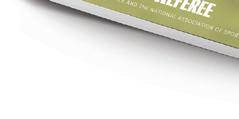
When the tackle or guard on the opposite side of the line false starts and is flagged by the wing official on that side of the line, the opposite wing should avoid throwing the flag. Doing so indicates the official is not locked in on his or her own side of the line. Moreover, it may cause confusion, leading to the belief the opposite wing has a different foul. If the responsible wing blanks out and misses an obvious false start,
DID YOU KNOW?
In early NFL rules, the full five yards was always assessed outside the five yardline when the defense was guilty of being offside. Starting in 1934, the defense was only penalized half the distance to the goal if the foul occurred inside its own 10 yardline. Four years later, the rule applied to any defensive foul inside the defense’s own 10 yardline, not just offside. The half-the-distance enforcement used today did not become the standard until 1940.
TOOLS






Penalty Enforcements Made Easy
Penalty enforcement is not the sole job of the referee. Everyone on the crew plays a part. Penalty Enforcements Made Easy simplifies the intricacies of enforcement for high school rules. Make quick and accurate enforcement decisions, even in stressful situations. Updated with rule changes for 2023, the book version sells for $21.95. A print and digital combo sells for $26.95. Find them at store. referee.com/ football.


REFEREE September 2023 | 17
| 13
TEST YOURSELF
In each of the following you are given a situation and at least two possible answers. You are to decide which answer or answers are correct for NFHS and NCAA rules, which might vary. Note: In kicking situations, K is the kicking team, R the receiving team. Solutions: p. 85
1. A1 runs for a touchdown on the final timed down of the first half. During the run, B2 is flagged for a personal foul.
a. Team A must decline the penalty in order to keep the touchdown.
b. Team A does not have the option of having the penalty enforced on the second-half kickoff.
c. Team A may have the penalty enforced on the second-half kickoff or on the ensuing try.
2. Under no circumstances is it legal:
a. For a team A lineman to receive a forward handoff.
b. To have more than one player in position to receive a hand-to-hand snap from between the snapper’s legs.
c. To use a punt as the free kick after a safety.
d. To have more than seven team A players on the line of scrimmage.
3. Quarterback A1 is under a heavy rush and scrambles toward the line of scrimmage. His passing arm and one of his feet are beyond the neutral zone when he throws a forward pass to eligible A2.
a. Legal play.
b. Illegal forward pass.
4. Fourth and six from team K’s 10 yardline. With team K’s punt in flight, K1 is flagged for holding at team K’s 10 yardline. R2 makes a fair catch at the 50 yardline. After the whistle sounds, R3 is flagged for a personal foul. As a result:
a. The fouls offset and the down is replayed.
b. Only the penalty for team R’s foul is enforced.
c. Only the penalty for team K’s foul is enforced.
d. Both penalties will be enforced.
5. Fourth and seven at team K’s 27 yardline. Team K is in scrimmagekick formation. Immediately at the snap, nose guard R1 contacts snapper K2. Punter K3 takes the snap, fakes a kick and runs. He is downed at team K’s 30 yardline.
a. R1 is not guilty of roughing the snapper because team K didn’t kick.
b. R1 is guilty of roughing the snapper even though team K didn’t kick.
Under NCAA rules, that results in a safety. The ball remained live and team R supplied the force that put the ball in the end zone.
Kicks out of bounds. If the ball is kicked so that it goes out of bounds untouched by the receiving team in the field of play, it is a foul on team K. The receiving team has four choices:
• A rekick after enforcement of a five-yard penalty from the previous spot.
• Accept the result of the play and take the ball at the yardline where it went out of bounds.
• Begin a new series 25 yards (NFHS) or 30 yards (NCAA) from the previous spot.
• Accept a five-yard penalty from the spot where the kick went out of bounds (NFHS 4-3-1, 6-1- 9 Pen , 6.1. 9 C; NCAA 6-2-1).
If penalties create a situation in which placing the ball the prescribed yards from the previous spot would put the ball in team R’s end zone, that option cannot be offered (NFHS 6.1.9H; NCAA 10-25f).
Play 3: A team R player muffs a free kick. An airborne team K player gets his hands on the ball and comes to the ground out of bounds. Ruling 3: The ball became dead when the team K player possessed it out of bounds. But because team R touched the kick before it went out of bounds, there is no foul on team K. It will be team R’s ball at the spot the team K player went out of bounds.
Other fouls. For fouls committed during free kicks, almost all penalties for fouls by team K have an option for enforcement. If team K commits a live-ball foul, other than kick-catch interference, team R may elect to have the penalty enforced either from the previous spot (and the down replayed) or at the subsequent dead-ball spot (NFHS 10-4-2 Exc.; NCAA 6-1-8).
The option to have the penalty enforced at the subsequent deadball spot still applies if there is a change of team possession. The only requirement is the ball belongs to team R at the end of the down. A
penalty for a foul by team K can be enforced from a spot of first/illegal touching if that spot is also the dead-ball spot.
First/illegal touching. When team K touches a free kick and is not entitled to possession, it is a violation termed first touching (NFHS) or illegal touching (NCAA). That occurs when team K is first to touch the ball after it has touched the ground, but before it has traveled 10 yards, or before a team R player touches it. That violation gives team R the option to take the ball at any spot of first touching, as long as it does not touch the ball and subsequently foul (NFHS only), or there is an accepted penalty for a player foul, or offsetting fouls (NFHS 6-1- 7 ; NCAA 6-1-3).
Play 4: K1’s kickoff goes five yards and is downed by (a) R2, or (b)K3. Ruling 4: In both cases it will be team R’s ball, first and 10 at the spot of the recovery. In (b), team R will choose to take the ball at the spot of first (illegal) touching.
Play 5: K1’s kickoff goes eight yards and is muffed by R2. The ball is then downed by (a) R3, or (b) K4. Ruling 5: In (a), it will be team R’s ball, first and 10 at the spot of the recovery. In (b), it will be team K’s ball, first and 10 at the spot of the recovery. First touching or illegal touching only applies when team K touches the kick before team R and prior to the ball traveling 10 yards. T he ball travel ing 10 yards is one of the requirements for team K being eligible for recovery
Play 6: K1’s kickoff is short and high and goes about 20 yards. There are no team R players near the descending ball. The ball is caught by K2. Ruling 6: In NFHS, that is kick-catch interference. It is not first touching because the ball traveled beyond team R’s free-kick line. In NCAA, there is no foul because a team R player was not in position to catch the ball. Team K keeps the ball, first and 10 at the spot of the catch.
George Demetriou has been a football official since 1968. He lives in Colorado Springs, Colo. *
FOOTBALL 18 | REFEREE September 2023
THE BEST-SELLER IS BACK WITH AN ALL-NEW EDITION!



THE EVOLUTION OF ENFORCEMENTS
The best-selling penalty manual is fully updated for 2023 with all the new NFHS rule changes. Explore multiple play scenarios with a direct visual representation with Referee’s exclusive MechaniGrams® and flow charts. Handy penalty summary and signal chart also included. also

$1895 *






















$2195 * PRINT $2695 COMBO all 2023 rule changes included

Size: 8”x9” Pages: 160

REFEREE September 2023 | 15
ORDER YOURS TODAY! STORE. /FOOTBALL *NASO Member Discount
DIGITAL
Available.
CASEPLAYS
Missed Field Goal
Play: Fourth and five on team R’s 30 yardline. K1’s field goal attempt is short of the mark and the untouched kick goes (a)out of bounds on team R’s 10 yardline, or (b) into team R’s end zone. Ruling: Under NFHS rules, in (a), it will be team R’s ball on its 10 yardline. A field goal is a scrimmage kick and it is treated the same as a punt that goes out of bounds. In (b), it’s a touchback, giving team R the ball on its 20 yardline at any point between the hashmarks. If the game is played under NCAA rules, in (a) and (b), it will be team R’s ball on its 30 yardline at the spot of the previous snap (NFHS 6-2-7, 6-3-1b; NCAA 4-1-3c, 8-42b, AR 6-3-4 III, AR 8-4-2 I-IX).
Touchback or Safety
Play: First and goal on team B’s 20 yardline. A1’s legal forward pass is intercepted by B2 in his own end zone. B2 runs toward one sideline, then backtracks to the other, in an attempt to bring the ball out of the end zone. He is tackled with the ball never breaking the plane of the goalline. Is that a safety? Ruling: That is a touchback. The force (NFHS) or impetus (NCAA) that put the ball in the end zone was the pass. Because the ball in B2’s possession never returned to the field of play and the ball became dead in his own end zone despite his attempts to advance, it is a touchback (NFHS 8-5-1, 8-5-2; NCAA 8-6-1, 8-7-2).
Quick Reactions
Play: All team A players move to the line and are set. A split second after center A1 legally moves the ball to snap it, B2 times the snap perfectly as he reaches in and knocks away the ball from A1. The ball hits the ground and B3 recovers. Ruling: In NFHS play, that is an encroachment foul on B2 because he touched the ball before the snap ended. Under NCAA rules, B2’s act causes the ball to remain dead (the snap is disallowed) and he is charged with a contact foul for offside. Until the ball completely leaves the snapper’s hands, it is illegal for any team B player to touch it (NFHS 7-1-6; NCAA 2-23-1b-f, 7-1-5a1, AR 7-1-5 II).
(Fair) Catch of the Day
By Tim Sloan
Oneof the safety features built into the rules is the fair catch. It is designed to protect the receiver of a free or scrimmage kick from injury after he has caught the ball but before he can protect himself from an onrushing opponent. In exchange for that protection, the receiving team forfeits its right to advance the ball or otherwise participate in the play before the catch is made. After a fair catch is made, the ball is dead and the receiving team has the choice of snapping or (NFHS only) making a free kick from anywhere between the hashmarks and along the line of the dead-ball spot (NFHS 6-5-2; NCAA 6-5-1a, 6-5-2).
There are three requirements to make a fair catch: The kick must be a legal kick that travels beyond the neutral zone, the receiver must make a valid fair catch signal while the ball is in flight and the catch must be made in or beyond the neutral zone in the field of play. When a fair catch occurs, the ball becomes dead when either team gains possession (NFHS 6-5-2, 6-5-4; NCAA 6-5-1c, e).
A valid fair catch signal is the full extension of one arm above the head with a side-to-side motion of the hand. If an invalid signal is given, the receiver forfeits his right to be protected when the catch is made, but the ball still becomes dead (NFHS 2-9-1; NCAA 6-5-2). In NFHS only, that is a foul with a five-yard penalty enforced under post-scrimmage kick enforcement. Also in NFHS, a signal made by the runner after the ball has been caught or recovered is an illegal signal, also resulting in a five-yard penalty (2-9-3, 2-9-5).
In NCAA, during a free kick, if a team R receiver gives a valid fair catch signal behind team R’s 25 yardline and catches the ball behind team R’s 25 yardline, the ball belongs to team R at its own 25 yardline. If any other receiver catches the ball in that instance, the ball is next put into play at the spot of the catch. If a team R receiver gives any waving
signal that does not meet all of the requirements of a valid fair catch signal and subsequently catches the ball behind team R’s 25 yardline, the ball belongs to team R at its own 25 yardline (6-5-3a Exc.)
Play 1: Fourth and 10 from team R’s 33 yardline. K1 punts and R2 makes a valid fair catch signal while the ball is flight. It is caught by R2 (a) on team R’s 20 yardline, (b) in team R’s end zone, or (c) on team R’s 35 yardline. Ruling 1: Fair catch in (a). It is a touchback in (b). It is not a fair catch because the catch wasn’t made in the field of play. It is also not a fair catch in (c) because the ball didn’t cross the neutral zone. Since R2 made a valid signal, however, the ball is dead, and team R will put the ball in play from its own 35 yardline.
Play 2: K1 punts and R2 is at team R’s 20 yardline. While the ball is in flight, R2 (a) waves both hands above his head and catches the ball, (b)gives a valid fair catch signal but R3 catches the ball, or (c) gives a valid fair catch signal but recovers the ball after it is grounded. Ruling 2: It is not a fair catch in any case. In (a) it’s because the signal was invalid, in (b) it’s because the player making the signal was not the one who caught the ball, in (c) it’s because the ball was recovered, not caught.
There are blocking restrictions for a player who makes a fair catch signal before the ball is grounded. In NFHS, the player may not block until the kick ends. In NCAA, the restriction applies if the player does not touch the ball and lasts until the down ends. The penalty is 15 yards in NFHS and 10 yards in NCAA (NFHS 6-5-1; NCAA 6-5-4).
In NCAA only, if a team R player makes a valid fair catch signal, the unimpeded opportunity to catch a kick continues if the player muffs the kick and still has an opportunity to complete the catch. If any team R player subsequently catches the kick, the ball belongs to team R where the player making the signal first touched it. The protection terminates when the kick touches the ground (6-5-1b).
FOOTBALL 20 | REFEREE September 2023
Play 3: Team K’s punt is rolling at team K’s 45 yardline. R1’s hands (a)are below his shoulders with no waving motion, (b) are below his shoulders and are in a waving motion, or (c) are just above the shoulders with no waving motion. Ruling 3: In NCAA, invalid fair catch signal in (b) and (c). No foul in (a) since the hands are not waving. Team R would retain the right to recover the ball and advance. In NFHS, none of the actions specifically match the definition of a valid fair catch signal.
However some interpreters may advise that one, some or all of the actions are legal or illegal.
Remember, the ball will always become dead when either team gains possession after a valid or invalid signal. By keeping that in mind, you can minimize risk to the players and sort out plays that aren’t a simple kick and a catch.
Tim Sloan, Davenport, Iowa, is a high school football, basketball and volleyball official, and former college football and soccer official. *



NCAA Rule Change Creates a Difference
When the NCAA Football Rules Committee approved a change to rule 3-2-3a for the 2023 season, it created an interesting and significant difference in the codes. The rule involves whether or not acceptance of the penalty for a live-ball foul during the last timed down of a period results in the period being extended.
In the MechaniGram, team A scores a touchdown during the last timed down of the first quarter. But team A is flagged for holding during the down. Team B will have to accept the penalty to negate the score.
In NFHS, the 10-yard penalty is enforced from the spot of the foul and the quarter is extended for an untimed down (3-3-3a).
But if the game is played under NCAA rules, the 10-yard penalty is marked off from the spot of the foul, then play resumes at the other end of the field to start the second period. If the foul occurred during the last play of the second or fourth period, however, there would be an untimed down and period extension.
Under both codes, if there had been no foul on the scoring play, the period would be extended for the try. *
A1 POINT OF SNAP RUN HOLDING A1 HOMETIMEVISITOR PERIOD: 1 DOWN: 4 TO GO: 8 4
Get Well-Read on the Red Zone
By Jon Bible
Officiating can be more difficult when team A is inside team B’s 20 yardline, or what is commonly referred to as the red zone. Not only is there a greater chance of a scoring play or touchback, but the area is more compressed the closer team A gets to the goalline. That can make monitoring what the players do harder, especially if the crew is smaller. What follows are some topics crews need to think about and, ideally, cover in their pregame. Since not all crew members will always be able to get to the game site early enough, that meeting may not be as detailed as it should be. But because red zone officiating may affect the outcome of the contest, it needs to command the crew’s attention. Mechanics won’t be addressed in great detail because there are too many variables depending on crew size.
First, two general propositions. Because 22 players may be darting around in close proximity, especially

on pass plays, we need to stay still longer so we can see more. Seeing more and processing it better the less our eyes bounce around is a truism that applies all over the field, but especially in the red zone. We must also know our responsibilities and carry them out because we can’t expect as much help from crewmates as we can outside the red zone. Everyone has his or her own chaos to manage.
With at most 30 yards within which to operate (red zone plus end zone) — less as team A approaches the goalline — receivers tend to run more crossing patterns, passes are often shorter and quicker and there’s a greater likelihood of receivers and defenders contacting each other. It’s hard enough for us to decide whether such contact is legal when players are more spread out, but it’s especially challenging in the red zone. It’s particularly tough to rule on bangbang plays in which contact occurs just as the pass arrives.
Given all of that, line of scrimmage and any deep officials
must be on the same page in terms of who’s watching which players and zones. Whatever happens, we need to try to be sure we’ve got at least one set of eyes on it.
We must know whether a first down can be made short of the goalline so we can properly cover the play if a runner is downed there. If the crew has deep sideline officials, they must coordinate with line of scrimmage officials so they’re not stepping on each other or, worse, both backing off because they think the other will cover the play. Assuming it’s in their mechanics, line of scrimmage officials must know when to release to the goalline without sacrificing their ability to rule on whether a pass is forward or backward or is first touched beyond or behind the line of scrimmage.



On goalline plays, officials must be aware of the possibility of “double action.” As seen in the PlayPic, that occurs when a runner’s arm, with the ball in his possession, falls across the line, when in reality it was up with the ball short of the line when

FOOTBALL
18 | REFEREE September 2023
a body part was down. Officials covering those plays must also be thinking about whether the ball broke the goalline plane in the runner’s possession before it became loose or a body part was down, whether the runner got the ball over or inside the pylon — if that’s necessary for a score or is entitled to the goalline extended if it didn’t — and where to spot the ball if the runner is down short of the line or goes out of bounds.
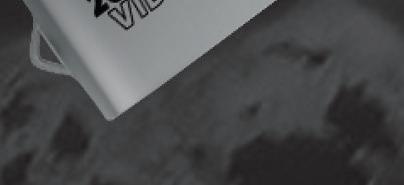



The closer team A gets to the goalline, the more likely it is rules regarding which team is responsible for a loose ball being in the end zone, and what should happen depending on who does or doesn’t recover it or it goes out of the end zone, will come into play. So the officials must be on top of them as well as who’s ruling on which aspect of the play.


If there’s a pileup at the goalline, is there some way for the umpire to unobtrusively signal to the line of scrimmage officials that he sees the runner with the ball in the end zone?

In days gone by, the umpire grabbed the lanyard or tugged the shirt if using a finger whistle. It was then up to the line of scrimmage officials to decide whether the runner was down earlier or scored. Many associations frown on the “secret signal” these days.


In an NCAA game, on a missed field goal, the crew must know whether team R will snap on or outside the 20 yardline. If team A is backed up on its own goalline, the crew must know who should be looking where if a potential safety occurs. If time is an issue, we must be alert to whether a coach is trying to call a timeout, which is harder when we’re farther away from the team area.

Penalty enforcement in the red zone may be half the distance to the goalline instead of the usual yardage. That can be easy to screw up if we’re not thinking. In some cases we must know if a foul occurred in the end zone or field of play. And if there’s a



























previous spot foul or incomplete pass, it’s even more important than it is outside the zone to know where the ball was snapped because the closer team A gets to the uprights, the more the difference in angle may matter if we don’t spot the ball correctly and there’s a field goal attempt.






Finally, it’s bad enough to miss a foul or make a phantom call outside the red zone, but it’s worse (for example) to erroneously negate a touchdown due to a phantom holding call or allow one when we don’t see a guard drag a defender down at the point of attack. And for sure, don’t change your foul-worthiness standards in the red zone, i.e., by calling holding at the eight yardline for action that you’ve been allowing at midfield, or late in the fourth quarter when you’ve ignored it up until then.









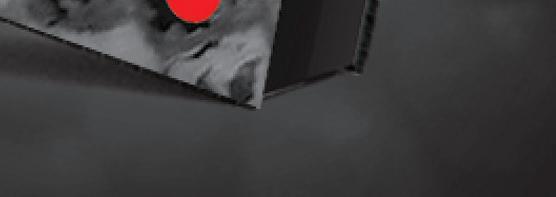




Jon Bible is a replay official in the Southeastern Conference. A resident of Austin, Texas, he formerly officiated collegiate and pro football. *

Brought





































to you by Tim Kiefer and MIBTonline.com, the latest edition of “High School Officiating Best Practices” focuses squarely on the 2023 high school rule changes, including all the significant changes and updates. Additionally, Tim takes you through all the 2023 Points of Emphasis and fully reviews last season’s critical rule changes.
new Enforcements & Exceptions
Out of Bounds Changes
Grounding Clarifications
Pass Interference Removal •And More! Fouls All Player Legal Intentional And • • • • • • ANYWHERE! Enhanced HD Video delivered via USB Drive
L
HIGH
RULES ORDER YOURS TODAY! STORE. /FOOTBALL $2495 CLARIFIED & EXPLAINED WITH VIDEO PLAYS TAKE IT
•Fouls Behind the Line of Scrimmage Explained •All
•Player
•Legal
•Intentional
AL
NEW 2023
SCHOOL
Following a Fumble
This player seems poised to recover the loose ball. If so, will he try to advance it? In that case, the officials will have to observe the blocking by his teammates.
What if he muffs it into the end zone? If the ball goes out of bounds in the end zone or becomes dead in team B’s possession, it’s a safety in NFHS because the muff provided a new force. In NCAA, the initial impetus is not expended, so it would be a


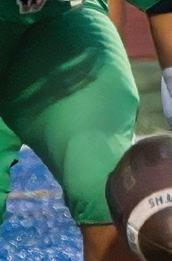
touchback under those conditions. In either code, it would be a touchdown for team A if it recovered in the end zone.




It’s possible team A might get another crack at the recovery and possible advancement. In NCAA, if the play occurred on fourth down, the only team A player who could recover and/or advance would be the player who fumbled. If any other team A player recovered, the ball would become dead immediately.

The team in white was driving for a touchdown, but a fumble has created a whole new set of possibilities.

Team B could recover and/or advance just as in any other play. In NFHS, anyone could recover and/or advance.
If the defender recovered the ball, momentum could carry him into his own end zone. If the ball then became dead in the end zone, team B would begin a new series at the spot of the recovery. Beanbags would already have noted the fumble, but additional bags would have to note the momentum spot.
FOOTBALL 24 | REFEREE September 2023
DALE GARVEY
COMPLETE GUIDE TO FOOTBALL SEASON NEW for 2023








Full Color Photos & Diagrams


Latest NFHS Rules & Mechanics Changes











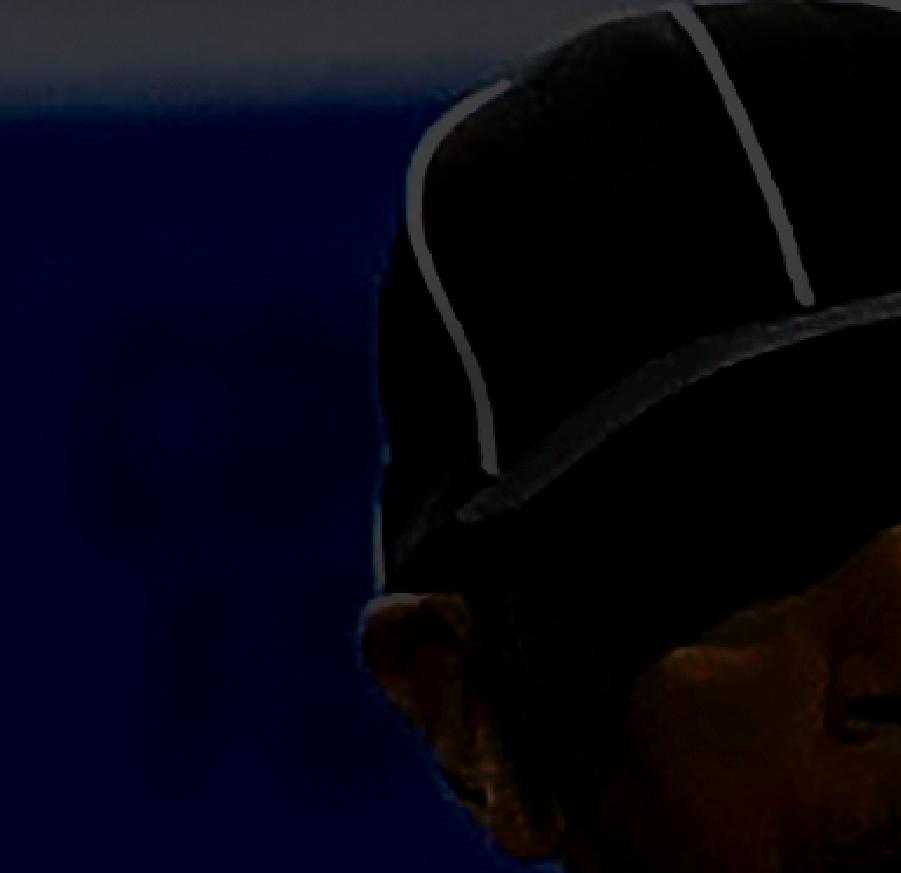































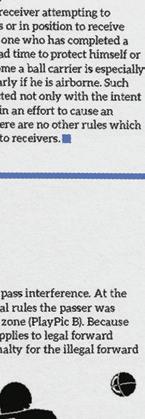










This is the comprehensive guide you need to be ready to work High School football this season. All new and recent rule changes broken down, Points of Emphasis clarified, and tough situations made simple – all in a full-color, magazine-sized annual guide. Includes hundreds of caseplays and quiz questions!
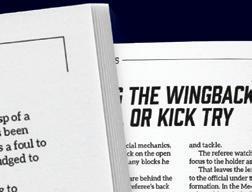


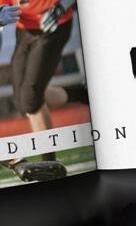





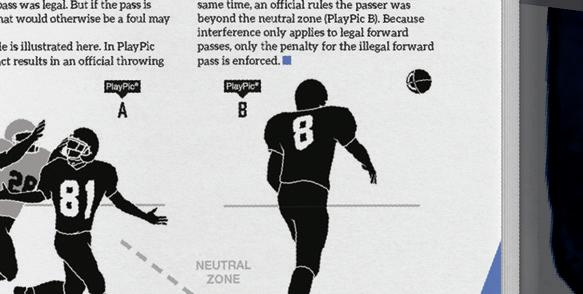
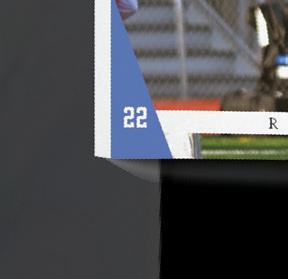




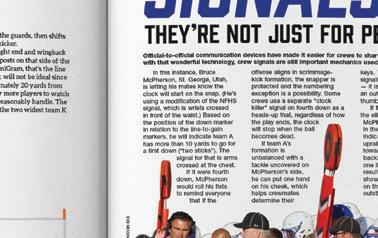



HandPicked Articles learn more at STORE.

$1795

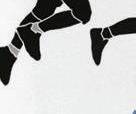































$1895

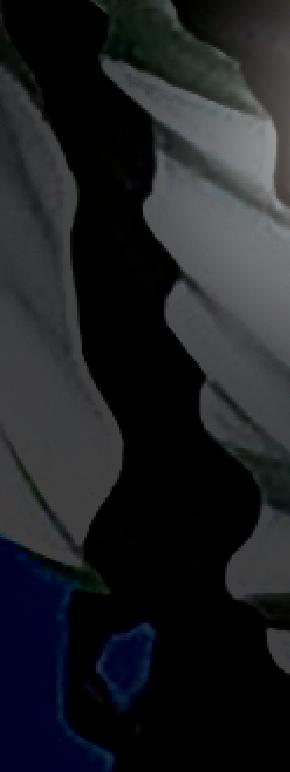


$2395





/FOOTball *NASO discount available.
* DIGITAL PRINT
COMBO
EDITION
* SIZE: 8”x11” PAGES: 96
By Karen Swanner
STRESS LESS
Officials have made a conscious decision to be part of an avocation that by nature is high intensity, demanding and a source of stress in a very challenging environment. The stress we feel can be positive or negative, motivating or debilitating, and our emotional and physical reactions are a direct result of our perception of the situation.


Simply put, stress is the response to any demand made on our body and mind. The trigger that prompts stress is called the stressor. It is not what happens to you, but how you react to it. Our reaction to what constitutes a stressful situation for an official is based on a set of internal and external factors. It is indicative of how the official values that situation or that official’s
interpretation of it. The cognitive process officials use to appraise or evaluate a situation is often based on their values, beliefs, knowledge, attitudes, personality, emotional state, preparation and experience. The level of stress officials feel can differ game by game and year to year.
The question is, why can some officials handle stressful situations and others cannot? Why are some high-intensity games viewed as invigorating to officials, while some view them as a place of torment? Is stress management innate, or do these officials who are perceived to be more composed and in control simply have more practice dealing with emotional and physical demands? Are an official’s mental and physical
26 | REFEREE September 2023
THERE’S NO ESCAPING THE PRESSURE, BUT IT DOESN’T HAVE TO COOK YOU
stress management capabilities based on experience, how an official assesses and manages a stressful situation or a set of tools officials possess to create that balance between environmental demands and motivation?



“One of the things we talk about in sports psychology is something called stress inoculation, preparing for it and knowing it is going to happen,” explained sports psychologist Dr. Lindsay Ross-Stewart. “Referees need to understand the expectations, be prepared and to talk about them, understand how they will be feeling and what is their strategy or plan in high-pressure moments, to stay focused and put themselves back in the game.




“The first step is to acknowledge that you will be facing those challenging situations, understand what you are thinking, how you are feeling in those moments and develop a plan that is unique to you.”
While most conversations about stress are in a negative context, the stress or pressure our body and mind feel are often the motivation we need for success. Often, we need those challenges and opportunities to make critical decisions in a highpressure environment. Some of us will rise to the occasion, while others will deteriorate. If we can learn to manage what our mind and body are telling us, we have a better recipe to manage the circumstances in the game. In this article, we are going examine what stress is, how and why our bodies and minds react in a certain way, the difference between negative and positive stress, and explore tools to manage stress and turn it into a performance-enhancing skill. In simplest terms, stress
management equals performance enhancement.
who you are and how you react to stress will help you better manage stress, which leads to better performance on the court or field.
You must recognize and understand what type of official you are. Are you excited to step on the field, or approach certain games with trepidation? Are you overactivated with tons of energy or composed to a fault? Do you feel your mind running wild or are you focused? Do you see what your mind and body are experiencing as crippling, or just a challenge or roadblock that must be navigated? Do you understand the difference between internal and external stressors, where they come from and how you react to them?
Do you need these feelings to perform, or do they overwhelm you so that you underperform?












It is essential we understand who we are and how our bodies and minds react to stress, as it can have a profound impact on our mental and physical health, game performance, focus, job satisfaction and intention to stay in or leave the avocation. Self-reflection is a technique we can use to help understand what type of official we are, so we understand how we react to a stressor, the skills we possess to manage it and what we need to change to improve our game performance in the future.
While we spend a lot of time evaluating players, coaches and even crew behaviors, most of us don’t take the time necessary to evaluate our own. Self-
REFEREE September 2023 | 27 HESTON QUAN
Understanding
Chris Aragon, Mission Viejo, Calif.
reflection is a tool that simply helps us mindfully evaluate our own behaviors so we can understand why we feel like we do, react the way we react and make the choices that we make. It is an opportunity to look at ourselves from a neutral standpoint in a quiet place, with no judgment, just an opportunity for an honest personal evaluation. Self-reflection also helps us create self-awareness, which assists us to better adapt to changing situations, make progress toward personal changes and assert thought and emotional control. Further, it allows for development of constructive responses both internally and externally, influences positive performance, helps build mental toughness and keeps us on the path to achieving our goals.
Postgame Journaling

Journaling is a specific tool officials can use for self-reflection. It is especially important not only as a resource to vent, but also as an instrument to compare our reactions, choices, decision-making and growth — or lack thereof — during our journey as a sports official. Journaling can be used for

both emotional expression about a specific stressful situation or a vehicle to evaluate our thought processes and emotions about that situation or event. This type of written disclosure can bring clarity, understanding, closure and individual positive growth to the event. Journaling should be done postgame. While evaluating the situation is key, it is also important to express how we felt, the decisions we made, the outcome of our decisions and if there was anything we would have done differently. Journaling is an effective tool for emotional expression, reflection, growth and development, which should be used consistently throughout our officiating careers. Keeping a journal allows us to have a written record, to which we can refer to see how we have changed our choices, emotional reactions, approach and how we have developed as officials.

Stop Negative Thoughts

When it comes to decisionmaking and stress, research has shown the No. 1 stressor for officials is making an incorrect call, followed by verbal abuse from





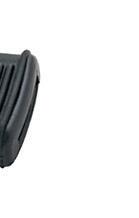
coaches and players, and making a controversial call. It makes sense when we make an incorrect call it often becomes controversial, and we most likely get verbal abuse from players and coaches. Our reaction to that situation and those physical and mental stressors, however, often depends on how we recognize and deal with our physical and mental reactions. But what if it’s not really an incorrect call? Who has made us think it is incorrect? What if it is just the right call someone doesn’t agree with? Do we give ourselves kudos for having the guts to make the right decision in that moment of truth? Or are we beating ourselves up because a coach, player, team or even a member of our crew vehemently disagrees? Is this a matter of a lack of knowledge, preparation, focus or not being able to manage the stress of the moment?
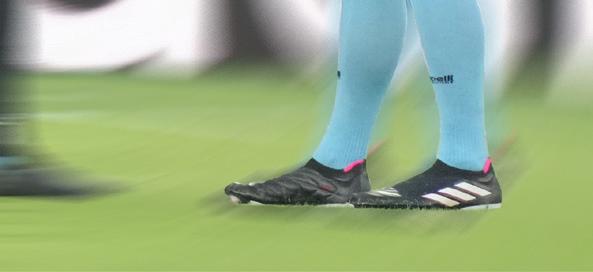






All of us have found ourselves in that situation at one time or another. Experience is a key factor in helping us do the right thing in those moments. But being able to accept that potential mistake, park that negative thought and review it during the postgame is a technique that will keep us on the right track to recovery from that stressful situation.
“Thought-stopping and parking,” a strategy used in cognitive behavioral theory, is often easier said than done, as thoughts of, “Crap, did I really just do that?” run wild through our minds as we beat ourselves up for a presumed mistake. The idea is to help us stop those negative thoughts in their tracks by blocking them with something that resonates with a positive emotion.
Using key words, phrases, symbols or images that either stop us or help change our thought process more positively can help us move past that moment. It could be as simple as saying the word “Stop” or another keyword that has a meaning to us, imagining a stop sign in our mind,
28 | REFEREE September 2023 STRESS LESS BILL GREENBLATT/UPI
Verbal abuse from coaches and players is the No. 2 stressor for officials. No. 1 is making an incorrect call.
Joe Dickerson, Los Gatos, Calif.
carrying a photo of a loved one, or going to a mental place that gives us self-affirmation.
This does not mean that you never go back and address your potential mistake, but reviewing your decision making and outcome should be done postgame, so you can learn from your mistakes and use them as an opportunity to grow. If those negative thoughts are not stopped, they will continue to progress and undermine your ability to successfully manage your game now and in the future.
FIFA futsal referee instructor and professional indoor soccer official Shane Butler also reiterated the effectiveness of thought-stopping and parking. He explained that while the use of VAR in professional indoor soccer is an amazing tool to get calls right, stopping the game immediately to review decisions can often lead to heightened individual stress and conflict with the crew.
“Learning to immediately accept that you made an incorrect call or having to overturn your partner’s decision can often be a very stressful part of professional indoor soccer,” Butler said. “This past season, I had back-to-back advantage calls that led to goals, and my partner did not agree. I started to question myself, as I had set the bar for consistency. It took me a couple of minutes to regroup and chase my negative thoughts out of my head. I used words like ‘regroup, focus, move on, can’t change it.’”
There was time later for deeper reflection on the calls. Butler said he discussed it with his crew at halftime and later reviewed game tape to analyze how he could have handled the situation differently.
Mind/Body Connection
Knowing how to stop negative thoughts is part of the process, but for officials to be better equipped to

handle stress, they first must be able to recognize their physical and mental reactions to it. An official’s physiological reactions to stressors can be in the form of increased heart rate and blood pressure, flushed cheeks, excessive sweating, trouble breathing, upset stomach, light-headedness and nervous movements. From a cognitive aspect, officials may feel a sense of insecurity, fear, anxiety, agitation, grief, loss of focus, loss of concentration, lack of effort, lack of perseverance or even excitement.
What officials need to understand is mental and physical reactions go hand in hand. Performance is often determined by the combination of physiological and psychological factors, as a change in one produces a change in the other. Physical and mental performance are rarely exclusive.
For example, if you come into a game in peak physical condition, your mind does not have to think about physical performance. But if you are not as physically fit as you should be, get injured during the game or are too tired to move into the right position, your mind may become so focused on your physical performance that you will start to lose your game focus, concentration and the ability to effectively make decisions, and thus manage the game.

On the other hand, if you are
experiencing some sort of mental stress, whether you brought it with you to the gameor it is a result of the game environment, your lack of ability to perform mentally will lead to a lack of effort, perseverance and physical mobility. However, if your mental performance is sound, your physical performance will often be effortless
“The key to stress management is keeping the mind/body connection intact,” said Dr. George Carlo, a sports performance coach who has worked with many collegiate and professional athletes. “What we are looking at is the autonomic nervous system response. When the parasympathetic nervous system (rest and digest) is dominant, your mind/body connection is intact. When the sympathetic nervous system (fight or flight) is dominant, it breaks the mind/body connection.
“One of the things that is helpful in the heat of the game is the idea of ‘next play,’ looking forward and not letting what has already occurred linger. It is like an autonomic nervous system reset. The way our mind/body connection works is that things that have already occurred move over into our left brain, which is our analytical side. That side



REFEREE September 2023 | 29 VICTOR CALZADA
If any negative thoughts about calls should emerge during a game, it’s important to put those aside until later lest it add stress that distracts from the task at hand.
Jerome Chavez, El Paso, Texas.
of the brain is known to stimulate that sympathetic stress. Saying words like ‘next play’ or anything that enhances a parasympathetic function are helpful. They put us in the best position to succeed.”
Relaxation Techniques
Managing both your mind and body’s reactions to environmental and external stressors is key. Using autogenic training and progressive relaxation techniques can be highly successful complimentary tools that work together to help manage, relax and refocus both the mind and body at the same time. Autogenic training is a regenerative skill that helps tap into the healing powers of the mind and body. It is a relaxation technique that begins with the mind and helps both the mind and body slow down, which in turn decreases heart rate, slows down the respiratory system, and allows for better blood flow, focus and concentration That can counteract the negative and physical reactions of stress. It is not a skill that can be learned overnight but gets easier with practice.
Progressive relaxation focuses on physical relaxation through


a series of targeted muscle contractions, which promote physical sensations throughout different portions of your body. For example, starting with your calves, you breathe in, tense your muscles and hold for 5-10 seconds, then relax. When you are done with your calves, you move up to your thighs and repeat this throughout the muscle groups in your body. The relaxation of the tension throughout your body assists in the relaxation of your mind, which leads to stress reduction and performance enhancement.


While officials don’t have the time it takes for this step-by-step tension relieving technique in the heat of the game, with practice a single contraction or using a key word like ‘relax’ can often trigger a tension release throughout the body. These two techniques together can fight off stressors so an official’s body and mind can remain in a state of composure.


Flection breathing is another technique, and it can be useful during a game. It takes 30 seconds at the most, but with practice, officials can do this when natural breaks occur in a game It involves taking a deep breath and while





















holding it in, flexingthe core muscles, releasing the core muscles and then exhaling. What this does is take the adrenaline out of the bloodstream and replaces it with acetylcholine, which reestablishes the mind/ body connection.


“When you are really in a stressful situation, body to mind trigger is much more efficient,” Carlo said. “And the concept of flection breathing is a quick way to re-establish that mind/body connection, because when that is broken, you don’t have a chance.”
Some of the comprehension of stressors comes in the form of understanding how to navigate the body’s natural arousal or “getting up” for a game. The term “arousal” is often used when talking about stress both in positive and negative terms. It is a generalized physiological and psychological activation of a person. This activation is the mental state required by an official to be ready to perform a task or activity, like officiating a game. The main goal of activation is to get officials into the Zone of Optimal Functioning for peak mental and physical performance. While some believe activation levels must be high for officials to perform, the truth is the activation process and Zone of Optimal Functioning is unique to individuals and specific sports.





Mental performance training is one of the key components to activation success, teaching officials how to recognize stressors, target the causes, manage their emotions and take control of them. Examples of positive activation activities can take the form of pregame rituals like listening to music, alone time, self-reflection, talking to family or peers, getting to the game early for mental clarity and physical preparation, leaving negative thoughts parked with the car, staying focused and forgetting the what if’s.

30 | REFEREE September 2023 STRESS LESS HESTON QUAN
Gymnastics official Beth Wrenwick works in a sport where
Managing the stress reaction by both the body and mind is key to putting yourself in a position to succeed.
Ricky Hemawarman, Whittier, Calif.
officials are immediately judged for their decisions as their scores are displayed for the world to see.
“I find the stress of my profession exciting and a challenge,” Wrenwick said. “I understand that I am going into a situation that will have pressure, and I mentally prepare for that environment. When I get to the event, I go to the top of the arena and look down to take it all in. It makes me feel grounded and calm.”
In the Zone
Reaching that Zone of Optimal Functioning can lead to officiating success, especially for those officials who are excited, anxious and in a state of heightened arousal, if they can recognize what is happening to them and know how to manage it. Conversely, officials who experience under-arousal are often perceived as being lazy, lacking motivation and effort, unprofessional and not caring about the game. These officials can typically be moving slower both physically and mentally, easily distracted, not concerned about performance and lacking enthusiasm. Arousal levels can change as the game progresses, especially if the intensity or competitive level evolves. Officials need to recognize how to manage their heightened and underarousal states, developing the appropriate balance in an everchanging game environment.
When officials become comfortable with their activation balance, stress can become
positive and invigorating. When this happens, officials will experience something called “eustress.” This term was coined by researcher Hans Selye and is reflective of the Greek term “eu,” which means euphoria. It refers to any type of physical or mental stress which is beneficial. It is the type of desirable stress that is initiated by positive and stimulating factors. It’s motivating, manageable and often the source of someone’s “it” factor. Eustress is the result of the positive emotional perception of an event, which leads to enhanced mental and physical performance.
“Ultimately stress, both positive and negative, is part of the job. How to channel it and use it for your benefit is the magic,” said Kari Seitz, FIFA’s head of refereeing, women. “Once that whistle blows, any negative energy that is turned into positive energy can give you that flow and play when everything you see is clear. It heightens your ability to see everything in front of you, to be more sensitive to your surroundings and it actually becomes your ‘superpower’ in a way.”
Butler said getting up for a game was all about routine and preparation.
“It’s about understanding the venue, culture, how to prepare and communicating with your crew beforehand, so you are all on the same page,” Butler said. “I do my research on the teams, players, venues, plan my trips accordingly and spend my alone time in the locker room pregame listening to music to get into my zone. I make sure I am aware of the potential pressures of the particular game I am involved in, make myself mentally and physically prepared
so I am always excited to be part of it.”
Paul Stewart, a former NHL referee and player, considers the secret to his success a result of the way he reacted to stressors.
“I just always loved being out on the rink, and whenever I started to feel nervousness or fear, it just dissipated because I could not let those feelings stop me from being out there,” Stewart said. “I always had a lot of anxious energy, but I never let it get the best of me because I could never imagine not being on the rink. It always felt like home.
“If you want to get better, you have to be willing to do better games and face that pressure If you are any good, there is no pressure, just passion.”
For some of us, that passion is not enough to manage the pressures we face when making split-second decisions in highintensity environments. That’s where the tools outlined in this article come into play and enable us, no matter what level we are working, to more successfully manage stress and our games.
Let’s close with one final tool for when we feel stress coming on — and it’s one all of us already have in our proverbial toolbox: smile. It not only changes how people react to us. This simple act actually helps to reduce our physical and mental reactions to stress
So smile, and know when the stress of officiating comes your way, you’re ready to handle it. In her 42 years as a soccer official, Karen Swanner, Maryville, Ill., officiated men’s professional soccer (USL and USISL), men’s professional indoor soccer (MASL, EISL and PASL) and NCAA soccer. She is an Emeritus National referee and regional assessor, instructor and assigner. She also officiated ice hockey for 20 years. She has master’s degrees in journalism and kinesiology, specializing in sports psychology, and is a member of the Association of Applied Sports Psychology. Her website is Theofficialsmind.com. *
REFEREE September 2023 | 31
When officials become comfortable with their activation balance, stress can become positive and invigorating.
BEST FOOT FORWARD
Tips for Spotting Fouls With the Feet
 By Kara Honthumb
By Kara Honthumb
Recognizing fouls and knowing what to do about them is one of the hardest skills for a referee to perfect. As officials progress, it is also one of the key pieces to proper match control. But for something so big and important, where does one start so they can hope to get it right both on paper and on the field?
First, what is the criteria used to determine if something is a foul?
•Committed by a player.
•While the ball is in play.
•On or just off the field.
•Against an opposing player, substitute or other rostered person. Depending on the skill level of the game, the referee may be able to allow play to continue if a foul appears trifling and is made while challenging for the ball or while players are attempting to create or protect space in anticipation of receiving the ball. Trifling fouls do not greatly affect the opponent’s movement. They are able to stay upright and maintain possession of the ball if it is already at their feet or receive the ball if it is passed to them. Fouls that are considered trifling should be monitored closely as the temperature of the game can escalate quickly if not managed appropriately.
With younger players, a lot of contact may seem to be harmless attempts to win the ball or create space by unskilled movements, but each action should be evaluated individually as successive noncalls will cause the amount of force to increase or potentially lead to frustration and retaliation.
Finally, any fouls committed against an opponent from behind should be dealt with quickly. Because players cannot see the contact coming, they cannot brace for impact, which increases the potential for injury and loss of match control.
32 | REFEREE September 2023 COORDINATOR: JOHN VAN DE VAARST jvandevaarst@referee.com SOCCER RULES, MECHANICS, PHILOSOPHY
HESTON QUAN
Every game officials must make split-second decisions. Knowing what to look for during a foul situation will help you process the information quickly.
A column in the 1/23 edition of Referee focused on four fouls committed with the hands: pushing, striking, holding and handling. Now let’s address the three types of fouls commonly committed with the legs and feet while challenging for the ball and how to better identify them.
The penalty for these fouls is a direct free kick for the opponent or a penalty kick if the foul was committed by a defensive player within the penalty area. Also, the player committing the foul could be cautioned or ejected depending on the severity of the foul.
Jumping at an Opponent
Jumping at or into an opponent while challenging for the ball is a direct free kick foul. A referee must determine if the contact was careless, reckless or made with excessive force. A fair jumping challenge occurs when a player is attempting to win control of a ball that is in the air — otherwise known as a 50/50 challenge — and the contact is almost always between the upper bodies of the player and opponent involved. The movement of the player initiating the action must be made in a controlled manner while going straight up and/or toward the ball; any arms that contact the opponent should be loose or against the player’s own body, not used to create space or to push an opponent away.
Key elements:
•Is the player attempting to win the ball?
•How much force is used when contact is made?
•What is the direction of the movement?

If the player is attempting to win the ball and the amount of force used to initiate the contact is fair relative to the level of play, the contact can be considered trifling and play can be allowed to continue. If a player jumps into an opponent in an uncontrolled manner or uses the arms to unfairly create space, the action should be sanctioned as a foul.
Misconduct should be considered if there is no attempt to play the ball, the contact is retaliatory, made with











disproportionate force or the jumping player comes into the opponent from behind.
Tripping
Tripping is also a direct free kick offense. It is the referee’s responsibility to determine if it was committed carelessly, recklessly or with excessive force. A trip will usually, but not always, be made when a player’s foot or lower part of the leg contacts the leg of an opponent while attempting to challenge for a ball either with a sweeping or “poking” motion. A tripping foul can also be made with the upper leg, in which case the contact should almost always be thigh to thigh in order for the contact to not also be considered misconduct.
Tripping fouls usually occur for one of three reasons: the speed or direction of the opponent is misjudged, the tackle is mistimed or the player trips an opponent to prevent the opponent from going by with the ball or into space to join active play. Often what differentiates a trip from a tackle is the player committing the foul is relatively stationary while the opponent or the ball is moving past or away from them. Because the opportunity to make a fair tackle is usually gone, timing becomes an important consideration and contact with the ball is rare or glancing.
Key elements:
•How much force is used?
•Is the movement of the opponent affected?
•Does the opponent maintain possession of or is able to receive the ball?
If the player who was tripped only stumbles slightly, maintains possession of the ball or their movement is not otherwise greatly affected, you can consider allowing play to continue. If a player commits a trip that is badly mistimed, causes the opponent to stumble noticeably or fall or causes the opponent to lose possession of the ball, it should be sanctioned as a foul.
Misconduct should be considered if the player who commits the foul is making no attempt to play the ball,
BY THE NUMBERS
The average age of soccer officials who responded to the 2017 NASO Sports Officiating Survey.
THEY SAID IT
“Every club has told me that the 50/50 decisions go against them! But that’s the world in which we work.”
— Howard Webb, chief of Professional Game Match Officials Limited
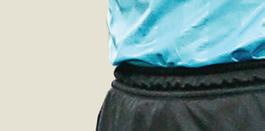

SOURCE: AS.COM
SIDELINE
PRO Names Manager of Senior Referees

The Professional Referee Organization (PRO) appointed Sandro Ricci as its manager of senior referees.
Ricci officiated in Brazil’s toptier league, the 2014 World Cup in his home country and the 2018 World Cup in Russia. He also worked the 2016 Olympics bronze-medal match in Rio. Other significant assignments included the 2013 FIFA Club World Cup Final between Bayern Munich and Raja Casablanca, the 2015 Copa America semifinal between Argentina and Paraguay, and a 2017 FIFA Club World Cup semifinal.
After retiring in 2018, Ricci worked as a rules analyst on Brazilian television. He joins PRO in the role vacated by Alan Kelly, who was promoted to director of senior match officials at the start of the season.
“Sandro was one of the leading South American referees for more than a decade, and his experience in the game, combined with his dedication and determination, will be positive for our officials,” said Mark Geiger, PRO’s general manager.
SOURCE: PROREFEREES.COM
51
FOTOARENA/NEWSCOM
TEST YOURSELF
In each of the following, decide which answer or answers are correct for NFHS, NCAA or IFAB rules/Laws. Solutions: p.
85
1. A1 is in an offside position, receives the ball and attempts to take a shot. Goalkeeper B2 runs toward the attacker and commits a reckless challenge inside the penalty area just after the referee has stopped play.
a. Penalty kick for team A.
b. Offside.
c. Offside and caution B2 for the reckless challenge.
2. An attacking team is awarded a direct free kick close to the opponent’s penalty area. While the referee is establishing the required distance between the ball and the wall, A1 takes the free kick and passes the ball to A2, who scores a goal.
a. Goal.
b. Retake the kick since the referee did not signal for the kick to be taken.
c. Indirect free kick for the opponents.
3. B1 takes a direct free kick and passes the ball to a goalkeeper, who slips on the grass and does not touch the ball. After that, A2 runs toward the ball so B1 must kick the ball out for a corner kick and denies the opponent an obvious goal-scoring opportunity.
a. Indirect free kick for team A.
b. Eject B1 and restart with a corner kick.
c. Eject B1 and restart with an indirect free kick for team A for touching the ball a second time.
4. A1 is in an offside position at the moment the ball is kicked toward the penalty area by A2. A1 moves and deliberately holds B3. A4, who was onside, receives the ball and scores a goal.
a. Direct free kick for team B since holding is a more serious offense.
b. Offside since A1 interfered with play.
c. Goal.
5. B1, second-to-the-last defender, steps off the field to place A2 in an offside position. The ball is played to A2, who shoots and scores.
a. Offside.
b. Goal.
c. Offside and eject B1.
the contact is retaliatory, the foul is committed from behind and/or the foul prevents the opponent from moving into space to join or rejoin the area of active play.
Kicking
Kicking fouls are also direct free kick offenses. The referee must determine if the foul was committed carelessly, recklessly or with excessive force. Similar to tripping, kicking fouls are often committed as the result of mistimed or poorly executed tackles. Kicking fouls are committed when players make a swinging or thrusting motion with their leg and, as a result, their foot makes contact anywhere on the opponent’s body. Kicking also has some similarities with striking, as addressed in the 1/23 column, as players can commit kicking fouls as an act of violence against an opponent in anger or retaliation and can happen both near and away from active play.
Key elements:
•How much force is used?
•Is the movement of the opponent affected?
•Does the opponent maintain possession of the ball?
If the offense is committed as part of an attempted challenge for the ball and the contact is light or only slightly mistimed, you can consider allowing play to continue. If the player kicks an opponent off the ball, in an uncontrolled manner or with enough force to affect their movement or dispossess them of the ball, it should be sanctioned as a foul regardless of whether the player also made contact with the ball.
Misconduct should be considered if the player is making no attempt to play the ball, the contact is retaliatory or inflammatory, is committed with disproportionate force, the contact is above the ankle of the opponent or is made with the studs exposed. Kicking an opponent from behind or off the ball should be dealt with quickly; in many cases this is retaliatory or inflammatory and is likely to lead to a mass confrontation. Furthermore, if the incident isn’t managed appropriately, your ability to control the remainder of the match will be negatively affected. Players are trained to use their feet to control and pass the ball. It is unfortunate that they also may use their feet (kick) to strike an opponent in an attempt to injure.
As a referee, the ability to confidently identify the difference between a fair challenge and a potential foul will not only help improve your match control, but also help in your overall mastery of the Laws of the Game. Hopefully breaking it down into the key elements listed above helps every referee better understand these fouls as well as gives them the tools to quickly recognize and deal with them when they occur during matches.
Kara Honthumb, Darmouth, Mass., is a National Referee coach with U.S. Soccer. She began refereeing in 1999 after playing collegiate soccer. She has refereed matches in the NWSL as well as youth, local amateur, high school and college levels. She is the director of an annual referee academy held every Memorial Day weekend. *
The Teaching Referee
By Dan Rudloff
Early in a career, a referee was assigned a very competitive Division 1 match between two archrivals. The referee was excited to be AR2 for a very accomplished NISOA National and FIFA Referee. The young referee was looking forward
to working a good game and to learn from one of the best officials in the world at the time.
Early in the first half, a pass was made to a wing right in front of the young referee. The player received the pass and was clearly not offside. The AR was in perfect position and never considered raising the flag.
34 | REFEREE September 2023 SOCCER
DALE GARVEY
CLASSIC O N F R O N T
The classic challenge for the ball presents many opportunities for fouls. On this play, here are a few immediate spots where fouls could occur:
1 No. 21 white is holding the opponent’s arm — direct free kick?
2 No. 7 blue may be pushing off with the right arm — intentional or just natural motion?


3 No. 21 might trip No. 7 with the left leg as it moves across the opponent’s body.

4 No. 7 could trip No. 21 with the right leg as she attempts to get to the ball.





5
No. 7’s left arm is making the body unnaturally bigger. If the ball strikes the arm, is it a potential hand ball?
A T I O N

1 2 3
5 REFEREE September 2023 | 35
4
CASEPLAYS
Continuous Motion
Play: Team A is awarded a penalty kick. A1 is identified as the kicker and takes a position so it appears to be a right-footed kick will be taken. After the whistle, A1 moves toward the ball in one continuous motion. Instead of kicking with the right foot, A1 passes by the ball, strikes it with the left foot and scores a goal. Ruling: Goal. A1 moved in one continuous motion, which is legal when taking a penalty kick (NFHS 14-1-4; NCAA 14.2.4; IFAB 14.1).
Stop and Reset
Play: Defender B1 commits a reckless tackle against A2 outside the penalty area. The referee stops play, awards a direct free kick and cautions the defender. Before the yellow card is displayed, A3 takes a quick free kick and has a clear goal-scoring opportunity. Ruling: The referee is to stop play immediately. As soon as B1 was notified to move toward the referee for the cautioning, the defending team did not have the opportunity to be properly ready for the kick to be taken (NFHS 9-1-3; NCAA AR 13.1.2; IFAB 12.3).
Violent Injuries
Play: B1 commits a brutal tackle while challenging A2 for the ball. As a result, both players are injured and need medical attention. Ruling: B1 is given a red card and sent off for serious foul play (in NCAA Violent Behavior II). For NFHS and NCAA matches, A2 must leave the field to be treated since an athletic trainer entered the field. For a match played under IFAB Laws, A2 may stay in the match (NFHS 3-3-2b; NCAA 3.5.9; IFAB Other Advice 6).
Dead Ball
Play: A1 is in the middle of the field and attempts to pass the ball to A2. The ball does not reach A2 because the ball bursts outside their penalty area and then is intercepted by B3. Ruling: The referee stops play and the ball is changed. The match is restarted with a drop ball for team A at the point where A1 touched it. This was the last contact before the ball bursting (NFHS 2-2-4; NCAA 2.3; IFAB 2.2).
As the AR ran to stay with the play with head up and on a swivel, the referee blew his whistle and made the signal for offside. The wing shot daggers at the AR until it was realized that the flag was at the side and had not been raised. The referee made eye contact with the AR giving a clear message the referee was in charge and the AR was merely an accessory. This type of attitude does not create an atmosphere for learning or match control.
Officials reaching a certain level of competence should feel obligated to pass on the nuances of officiating to those on the way up the ladder. The aforementioned official obviously did not because it was clearly about personal ego. Whether realizing it or not, almost certainly not, what was being taught was arrogance, not a useful lesson for any younger official. The fact of the matter is one is almost always a teacher to others.
In most life endeavors, experience matters. Having previously been in situations and seeing those and similar situations clearly is a big advantage in life and in officiating. FIFA referees, USSF referees, NISOA referees, high school referees and youth referees alike all started as a blank slate. Sharing experiences is the heart of a referee becoming a teacher whether directly or indirectly.
Rules are black and white and are taught in clinics, articles and chapter meetings ad infinitum. They are the basics of officiating, and not knowing them cold will prevent one from even reaching competency as an official. However, becoming an accomplished official at any level requires real experiences obtainable primarily by being on the field. All officials take their lumps and learn from them. Hopefully, referees should always ask themselves postgame, “What could I have done today that would have been better for me and the game?”
There is another way to flatten the learning curve. One road to gaining valuable experience involves working with those who are more experienced and willing to share.
On the other hand, those with less experience, however, need to be open to learning. No official emerges fully formed. Everyone at one time or another has to recognize and address situations related to career development.
Pregame conversations are excellent vehicles to pass on or gain experience. Even if the referee is not the most senior or experienced member of the team, discussion among the crew should cover how the game is to be officiated. There are many ways to handle certain situations. Just like every game is a different experience, one can learn something new from such candid conversation. Who may be the teacher and who may be the learner is moot. Once the game begins and thus the split-second decisionmaking that follows, opportunities to pass on experience disappear. How about asking in the pregame if anyone has had an interesting or unusual experience lately? How about asking about the use of a certain tactic? The pros and cons of any strategy then become a matter of discussion and dissection among peers. Does something work well or not and in what particular situation? Asking for advice may lead to a discussion that adds to one’s tool bag.
Consequently, rather than a “see you later” and a quick getaway after the game, postgame is also a great opportunity to review what had been done during the game, what could have been done or what alternate tactics might have been useful. Sharing or brainstorming interesting situations immediately for use later can be very helpful. Handling benches, troublesome players and/or coaches as well as quirky stuff on the field occurs in almost every match. Recognizing a certain situation rather than being surprised by it can make a huge difference in being an effective and confident referee. Since officials on the field don’t have the luxury of pondering a decision, having the second-hand experience to rely on in that split second is critical. Sometimes one may be
36 | REFEREE September 2023 SOCCER
the teacher and at other times the student regardless of one’s level of experience.
Not all teaching or learning is direct. Modeling can be a very effective alternative. Taking stock of oneself first is the first step to deciding who or what to emulate. One size does not fit all. Everyone needs to figure out what works best relative to who they are. Officials with big personalities are as effective as those who remain more anonymous on the field. Who uses a quiet word to players? Who is a chatterbox all game long? Who becomes stern, perhaps feigning anger, and then reverts quickly to their original calmer self? Knowing oneself leads to adopting tactics that fit. Close observation of all kinds of referee behavior will lead to modeling effective behavior.
A key to improving oneself is to be an open vessel. One’s own attitude as teacher and/or student
is critically important. More experienced referees should be open to sharing, and less experienced ones should always be on the lookout for tips, whether overt or observed. No one alive today invented the game, and no one has seen everything there is to see. There is always a new experience waiting just around the corner. Be open to expanding your repertoire of strategies and attitudes.
The nuances of the game, rules aside, need to be mastered to become more than just competent. The number of situations that occur having little to do with knowing the rules and the number of ways officials deal with them is endless. But as personal experience is certainly an effective teacher, perhaps just as effective is the experience of others to flatten the learning curve. Without interaction either by discussion or by observation, the learning curve
can be very steep. No one works in a vacuum.
The chain of officials stretches for years in either direction. Many came before; many more will follow. No one officiates forever just as no official emerges out of whole cloth. Having a place in that long line infers an obligation to the game, to those who passed on experiences, and to those who will inevitably follow. Whether it is something said, something done or something observed does not matter. Everyone will, at some point in the continuum, be the teacher or the student. Personal development is enhanced when these roles and opportunities are recognized and utilized.
Dan Rudloff, Chester, Pa., is a NISOA National Referee Emeritus and longtime high school soccer official who has officiated numerous high school state championships and NCAA playoff matches. *

CHANGES TO LGP NOW AFOOT
Last Foot on Floor Key to Airborne Player Contact Rulings
By Scott Tittrington
One of the most hotly debated rules in men’s college basketball in recent seasons — the establishment of legal guarding position and how it relates to block/charge rulings — received a significant tweak this summer as part of a series of rule changes that will be implemented for the 2023-24 season.
The following rule changes were crafted and submitted by the NCAA Men’s Basketball Rules Committee in May and approved by the NCAA’s Playing Rules Oversight Panel in June. They appear in perceived order of importance. Referee thanks Jeff O’Malley, secretary-rules editor for NCAA men’s basketball, for reviewing this information.
Legal Guarding Position (4-17.4.d)
In order for a defensive player to establish legal guarding position on an airborne shooter, the defender must establish legal guarding position, as defined in rule 4-17, before the airborne shooter places his last foot on the floor before becoming airborne. Previously, the defender needed to establish legal guarding position before the airborne shooter left the playing court.
The rule change is designed to reduce the number of charges and collisions that occur around the basket by allowing the offensive player more time to adjust to defensive movements.
Play 1: A1 is driving to the basket in the free-throw lane. B2 attempts to establish legal guarding position
Does this defender have legal guarding position? According to a rule change approved for NCAA men’s basketball for the 2023-24 season, the answer to that question is yes if he has established a legal position before the airborne shooter places his last foot on the floor before becoming airborne.

BASKETBALL RULES, MECHANICS, PHILOSOPHY EDITOR: SCOTT TITTRINGTON stittrington@referee.com 38 | REFEREE September 2023
HESTON QUAN
(a)while A1 is still dribbling the ball, (b) after A1 ends his dribble but before he makes a final step and goes airborne, or (c) after A1’s last foot is on the floor but before he becomes airborne. Ruling 1: A player-control charging foul against A1 in both (a)and (b), so long as all other requirements for the establishment of a legal guarding position have been met. In (c), it’s a blocking foul against B2 as the defender has attempted to establish a legal guarding position after the ballhandler has placed his last foot on the floor.
Timeout (5-15.1.c)
As seen in the PlayPic on page 36, a player may now be granted a timeout when he has possession of the ball even if he is airborne. This had been allowed in the past before a rule change removed that provision. The rules committee has again concluded if a player has possession of the ball, he should be entitled to request a timeout.
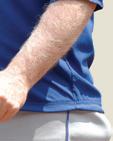
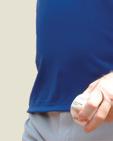
Play 2: After a try for goal, there is a long rebound headed out of bounds. A1 jumps from the playing court, secures the ball and, while holding the ball, audibly requests a timeout before landing out of bounds. Ruling 2: This is a legal timeout request. Once A1 secures the ball, he has player control and is allowed to request a timeout.
Play 3: A1 makes an errant pass in the frontcourt. As the ball is airborne over the division line, A2 jumps from the frontcourt and catches the ball. A2 requests a timeout while in the air. Ruling 3: This is a legal timeout request.
Play 4: A1 throws a full-court pass toward teammate A2 in an attempt to break a full-court press. The ball hits the playing court, bounces high in the air and is over the opposite endline when A2 jumps from the playing court and catches it. While A2 is airborne, team A’s head coach requests a timeout. Ruling 4: This is only a legal timeout request if it occurs during the last two minutes of the second half or any overtime period, which is the window in which a coach may request a live-ball timeout.
Shot Clock Reset (2-11.6.b, 2-11.6.c)
Any time the ball hits the rim (pass, try, deflection) and the offense retains possession in its frontcourt, the shot clock will reset to 20 seconds. Any time the ball hits the rim and the offense retains possession in its backcourt, the shot clock will reset to 30 seconds.
The change makes it easier for officials on the floor as they no longer need to determine whether the action is a legal try for goal or a pass.
Play 5: A1 attempts an alley-oop pass to A2. The pass hits the rim, bounces over airborne A2’s hands, hits the backboard and is then secured by A3 in the (a) frontcourt, or (b) backcourt. Ruling 5: Once A3 has possession, the shot clock should reset to 20 seconds in (a) and 30 seconds in (b).
Play 6: A1 attempts a three-point try that hits the ring, misses and, following rebounding action, is finally secured by B1 on the opposite side of the division line in team B’s frontcourt. Ruling 6: The shot clock should be reset to 30 seconds as soon as team B secures possession.
Timeouts Granted and Charged (5-14.1)
When a coach requests an outof-bounds play to be reviewed with under two minutes remaining in the second half or in the last two minutes of any overtime period, that team will be charged a timeout if the original call is not overturned. If that team is out of timeouts, the coach may still request a review but will be charged an administrative technical foul if the call is not overturned.







The out-of-bounds review request had been the only one that did not result in a charged timeout if not overturned.
Play 7: With 40.1 seconds remaining in the second half, the officials rule A1 was the last player to touch the ball before it went out of bounds. Team A’s head coach requests a video review. Team A has (a)one 60-second timeout remaining, (b)one 30-second timeout remaining, or (c) one 60-second and one
SIDELINE
EuroLeague Officials Get Shot at NBA Summer League
Two of Europe’s top professional basketball officials had the opportunity to gain NBA officiating experience this summer when they were invited to work in the 2023 NBA Summer League, July 7-17, in Las Vegas.

Gytis Vilius of Lithuania made his third appearance at the event, having also traveled to Las Vegas in 2017 and 2022. Mehdi Difallah of France made his first appearance this summer. The two also worked as partners in this year’s EuroLeague championship game, May 21, between Olympiacos (Greece) and Real Madrid (Spain) in Kaunas, Lithuania.
THEY SAID IT
“Refereeing, I loved it. I loved the way I felt physically after a tough game, being soaking wet and nobody said a word. I also liked getting that check and taking it home.”
— New York Mets manager Buck Showalter, on his previous life as a high school and smallcollege basketball official
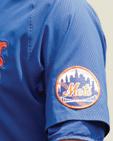
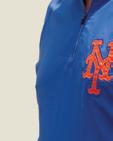


SOURCE: THEATHLETIC.COM
BY THE NUMBERS
The number of NBA Finals appearances for the 12 officials selected to work the 2023 Finals between the Denver Nuggets and Miami Heat:

16 — Scott Foster
12 — Tony Brothers, Marc Davis
10 — Zach Zarba
8 — Ed Malloy
7 — John Goble
6 — David Guthrie
5 — Bill Kennedy
4 — Josh Tiven
3 — Courtney Kirkland, James Williams
1 — Kevin Scott
REFEREE September 2023 | 39
CHARLES LECLAIRE-USA TODAY SPORTS
TEST YOURSELF
In each of the following, decide which answer or answers are correct for NFHS, NCAA men’s and NCAA women’s rules, which might vary Solutions: p. 85
1. Team A is wearing green jerseys with silver trim. What color undershirts may be worn by team A players?
a. Green.
b. Silver.
c. Black.
d. Either green or black, as long as all teammates are wearing the same color.
2. When does a team first shoot bonus free throws?
a. Upon the fifth team foul of the quarter.
b. Upon the fifth team foul of the half.
c. Upon the seventh team foul of the quarter.
d. Upon the seventh team foul of the half.
3. Which is true if A1 voluntarily goes out of bounds to avoid several defenders in order to re-enter the playing floor to potentially receive a pass?
a. Technical foul charged to A1.
b. Violation charged to A1.

c. Violation on A1 if A1 is the first player to touch the ball once inbounds after re-entry.
d. No penalty.
4. How many bonus free throws are awarded to A1 after a common (NFHS, NCAAM) or personal (NCAAW) foul is committed by defender B2 when team A is in the bonus?
a. One-and-one free throws always.
b. Two free throws always.
c. One-and-one free throws after the seventh, eighth and ninth team fouls, and two free throws after there are at least 10 team fouls.
d. No free throws if it’s the first team foul in the last two minutes of a quarter.
5. All of the following result in a technical foul to the home team prior to the game, except which?
a. Failing to have a properly marked division line.
b. Failing to have a properly marked center circle.
c. Failing to have a properly marked coaches box.
d. None of the above result in a technical foul.
30-second timeout remaining. Upon review, the officials do not change the original ruling and award the ball to team B. Ruling 7: In (a) and (c), team A is charged with a 60-second timeout. In (b), team A is charged with a 30-second timeout.
Goaltending/Basket Interference (11-2.1.b)

To ensure the accuracy of goaltending or basket interference calls that occur at any point in the game, officials are now allowed the opportunity to review the original calls during the next media timeout, so long as the official originally ruled goaltending or basket interference on the floor. If there is a foul on the shooter while the ball is in the air and a goaltending or basket interference ruling is made, the review will be immediate to properly adjudicate the potential free throws. The review will also be immediate if any goaltending or basket interference ruling is made with less than four minutes remaining in the second half or any overtime period.
Because these plays are challenging to officiate and directly result in either awarding or disallowing points, the rules committee felt it was imperative officials be allowed to review these plays at any point in the game.
Fouls as a Result of Flagrant Acts
(11-2.1.d.1)
If a player is called for a foul, and upon the use of video review the officials see the foul is a direct result of a flagrant 1 or flagrant 2 foul committed against the player who was originally assessed a foul, the officials may remove the original foul on the player who was flagrantly fouled.
Play 8: A1 is driving to the basket. B2 makes contact with A1 and is ruled to have committed a personal foul. During video review of the play, officials see that A3 used a two-hand shove to the back to push B2 into the path of A1 and rule a flagrant 1 foul against A3. Ruling 8: The personal foul originally assessed to B2 is removed.

BASKETBALL 40 | REFEREE September 2023
An NCAAM rule change for the 2023-24 season now allows an airborne player to request and be granted a timeout if he has possession of the ball.
TIMEOUT!
Flagrant 1 Fouls (10-1 Penalty)
If a player commits three flagrant 1 fouls during a game, the player is disqualified.
Since flagrant 1 fouls are deemed to be more serious than common fouls, it did not make sense to allow a player to possibly commit up to five flagrant 1 fouls before disqualification.
Flagrant 2 fouls continue to result in an automatic ejection.
Live/Preloaded Video (10-4.2.d)

Following a two-year experimental period that resulted in positive feedback from coaches and other stakeholders, the transmission of live video to the bench area for coaching purposes is now permitted.
Play 9: An assistant coach on team A’s bench is receiving a live video feed on his electronic tablet. During a timeout, he (a) uses the
video to show A1 why his footwork resulted in a traveling violation, or (b)steps onto the court to show a game official what he believes was an improper ruling of a traveling violation. Ruling 9: Legal in (a). Not legal in (b) and results in a class A technical foul assessed against the offender and a class B technical foul charged to the head coach.
Peacekeeper (10-4.2.j)
All non-student bench personnel are now permitted to leave the bench area to assist in preventing a potential fight/altercation. Previously, only the head coach was allowed to leave the bench area to assist.
Play 10: A skirmish develops between A1 and B2 on the playing court. Two assistant coaches from team A and one assistant coach and the head athletic trainer for team B step onto the court to separate the
two players and prevent a fight from developing. Ruling 10: This is legal.
Uniforms (1-22.7)
Additional uniform options are now permitted including jersey numbers 0 or 00 through 99, allowing more space for logos on the jersey front and permitting religious headwear to be worn without a waiver of the playing rule provided it is safe for competition.

Shot Clock Lights (1-19-4)
Amber lights are permitted but not required on the shot clock, while an amber strip at the top of the backboard is also permitted to signal the end of a shot-clock period. Scott Tittrington is an associate editor for Referee . He officiates women’s college and high school basketball, college and high school baseball, and high school football. *
NFHS 2023-24 Points of Emphasis
The NFHS Basketball Rules Committee has issued four points of emphasis (POE) for the 2023-24 season. They are not listed in priority order and are considered of equal importance:
Uniforms, Equipment and Apparel
This POE focuses on the need for not only officials, but for coaches and players, to know and understand the rules governing the legality of uniforms, equipment and apparel. An NFHS basketball uniform guide is available to illustrate proper uniform design and can be found on the NFHS website.
When a team requests to make an exception to rule 3-4 to promote a “themed” night, such as a Pink Out for breast cancer awareness or camouflage for military appreciation, it must be submitted to the state association before the event and receive approval. Uniform requirements may not be altered by mutual agreement between the schools or coaches.
Next, uniform bottoms do not have to match the torso of the
uniform. A team could choose to wear red jerseys and blue uniform bottoms. However, rule 3-4-5 states the uniform bottoms must be like-colored among teammates. The bottom style may differ for every player, including shorts, skirts or pants. But the color must be similar. Also, the rolling and/ or tucking of uniform bottoms, which has become popular in recent years, is permissible so long as the compression tights or sleeves being worn are color compliant.
Undershirts, if worn, must be hemmed, shall not have frayed or ragged edges, and if they have sleeves, they must be the same length for a particular player. The home team should only be wearing white undershirts under white jerseys, while the visiting team may wear black or undershirts of a single solid color similar to the torso of the jersey. However, all team members must wear the same color.
Finally, arm sleeves, knee sleeves, lower leg sleeves, compression shorts and tights remain permissible. Anything worn on the arm or leg is
NFHS officials, coaches and players must understand the rules governing the legalities of uniforms, such as when a team may legally wear special “themed” night uniforms, such as a Pink Out for breast cancer awareness.


REFEREE September 2023 | 41
CASEPLAYS
Dribble on Throw-in
Play: Following team A’s successful goal, B1 takes the ball out of bounds along the endline in team B’s backcourt. B1 dribbles the ball once by bouncing the ball on the endline, catching it and then dribbles again by bouncing the ball on the playing court inbounds, and catching the ball again. The entire time, B1 remains standing out of bounds. Does any part of B1’s dribbling of the ball during the throw-in result in a violation?
Ruling: Yes. The dribbling rule and double dribble violations do not apply during a throw-in, so it is not a violation for B1 to dribble once or multiple times while out of bounds during a throw-in. But when B1’s second dribble touched the floor inbounds, and then B1 was the first to touch the ball again, that action results in a throw-in violation by B1 because B1 failed to pass the ball directly into the playing court so that after it crossed the boundary line, it was touched by another player who was inbounds or was standing out of bounds (NFHS 9-2, Basketball Rules Fundamentals 5; NCAAM 9-4.1.b; NCAAW 9-4.1.b, Appendix VII 5).
First to Touch
Play: A1 is holding the ball outside the three-point line near the 28-foot line in team A’s frontcourt. A2, who is on the other side of the lane near the endline, cuts toward A2’s side of the court. While doing so, A2 runs out of bounds along the endline in team A’s frontcourt to avoid players from both teams. A2 then steps back onto the court near the three-point line on A1’s side of the court and receives a pass from A1. Is this play legal?
Ruling: No. A player who steps out of bounds under the player’s own volition and then becomes the first player to touch the ball after returning to the playing court has committed a violation. Had A2 not received a pass after re-entering the court, no violation would have occurred. But since A2 was the first to touch the ball after A1 had possession, the result is a violation (NFHS 9-3-3; NCAAM/W 9-3.1).
a sleeve, except for a knee brace, and must meet the color restrictions in rule 3-5-3: black, white, beige or the predominant color of the jersey, and the same color worn by all teammates. All sleeves, tights and compression shorts must also be the same color as any headband or wristband that is also being worn (3-5-4).
If in doubt, coaches and school administrators should confirm legality with their state association prior to purchasing any uniforms, equipment or apparel.
Bench Decorum
The rules committee remains concerned about bench decorum rules violations by coaches and bench personnel, and stresses the need for officials to enforce existing rules so coaches and bench personnel will exhibit appropriate and acceptable behavior.
Coaches are expected to remain within the 28-foot coaching box, and an extension to that current length adopted six years ago was intended to allow for communication with players near the endline. Coaches who go beyond the 28-foot line in either direction, and more importantly, who come onto the playing court, gain an advantage that is not within the spirit and intent of the rules.
Also, while the bench area expands during a timeout, it does not extend beyond the 28-foot line, and coaches and other bench personnel may not move to the expanded bench area until the timeout begins to ensure inadvertent contact does not occur with opposing players still out on the playing court. Coaches who leave the expanded bench area to engage officials inappropriately are also subject to bench conduct warnings or technical fouls.
Misconduct by players, coaches and bench personnel is not permitted. Again, there is continued support for officials to use all tools at their disposal, including administrative warnings and technical fouls if warranted. Players taunting, baiting, finger-pointing, trash-talking and using inappropriate gestures remains a problem. Players and coaches are permitted to celebrate an individual
or team accomplishment, but that celebration cannot be directed at the opponent. Also, players and coaches are not allowed to disrespectfully or inappropriately address or gesture toward an official.
Finally, assistant coaches are not authorized to approach the scorer’s table at any time. A team manager or statistician may obtain information from the table when the clock stops and the ball is dead. A head coach is permitted to go to the scorer’s table to request a 60-second timeout to confer with personnel about a potential correctable error or to prevent or rectify a timing or scoring mistake or an error with the alternatingpossession arrow.
Throw-ins – Proper Locations
Proper inbound spots contribute to the overall flow and fairness of the game and ensure the offense and defense have an equal chance to contest the possession. Coaches design specific plays and develop strategies based on where the ball will be put in play. Therefore, it is essential for game officials to be diligent in administering the ball at the proper throw-in location.
With the adoption of rules 7-5-2 through 7-5-5, coaches, players and officials are reminded of the following rules governing throw-in locations:
•Any time a team causes the ball to go out of bounds, the throw-in occurs from the spot where the ball went out of bounds.
•When a violation, defensive foul before the bonus or dead ball occurs that will result in a throw-in, officials must ask themselves three questions: Where did the foul/violation occur? Is the throw-in team in its frontcourt or backcourt? Where was the ball when the interruption occurred?
When a team has control in its backcourt, or the ball is loose in the backcourt and the defensive team commits a violation or foul before the bonus, play will resume with a throwin at either the point of interruption or the designated spot nearest to where the violation or foul occurred.
When the ball is in team control in the offensive team’s frontcourt and the defensive team commits a violation,
BASKETBALL 42 | REFEREE September 2023
a common foul prior to the two-shot penalty or the ball becomes dead, play will resume with a throw-in from one of the four designated frontcourt spots (the nearest 28-foot mark along each sideline or the nearest three-foot spot outside the lane on the endline).
When the offensive team commits a foul or violation in the backcourt, the defensive team, now in its frontcourt, will commence play with a throw-in from one of the four designated spots.
End-of-Game Protocols










As games near their conclusion, game officials need to remind each other about game-ending procedures to prevent potential issues. As seen in the PlayPic, late-game timeouts provide a good opportunity to confirm with the scorer the accuracy of the scorebook, the number of timeouts remaining for each team, and the number of team fouls and impact on bonus free throws. These timeouts are also a good time to remind the timer to watch the officials for clock-start and

clock-stop signals, and be prepared to assist the officials regarding whether last-second tries have been released prior to the end of playing time. Finally, officials should discuss among themselves last-second shot responsibilities, the fact that no try can be attempted following a throwin or free throw with three-tenths of a second or less remaining unless it is a tap, the proper administration of intentional or flagrant fouls, and whether or not free throws must be administered when a foul occurs and the game-ending horn sounds.
If the score is tied at the end of regulation, the officials should inform each team and the table officials of overtime procedures, such as the length of the extra period and the addition of one 60-second timeout per team.
Finally, following the game-ending horn, the referee should confirm with the scorer everything is correct before leaving the floor with the remaining officials. In situations where the score
is separated by three points or less, it may be necessary to verbally confirm this information. In games with a larger margin of victory, a visual signal such as a thumbs-up should suffice. Be confident everything is correct before all officials leave the visual confines of the playing court. *
Officials should use late-game timeouts to confirm all pertinent scorebook information to avoid potential issues in the closing moments of tightly contested games.

GO TO THE VIDEO





Be more competent and confident calling blocks and charges in a half hour. Using enhanced high school video, this video guide provides a focused clinic that is both quick and effective. See as many plays as possible to let your instincts take over.

$1595
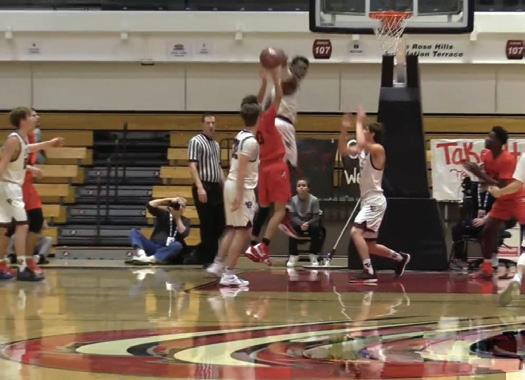
Obtaining legal guarding position is only the first part of the equation on block/charge plays. player obtains legal guarding position, the defender must meet all the requirements of maintaining that position. Know the game situation and the type of play that led to the ruling (obvious vs. a 50/50 call) and be ready to provide the appropriate “sell” on the ruling. IT IT INTRODUCTION PLAY 2 PLAY 7 PLAY 3 PLAY 8 PLAY 6 PLAY 5 PLAY 9 PLAY all PLAY FULLSCREEN stop PLAY 4 tAKEAWAYS PLAY PLAY 4
order yours TODAY STORE. /BASKETBALL
OOP O S!
EVERY OFFICIAL HAS HAD THAT FEELING. YOUR HEART SINKS AND YOU FEEL ALL ALONE IN THE MOMENT. WITH LUCK, YOU CAN REFLECT ON THE MEMORY YEARS LATER WITH A LITTLE CHUCKLE.
BOUNCE PASS A WASH OUT

I was the assigned referee in a boys’ varsity high school basketball game. I just watched the girls’ varsity game before the boys, the benches were cleared and table reset for the boys’ game. We did our pregame routine. With my eyes on my partner, I confirmed we were ready to go and I tossed the jump ball. About two minutes into the game, a couple of players kept shrugging their shoulders at me, as if to say, something’s wrong. At one of the dead-ball moments before administering a throw-in, I noticed the issue. Can you guess? We started the game with the girls’ ball! I immediately got a boys’ ball from the home bench, proclaimed my error to the coaches and continued with the game. The score was tied at the time, so evidently neither team gained too much of an advantage!





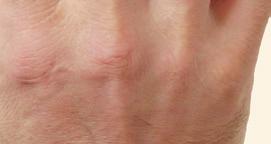
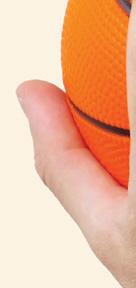
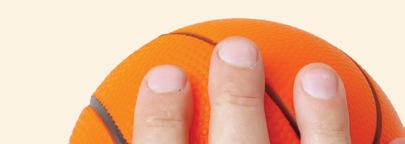


 — David Doerflein
— David Doerflein


The officiating crew was just about to begin a high school girls’ varsity volleyball match. The stands were full of raucous fans and the gym manager had positioned himself at the main gym entrance. The national anthem was completed and the teams were beckoned onto the court from the endlines. R2 checked the lineups and I took one final swig of water before the R2 gave the court back to me. Just as she did, my water bottle slipped off the stand. Water spilled everywhere. I thought, “Oh boy, this is going to be a long night.” The gym manager got a mop and bucket and worked to mop it up. We eventually proceeded without further delay, but I changed water bottles after that match.
— Sue Doty
44 | REFEREE September 2023
THROWN AWAY GROUNDED OUT
I got assigned the varsity home opener at a high school’s new baseball diamond. There was much fanfare. Big crowds. Pregame speeches. They brought out a prominent community member to throw the ceremonial opening pitch. After he ambled to the mound, one problem quickly became apparent. No one had a ball. “Here,” I said, tossing one from my ball bag. I had wanted my throw from near the dugout to land short and allow the ball to gently roll to the mound. To my horror, the ball fired straight toward the head of the octogenarian celebrity, who was holding up a glove near his head but in no way seemed prepared to use it. In slow motion, I watched the impending disaster unfold. There was no time to shout a warning and it wouldn’t have done any good anyway. My throw was going to ruin the day’s ceremonies. Then, to my amazement and immense relief, my errant throw landed perfectly in his glove. The crowd cheered. The opening pitch was thrown. Calamity avoided by mere inches. And it reinforced that I should always hand the ball to the catcher!
— Brent Killackey, managing editor







I was working a high school girls’ softball playoff game as the U1. I had a ball hit sharply to the right side of the infield. I usually look at the player playing second base and right field to determine if a possible play can be made at first base. In this particular case, I judged that neither would get to it. Wrong! As I started to do my buttonhook, thinking the ball would go to the outfield, I realized there was a great play being made on the edge of the outfield grass. Realizing I was moving right into the line of the throw, I put on the brakes and ducked, tried to reverse (I am 6-foot-2) and as I bent down I lost my footing and down I went — me in one direction, hat and indicator in another. The ball and the runner arrived at about the same time and I was in the dirt with no idea what to call. When the dust settled, I went to my two partners and we ruled the batter-runner out. So embarrassing. I took some ribbing in the parking lot from game administrators and fellow officials. All in good fun!
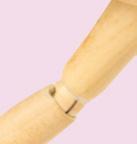















 — Ralph Hunter
— Ralph Hunter











































BAGS AND FLAGS EVERYWHERE
After many years as a high school football official, I was invited to join a college crew on a part-time basis. One of the crew members was also on my high school crew and I asked him if there was one thing I should keep in mind. “Have two beanbags,” he said, referring to the apparatus used to mark specific spots on the field. “There are more opportunities for beanbags in college than in high school.” At that time, there were. Armed with that knowledge, I took the field with the suggested double beanbags. Early in the game, I spotted a receiver in my coverage area being held. I reached into my belt and threw the first thing my hand grabbed: a beanbag. Knowing immediately that was wrong, I reached into my belt and made another toss: another beanbag. Finally, the third time was the charm: a flag. By this time the receiver had broken free of the hold, had caught a pass and had been downed several yards downfield. Both coaches and the referee were mystified as to what could possibly happen on a play that would require not one but two beanbags and a flag.
— Jeffrey Stern, senior editor





















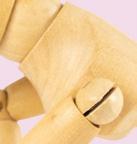


















































































































REFEREE September 2023 | 45
the
GATE CHECK
During my first year of working college football, I had the opportunity to work a game at Army Prep, located on the grounds of the U.S. Military Academy, West Point. It was my first seven-person crew and I was excited for the opportunity. I left my house at 6 a.m. for the four-hour trip to make sure I arrived by 10 a.m. for our pregame. I plugged the destination into my GPS and headed for the school. I pulled up to the gate, just before 10 a.m., and as I approached the gate, I could see the Army Prep field roughly 100 yards beyond the gate. Unfortunately, post 9/11, only military members with proper identification were allowed to enter the campus at the gate the GPS took me to. The gate civilians had to enter was roughly 30 minutes away on the opposite side of the campus, and not easy to get to. I turned my car around, found the proper entrance and then proceeded onto campus. Forty-five minutes after I initially arrived at what I thought was my final destination, I arrived at the field — right next to the wrong gate — threw on my tie and jacket and ran to the locker room, obviously much later than the rest of my crew.


 — Brad Tittrington, associate editor
— Brad Tittrington, associate editor





LEARN FOOTBALL RULES FAST & EASY



42 | REFEREE August 2023
$1595 STORE. /FOOTBALL $350 OOP O S!
Football’s most complicated rules are explained in everyday language and reinforced with 100s of illustrations.
VISIONINACTION






Insurance Gaps Are No Problem For NASO members




Here at the National Officials of Sports Officials (NASO), we ensure that our members have the best liability insurance available in the industry. Every member of NASO is protected with liability insurance no matter what games they are working. NASO covers officials for every sport and every level. In addition, everything you do as an official, umpire, or referee -- from assigning games to working as a clinic trainer to actual officiating – is covered.
Managing official responsibilities in an injuryprone, dispute-ridden environment requires liability insurance. Other insurances may only partially protect officials. They may only cover officials working in a certain league, during a certain season, or a particular level of competition. NASO covers “gaps” in other insurance coverages that you may have and protects you even when you do not have other coverage at all.

Officials often assume they are covered by the insurance of the league or athletic association where they work, but that is not always true. Most officials are independent contractors and are responsible for their own insurance protection. Some officials don’t carry any insurance and may be unaware of that fact.
NASO’s insurance plan
WE’RE ALL IN THIS TOGETHER!
THESE ORGANIZATIONS SUPPORT OFFICIALS
covers alleged officiating errors during normal officiating activities and decisions you made as an assigner. Your NASO insurance covers multiple sports. In addition, there is no additional fee for multiple sports. There is no limit to the number of sports you can officiate, and you will still be covered.












A $6 million per occurrence policy provides NASO members with the broadest coverage available. According to Chief Business Development Officer Ken Koester “Without a doubt, the most important aspect of NASO’s general liability coverage is the fact that the attorney’s fees are covered above and beyond the $6 million per occurrence limit. That means that in the event of a claim made against you, you’ll be provided with legal representation and those attorney fees and defense costs are covered in addition and not a part of your $6 million limit. Those costs can add up quickly, and NASO doesn’t want you to be penalized for it. “
NASO’s insurance program is preeminent in the officiating world. You will not find a more far-reaching and comprehensive insurance package. If you are not currently a NASO member, consider joining to ensure that you are covered. You can join at www.naso.org/join.


ATTENTION REFEREE MAGAZINE SUBSCRIBERS



It’s time to join the rest of us in the National Association of Sports O cials. Not only will you continue to receive the world’s #1 o ciating publication, you’ll enjoy all of the additional benefits NASO members enjoy.
Go to naso.org/upgrade2023 to join NASO for the special introductory price of $114 and receive these two FREE books!
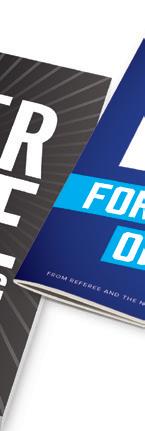
NATIONAL ASSOCIATION OF SPORTS
OFFICIALS
FOR NASO
INFORMATION OR TO SIGN UP, GO TO NASO.ORG, CALL 262-632-5448 OR EMAIL CSERVICE@NASO.ORG
MEMBERSHIP
$ 114 JOIN TODAY
LINEUP CHECK LOGISTICS
How Second Referees Can Quickly Fix Issues
By Brad Tittrington
Secondreferees have a lot of responsibility during a match. The most important job, however, comes before a single point is scored. That job entails making sure each team’s lineup is correct and making sure the right players are on the court. If second referees don’t start the match with the correct players as listed on the lineups, it will only create major headaches as the set progresses. That is why it is important for second referees, as well as the table crew, to double check the lineups when they are first turned in by the coaches. It is also imperative second referees double check the lineup again when checking the court before each set to make sure the right players are in the right positions.

There are a couple of situations most apt to happen when it comes to lineup errors, and it is important for second referees to know the rules about correcting those errors. Coaches have a lot to deal with, especially if coaching isn’t a fulltime job, and sometimes they make mistakes. It happens even to the best of them at the highest levels. It is our job and responsibility to practice preventive officiating and fix errors before they become major mistakes.
Let’s take a look at how to handle lineup checks prematch and before each set, and what the rules are surrounding those situations.
Prematch Check
In NFHS and USAV, teams must submit the lineup for the first set no later than two minutes before the end of the timed prematch warmup (NFHS 7-1-2a; USAV 7.3.2). In NCAA, teams must submit their lineups no later than three minutes before the end of the prematch warmup (10.1.1.1). Second referees sometimes take a cursory look and pass them on to the scorer to input
VOLLEYBALL RULES, MECHANICS, PHILOSOPHY EDITOR: BRAD TITTRINGTON btittrington@referee.com 48 | REFEREE September 2023
HESTON QUAN
Checking the lineup before each set is crucial for second referees. It is important to check and double check to make sure there are no errors and to correct any mistakes before allowing the set to begin. Ted Grissom, Santa Clarita, Calif.
in the scorebook. However, second referees should take time and make sure the lineups are accurate before handing the lineup over to the scorer. This is the first opportunity to correct a mistake and can save both time and a lot of headaches.
Second referees should double check to make sure each of the starting six players has a unique, legal number. In NFHS and USAV competition, second referees should also make sure each starting player’s number appears on the roster that is submitted. Second referees should then check to make sure each libero (liberos in USAV) has a legal number that is different than one of the starting six players. If you aren’t sure of a number, ask the coach to confirm. After confirming all the players are legal and there are no duplicate or illegal numbers, hand the lineup to the scorer. The next step is also extremely important: Make sure the scorer copies the lineup correctly into the scorebook. It only takes a few seconds to verify the information is correctly transcribed, but can save a lot of aggravation if this step is missed.
Preset Check
After the first set, teams must submit their roster with no later than one minute (NFHS) or 30 seconds (NCAA and USAV) remaining in the interval between sets. That doesn’t leave a lot of time to check the lineups and get them to the scorer to put in the scorebook. However,

it is crucial to check the numbers and not just assume they are correct. Generally, teams will use roughly the same starting players, but may change the rotation. If there is a different number listed than what was submitted in the previous set, make sure it is a legal number. Also, make sure the libero is accounted for if a team is using one. If something seems out of place, double check with the coach to make sure before you hand it over to the scorer. Never assume, as you know what happens when you assume.

Lineup Lists Number No Team Member Is Wearing
There are times a coach will turn in a lineup and list a number no team member is wearing. It could just be a simple mistake or a player has changed numbers and a coach forgot, or a player may be injured but a coach is used to putting that number in the lineup and that number was mistakenly written in. Whatever the reason, there are rules to make the lineup legal before the set starts. If the incorrect number is one of the six starters, the team can legally substitute a player with a legal number into the position before the start of the set. In NFHS and NCAA, the team is charged with a substitution (NFHS 7-1-4a-1; NCAA 10.1.1.9). In USAV, the lineup sheet is corrected and no sanction or substitution is charged (7.3.5.1). If the error involves the libero — as shown in PlayPics A and B — simply change
DID YOU KNOW?
High school volleyball adopted the rally-scoring format for matches in 2002. Prior to the change, matches were played utlizing sideout-scoring, meaning teams could only earn points while serving. The NCAA moved to rally scoring in 2001, but sets were initially played to 30 points. It adopted the current 25-point system in 2008. USAV adopted rally scoring in 1999. The change allowed for shorter games and gave the spectators a more exciting match to watch because there is always a point on the line.
QUICKTIP
As first referee, identify back-row players before each serve since they’re the players you need to identify for potential back-row faults during the rally. If player numbers are 4-2-9, remember “429” instead of three single digits. If uniform numbers are double digits, remember only the second digit. For example, 15-36-24 is “564.”

THEY SAID IT
“I kept hearing from people that the officiating pool is getting smaller and smaller, and they are getting older and older. I know how much volleyball meant to me in high school, and I want those kids to be able to have the experiences I had as well. I’ve never been a trendsetter. But I hope there is a trend that I start of younger people giving back to their sport. … There are so many times when I’ve walked into a gym where the coaches and players have known me. I’m hoping to turn that recognition into action from other people. If I can put officiating up in a spotlight, I hope it’s for the better and we can no longer have officiating shortages.”
— Kristi Kopanis, former WTOL (Toledo, Ohio) sportscaster, on why she decided to start officiating the game she played in high school. She recently posted on Twitter she just received her first NCAA D-I officiating assignment.
SOURCE: THE BLADE

REFEREE September 2023 | 49
A B
TEST YOURSELF
In each of the following you are given a situation and possible answer(s). You are to decide which answer(s) are correct for NFHS, NCAA or USAV rules, which might vary. Solutions: p. 85.
1. During the first set, A1 receives a red card penalty for arguing ballhandling calls. During the second set, A1 again argues with the first referee about a ballhandling decision. What is the correct penalty?
a. Individual yellow or red card assessed to A1 at the discretion of the referees.
b. A1 is expelled from the set and team B is awarded loss of rally/point.
c. A1 is expelled from the set with no other consequences.
d. A1 is disqualified from the match and team B is awarded loss of rally/point.
2. Following the match, the first referee signs the scoresheet.
a. True.
b. False.
3. Which of the following actions is illegal when the ball is completely on the opponent’s side of the net?
a. Blocking a ball simultaneously with the opponent’s attack-hit.
b. Blocking a ball after the opponent’s attack-hit.
c. Blocking a ball that is falling near the net when no member of the attacking team can make a play on it.
d. Blocking a ball after the opponents have completed their three hits.
4. At the beginning of the second set, team A is sanctioned with a delay warning for failing to submit a lineup at least 30 seconds before the expiration of the interval between sets. Later in the same set, team A’s coach requests a lineup check after the first referee’s whistle for service.


a. The team is issued a delay penalty.
b. The team is issued an improper request.
c. No penalty if the request is not recognized by the referees.
d. The team is charged with a timeout.
the number to the correct number without penalty in NFHS and USAV (NFHS 7-1-4a-2; USAV 7.3.5.1). In NCAA, the team must play without a libero for that set — not to be confused with not listing a libero and then confirming who the libero will be during lineup checks (10.1.1.3).
Lineup Lists Duplicate Number for Libero and Starting Player
There are teams that will use more than one libero during a match. And sometimes when the libero is changed, the libero’s number will accidentally be listed as both a libero and a starting position. There are a couple of ways to correct this situation before the set starts to get the lineup legal. If the duplicate number is to be a starting player, another player can immediately be designated as the libero with no penalty, as shown in PlayPic C. If the


duplicate number is to be the libero, a substitution is used to correct the starting lineup in NFHS and NCAA, as shown in PlayPic D. In USAV, the coach may correct the duplicate number where the libero’s number was incorrectly listed without penalty (NFHS 7-1-4b-1, 2; NCAA 10.1.1.10; USAV 7.3.4 Exc.).
As second referee, take your time and check the lineups when they are submitted. Many mistakes can be corrected immediately and preventive officiating will keep you from having to enforce punitive penalties once the set starts. An ounce of prevention is worth a pound of cure.
Brad Tittrington is an associate editor for Referee. He referees college and high school volleyball, umpires D-I softball and officiates women’s college and high school basketball and high school football. *
Postmatch Postulation
By Robert Doan
After finishing a match, what is the next obligation of an official? Should you have a postmatch conference with your team, or should you simply grab your things and go home? There are also other considerations, such as whether there
is time for a postmatch conversation. Is a postmatch conversation necessary? These are common questions from officials. Many experienced officials will tell you the postmatch conversation can be one of the most rewarding experiences of the match. Let’s discuss several key elements for a proper postmatch conversation.
VOLLEYBALL 50 | REFEREE September 2023
C D
Develop a Plan
Before the match, make sure to develop, with members of the officiating team, an exit strategy out of the gym (or court area) and head to a quiet place for a postmatch conversation. More and more high schools and colleges are providing a changing space for officials. A quiet locker room or office is an ideal location for prematch and postmatch conversations. If there is not a locker room or office for the officials to meet, find a quiet area away from match personnel and spectators. This can be someone’s car during the high school season or a corner of a referee room during the travel season. If it is appropriate, invite line judges and the scorer/assistant scorers to the postmatch.
Postmatch Conversation
The postmatch conversation usually is initiated by the first referee (R1) of the match (as shown in the PlayPic). If scorers and line judges are available (certified officials), start the conversation with them. Some common questions for the scorer and assistant scorer include:
•How did the match go for you?
•Did you feel we communicated well?
•Was there anything in the match you wish we would have done differently or that we could have helped?
•What was something we did that you want us to continue to do with the scorer and assistant scorer?
After the conversation feels complete, let the scorer and assistant scorer leave the meeting and focus attention on the line judges. The following are common questions and interactions with line judges:
•How did you feel during the match?
•Do you feel you were able to get your eyes to the line before the ball came?
•How was eye contact with the R1?
•Did you feel supported?
Of course, those questions are only examples of conversation starters. As an R1, it is important to
discuss several plays that happened during the match to offer praise or recommendations for the future. It is also important for officials to help line judges improve their craft, but hold back on the urge to provide a line judge clinic after the match. The two line judges might be tired from working the previous match, so try to choose one or two items to give praise or recommendations to improve. Feel free to invite the line judges to stay for the referee postmatch if you and they feel comfortable. Many certified line judges are also referees and value postmatch conversations with the referees. They also might decline, which is fine as well.
For the referees, here are common start-up questions and interactions:


•How was my eye contact?
•Did you feel supported when I talked with the coaches?
•What did you think about the ballhandling line that was set?
•Did you agree with the backrow decisions?
Similar to the other examples, the sample questions are conversation starters. Discuss plays from the match that were difficult or out of the ordinary. If one of the referees missed a call, discuss how to make the correct call next time. In general, discuss the good and the bad with the idea in mind that you both want to keep improving.

Postgame Conversation No-Nos
Be disengaged. There have been many times when one official is trying to have a good postmatch conversation while the other is checking a cellphone or packing up items. If there is something pressing in your life, feel free to let the other official know, and maybe the postmatch can happen at a different time (maybe during the ride home if traveling quite a distance).
Be argumentative. Just because someone saw a play differently does not mean you or the other referee are wrong. Absorb the information, then process it later. Feel free to discuss the feedback with a trusted mentor to hear his or her perspective. There have been multiple times when I believed the feedback I received was “wrong,” but my mentor verified it was indeed correct. Even if whatever was said did not sit well with you, respectfully move on in the conversation. Officials are more than likely just trying to help.
Take too long. An easy match when everything goes smoothly should not have a postmatch conversation that takes 30 minutes. It might not even be appropriate for a five-set match that had many decisions to have a 30-minute postmatch conversation. Be respectful of each other’s time and either discuss the most important portions


REFEREE September 2023 | 51
After the match, the crew should take time to discuss the things that went well and the things that need work. The first referee should lead the discussion and should include the scorers and line judges. All members should be open and honest during this process.
CASEPLAYS
Conduct Issues Between Sets
Play: As the teams change courts at the conclusion of the first set, A1 and B2 begin arguing. The referees determine each player must be sanctioned with an individual misconduct penalty. Ruling: When misconduct occurs between sets, the sanction is assessed at the beginning of the next set and recorded on the scoresheet for that set. When opponents are sanctioned for simultaneous unsporting acts, the serving team player is penalized first, followed by the receiving team player (NFHS 12-2 Procedure for Unsporting Conduct Violations; NCAA 6.4.3, 6.4.5; USAV 21.5).
Injury Involving Blood
Play: R1 dives to play a ball and cuts her elbow, which leads to blood on the court. R1 goes to the athletic trainer for help. It takes management a couple of minutes to clean up the court. Once the floor is cleaned, R1 returns to the court. The second referee does not allow R1 to play since she was still under the trainer’s care at the end of the 30-second evaluation period. Ruling: In all codes, that decision is incorrect. Since the player was ready to go when the playable area was cleaned, there was no delay in the resumption of play. The referees should allow R1 to play (NFHS 11-4-3; NCAA 11.3.7.2, 11.3.7.4; USAV Guidelines for Dealing With Blood).
Centerline Fault
Play: A1 lands after an attack, and one foot is beyond the centerline, encroaching completely into team B’s court. A1 does not make contact with a team B player, but a team B blocker must step around A1’s encroaching foot.
Ruling: In all codes, A1 should be whistled for a centerline fault. In NFHS, a player may encroach into the opponent’s court with a foot, feet or hands, only if some part of the foot/hand remains on or over the centerline. Once the player’s foot went beyond the centerline, a fault occurred (9-57). In NCAA and USAV, a player is allowed to have a foot or hand completely across the centerline, but the encroaching player cannot interfere with or create a safety hazard for any opposing player (NCAA 15.2.4.2; USAV 11.2.2.2).
of the match or agree to continue the conversation at a different time. Overall, postmatch conversations can be extremely helpful. You can often walk away feeling assured that you and your partner tried your best. Postmatch conversations are great opportunities to get better. The main advice expert officials have given has been to take notes during the postmatch conversation and to be
open to feedback. Returning to the original question, “Do we have to do a postmatch conversation?” The response would be, “Why would you not take advantage of this great opportunity?”
Robert Doan, Ph.D., has been a high school, college and USAV official for more than a decade. He is a resident of Charleston County, S.C. *
Libero Do’s and Don’ts
By Rick Brown
Thelibero position in volleyball is a great opportunity for shorter players to aspire toward mastery of passing, digging, serving and ballhandling skills, and is a blessing to teams who have the services of an exceptionally talented defensive specialist to cement their efforts to keep the ball off the floor. As an even “more specialized” defensive specialist, a libero may be a team’s best serve-receiver and digger during each rally, used for back-zone setting when the team is out of system, and also be one of the best servers. Some liberos are known for having hands of “butter” (not to be confused with butterfinger hands that produce double hits). So, the various rule codes facilitate the intent of allowing the libero to fulfill the position’s ”destiny” by having her available to be on the court in five out of six service rotations. The libero may lead the team’s serve-receive floor defense on every rally and also replace a middle blocker in one position in the service order in each set per the three rule codes. While some of the complexities might be hard to initially grasp for newer officials, here is a breakdown of the most important rules regarding the libero position to help you stay on track.
You Say lih-BEAR-oh, I Say LEE-buh-ro
Regardless of how the name is pronounced, to play a libero, a team must designate the number of this
player on the lineup submitted for each set. NFHS and NCAA rules allow a single libero to be designated for each set while USAV rules offer this option along with the ability to list two liberos for the match on the first-set lineup sheet (NFHS 6-4-2; NCAA 12.1.1; USAV 19.1.1). Teams are never forced to list or play a libero. However, the higher the level of play, the more likely a team will play a libero. Happily, failure to identify a libero number on a lineup is treated with a prevention focus; the coach is “reminded” by the second referee with a smile, “Did you intend to play a libero?” The referees are assisted by additional sets of eyes from the scorer and assistant scorer/ libero tracker in spotting a duplicate number for a libero and starting player, as well as failure to identify a libero.
Clearly Contrasting
There are restrictions on libero playing actions and movement on and off the court. As such, a libero is required to wear a jersey that clearly contrasts with the jerseys worn by teammates. To allow officials who are responsible for identifying libero movement on and off the court as well as libero playing actions during each rally, libero jerseys have to be sufficiently different to identify the libero from every angle. Rules require libero jerseys clearly contrast with dominant/predominant color(s) of teammates’ jerseys, generally excluding trim. Each set of referees determines whether jerseys are clearly
VOLLEYBALL 52 | REFEREE September 2023
contrasting. Although sleeves are typically not a concern, some referees consider the effect of long sleeves in determining libero jersey compliance in terms of clearly contrasting. Rule sets state the libero jersey may not be made up solely of the same dominant (USAV 19.2a) or predominant color(s) (NFHS 4-2-2; NCAA 12.1.3.1) as worn by teammates even if the like colors are placed differently on the jersey. Referees, the scorer and assistant scorer must be able to quickly identify the libero. Referees need to be able to easily identify the libero in a group of moving teammates to spot who played the ball and apply the applicable rules. With the libero free to enter the court on any dead ball — with but a few restrictions — to replace a back-row player and with libero replacements by both teams at the same time complicating things, it is no wonder we instruct assistant scorers to emulate an oscillating fan with their heads and eyes to help
them spot replacements as well as approaching subs.
Replacement
“Replacement” is the terminology used for a libero’s entry onto the court through an area between the team’s attack line and end line (Libero Replacement Zone/LRZ) and is unlimited throughout each set, as long as the libero’s position does not rotate to the front zone with the libero still on the court unless the libero will serve the next rally. All rule codes require the libero to exit the court during one service rotation. When a libero leaves through the LRZ, the player the libero last replaced must return through the LRZ for the exchange to be considered legal. After sitting out at least one completed rally, the libero may then replace another back-row teammate, and this process may go on repeatedly through each set.
A libero listed on the submitted




lineup may enter the set before the first rally to replace any back-row teammate. Except for a few unusual situations, the libero’s subsequent entry and exit from the set occur without authorization or involvement from the second referee, who only intervenes when the process is flawed.

Serving
All three codes allow a libero to serve in one position in the service order in each set. When two liberos are used in a USAV match, both liberos may serve but only in a single spot in the serve order — not for each middle blocker. If a libero moves from an oncourt position to serve the next rally, this requires a legal double replacement (next legal server exits court while the player the libero last replaced returns to the court in the position the libero would occupy). For NCAA and USAV, if the libero would be serving in a second position

LINE UP LIBERO REQUIREMENTS
This comprehensive guide for NFHS/ NCAA/USAV includes PlayPics® and color photos to teach the nuances of the position for each ruleset so you can make fast, correct decisions. SIZE: 8”X11” 32 pages learn more STORE. /VOLLEYBALL *NASO member discount available. $1095 DIGITAL PRINT $1695 COMBO $1295 *
in the service order in that set, even with a legal double replacement, this is considered an illegal replacement, and the referees may intervene and assess a delay sanction (NCAA 6.3.2.11; 19.3.2.9). In NFHS, if detected before the authorization of service, an unnecessary delay is charged to the offending team. If detected after authorization of service, an illegal alignment results and a loss of rally/point is awarded to the offended team (10-4-5a Pen. 1).
Liberos May Not …
All rule codes restrict the libero to perform as a back-row player who is not allowed to complete an

attack-hit from anywhere on the playing surface if, at the moment of contact, the ball is totally above the height of the net. The libero may not rotate to the front row, block or even attempt to block. And, in an effort to keep teams from using liberos as primary setters, the libero may not use finger action to set the ball in the attack zone if this results in a completed attack by a teammate on the next contact when the ball is totally above net height. All of these actions result in a loss of rally/point awarded to the opponent (NFHS 9-5-6; NCAA 12.1.2; USAV 19.3.1). When it comes to the libero position, work as a crew to make sure you know what the libero is
and isn’t doing throughout the match. Rely on the table crew to assist with replacements and work with your partner to judge the actions of the libero during play to make sure that player doesn’t do anything illegal. If using headsets, communicate anytime there is a replacement and if the libero is involved in playing action, a simple “that’s good” should suffice to keep away from inadvertent whistles. Rick Brown, Westerville, Ohio, is a longtime high school volleyball referee, working 22 state tournaments. He is a state and local rules interpreter, USAV Regional Referee and formerly a PAVO National Line Judge, working multiple D-I postseason matches. *
54 | REFEREE September 2023 VOLLEYBALL
COURTESY OF MHSAA
The officiating crew must work together during a match to keep an eye on playing action by a libero to make sure all action is legal. In this case, it’s important for the crew to know the libero is behind the attack line and if this “finger action” set results in a completed attack above the height of the net, it is legal.
Over The Line

Plays at the net happen quickly and the second referee must be able to see penetration under the net quickly to determine if a fault occurs. The codes handle this situation a little differently so it is important to know which code you are working to enforce the rule properly.


On this particular play, the player is not guilty of a centerline violation in any of the three codes as she has a portion of her foot over the line, but the remainder of her foot is on or above the centerline. She also is clearly not interfering with an opponent’s opportunity to make a play on the ball. We can assume the player far left is returning to the floor after a block and her actions are legal.
So when would she be guilty of a centerline violation? In NFHS, if an entire foot or hand crosses the line or any other body part makes contact across the line, it is illegal, whether or not she interferes with a player. If outside the court, the player may cross the centerline, provided she does not interfere with play of the opposing team (9-5-7, 9-5-8).
In NCAA, encroachment into the opponent’s court with the foot, feet or hand(s) is permitted, provided some part of the encroaching extremity remains in contact with or directly above the centerline and there is no interference with opponents. If other parts of the body or a complete hand or foot crosses the centerline, it must not present a safety hazard. Players may cross the centerline outside the court and enter the free zone, provided there is no interference with opposing players or does not cause a safety hazard (15.2.4).


USAV is similar to the NCAA rule. USAV rules simply state it is legal to touch an opponent’s court with any part of the body, provided some part of the body remains in contact with or above the centerline and there is no interference with opponents. Completely crossing the line is legal, provided it does not present a safety hazard to opponents. Encroaching into an opponent’s free zone is the same as NCAA rules (11.2.2.2).
LEARN VOLLEYBALL RULES FAST & EASY
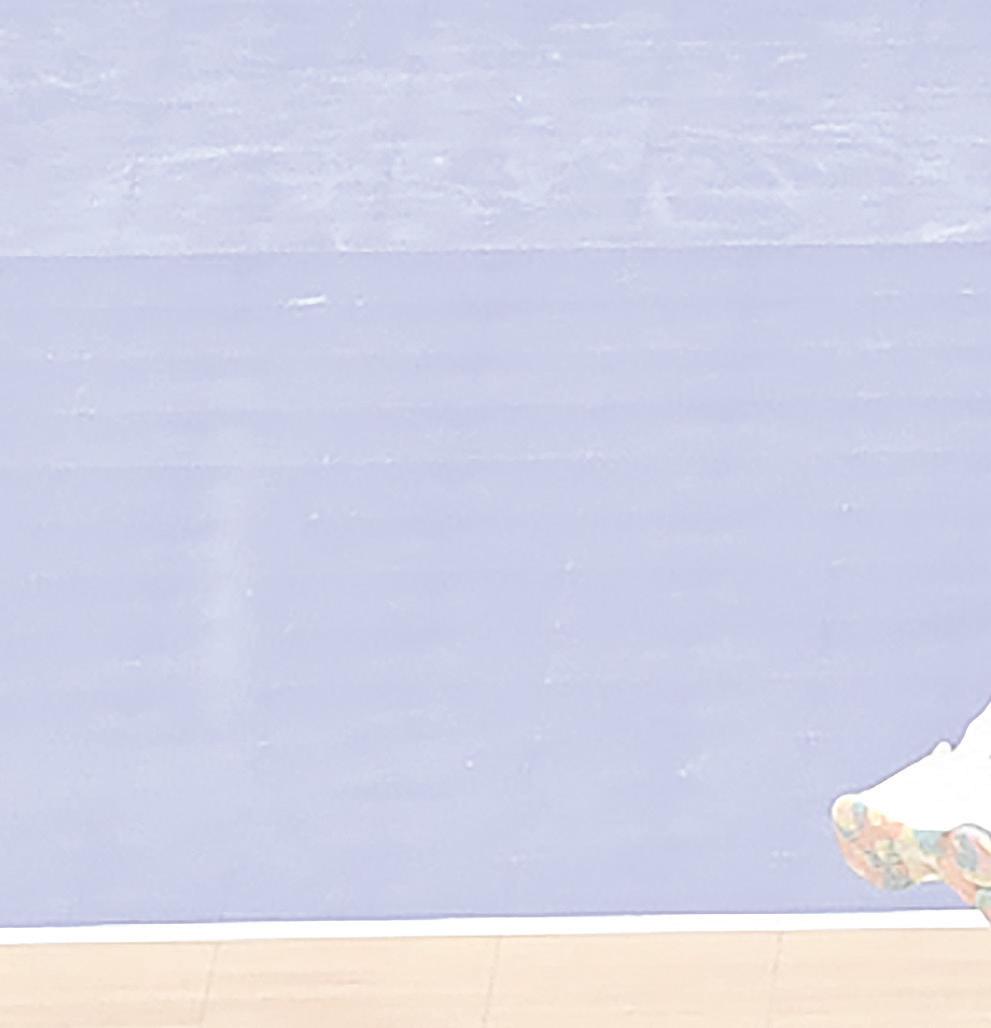

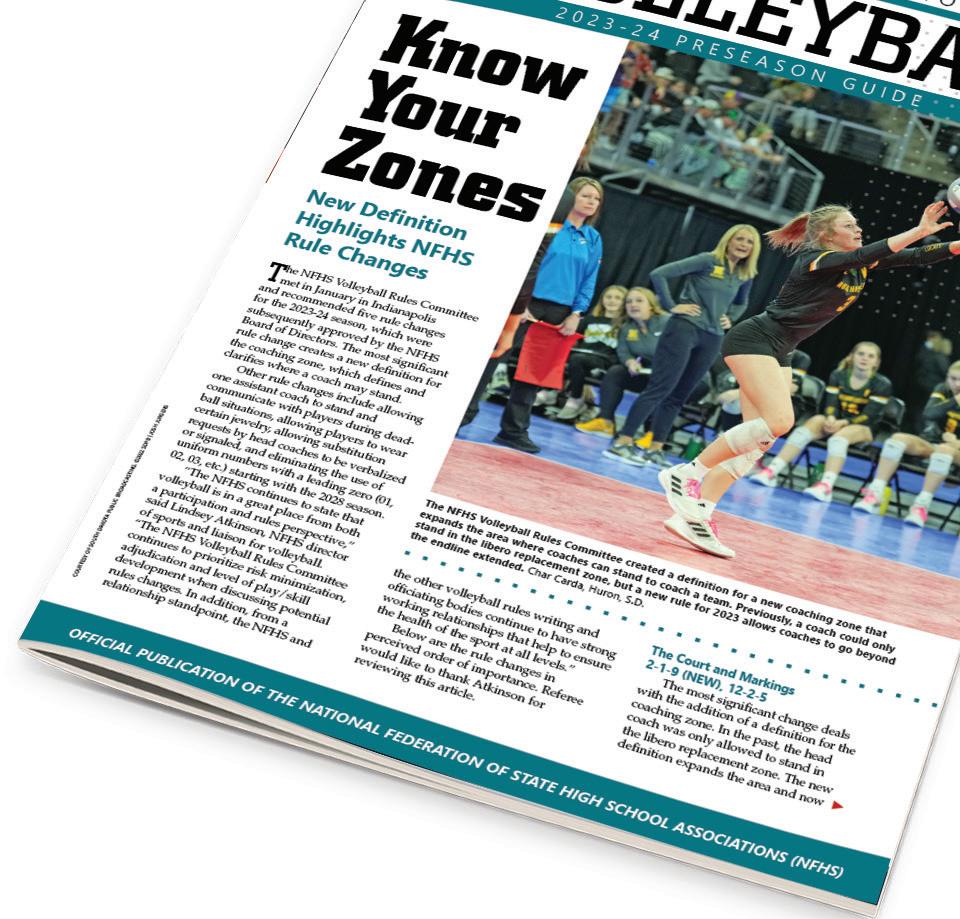



$1595
$350





Volleyball’s most complicated rules are explained in everyday language and reinforced with 100s of illustrations.
STORE. /VOLLEYBALL
COURTESY OF MHSAA
GETTING IT RIGHT INSPIRATION, MOTIVATION, ELEVATION
Oh Captain! LeCaptain!
By Joe Jarosz
It was Sunday, May 21, and the sun was rising over Green Bay, Wis., on a warm spring morning. In the shadows of Lambeau Field, hundreds of runners were preparing for the Cellcom Green Bay Marathon. For many of them, it was no different than races they had prepared for their entire running life. But for Ironman competitor Bob LeCaptain, a

his arm was sinking into the mattress, he said. He tried rocking a little bit and using momentum to get himself up. LeCaptain’s wife, Tracy, witnessed the activity and remembered signs of a stroke. She knew time was of the essence and called 911.The family was thrown into emergency mode.
To illustrate the community aspect of the officiating industry, LeCaptain remembers that one of the responding EMTs was a fellow Green Bay-area official with whom he worked basketball. “The brothers and sisters in the stripes are there when you need them,” LeCaptain said.
Support from the Green Bay Officials Association poured in after the stroke and during his recovery. Various officials picked up dates when LeCaptain was supposed to referee basketball last season and dozens of officials reached out to his wife and family in support. As LeCaptain summarizes, the officiating community really rallied.
September 2022 came along and LeCaptain was released from the hospital. His progress with physical therapy was quick and a running connection with his therapist got him thinking about running more and more. “When what you really enjoy doing in life gets pulled away from you, I began thinking about running and decided I would take that part of my life back,” LeCaptain said. He made a New Year’s resolution to run a marathon.And in May, he accomplished that goal.
Recruitment at Alta Vista Park
Redondo Sunset Softball in Redondo Beach, Calif., is attacking its officiating shortage with a recruitment push for young umpires. The organization is so committed to the effort that commissioner Colby Cano joined a group of junior umpires for an eight-hour USA Softball training session.

“We had staffing issues like everything else in the world,” said the longtime coach and first-year commissioner. Leadership felt a need to add diversity and youth to the group to ensure assignment coverage.
League administration began a junior umpire program, focused on recruitment and mentoring for younger female umpires. The group covered costs to get each junior umpire started. Registration with USA Softball, insurance, uniforms and equipment were all paid for. Junior umpires just needed to show up for training and soak in all the mentoring they could get on the diamond from veteran umpires.
SOURCE: EASYREADERNEWS.COM
Dust Devil in Jacksonville
No one expected a weather emergency on a sunny May afternoon at a Fort Caroline Athletic Association field in Jacksonville, Fla. But 17-year-old umpire Aidan Wiles sprang into action when he saw a dust devil starting to rotate around home plate.

basketball referee from the Green Bay area, it was an improbable, incredible feat to be at the starting line just 279 days after suffering a stroke.
As LeCaptain, 46, prepared for bed on Aug. 15, 2022, he was experiencing a headache. Because he couldn’t fall asleep, he attempted to get up to retrieve some medicine. As he tried to get out of bed, it felt like
LeCaptain was the viceprincipal at Green Bay Preble High School before his stroke and is currently on family and medical leave as he works his way back to returning to his career in education administration. He began officiating basketball with his dad and brother while he was in high school. LeCaptain said running and officiating have led him to meet incredible people and he is looking forward to increasing his participation in both avocations as he continues his recovery.
Joe Jarosz is an assistant editor for Referee *
Dust devils tend to form on hot, sunny days with light winds and are usually created by surface heating that causes dust-filled vortices. A 7-year-old player was caught up in the rotation and the quick-thinking umpire lifted and carried him out of harm’s way.
The player’s father said, “A kid that had the presence to do that, it’s just special to see. He had great parents raising him.” No one was injured in the weather event and the game was able to continue without further incident.
SOURCE: FOXNEWS.COM
Have you heard an inspirational or motivational officiating story?
Send your ideas to GettingItRight@referee.com
COURTESY OF FOCAL FLAME PHOTOGRAPHY
Basketball referee Bob LeCaptain ran the Cellcom Green Bay Marathon just 279 days after suffering a stroke.
56 | REFEREE September 2023

Higher education took on a new meaning when two British women completed an advanced officiating course in Scotland.
Determined to break new ground, two officials enrolled in a Performance Enhancement in Sports
Officiating program at Edinburgh Napier University in Scotland, with hopes of earning a Master of Science degree. The program is a spinoff from a blended (online and face-to-face) learning course for top-level coaches launched by the university in 2016.

After decades of career work, two British women, Christina Barrow, from Sale, and Clare Daniels, from Mildenhall, were among seven to apply for the program’s initial launch in September 2019. Since they were both looking to learn more about their crafts through an academic lens, they chose a path leading them to a pioneering program that has given them a unique perspective to bring back to their sports.
By Leah Berard
Barrow and Daniels have had international onfield experience as officials in their respective sports of netball and rugby (union). They are both currently off-field leaders, coaches, mentors and performance assessors/ reviewers. Barrow is an umpire for England’s national netball Premier League, technical official for England’s Netball Super League and is the World Netball International officiating manager. Daniels
was an English national rugby union referee and has served a few roles since her onfield departure, including match development officer for England’s Rugby Football Union and international match official performance reviewer for World Rugby. Barrow found out about the program through Twitter and applied just one month before the course launch. “I knew I wanted to be involved in a learning environment
58 | REFEREE September 2023
in a structured way and get accredited for it,” she said. “I had looked at sports management previously, but there’s a lot of in-person time and it seemed expensive.”
She filled out the application and had an interview with two course leaders, including Dr. Duncan Mascarenhas, associate professor of sport and exercise psychology and coaching. As the leader of the program and a former video producer, he used his skill sets to develop materials and modules based on the coaches’ blended learning course the university previously launched.
Since Barrow already had an honors degree (equivalent to a higher standard of classes taken in a bachelor’s program), it made for less application work. However, the program does allow for flexibility. Although the entry requirement is honors or above in a related subject, such as sport or exercise science, they also consider those who have proven professional work experience within the industry.
That’s the pathway Daniels took to get into the program, as she went straight into the workplace at 18. “The time wasn’t right for me to go to university at that age,” she said. “When I received an email from England’s Rugby Football Union promoting the program, I decided the time was right to explore academia.”


In lieu of the undergraduate degree, Daniels’ 12 years of experience at England Rugby was sufficient. “This unique course is an example of why education need not necessarily begin with or indeed end with university,” Mascarenhas said. “Students can apply with experience rather than qualifications, and a master’s



course of this standard enables students to confidently pursue robust, evidence-based research projects that can have a real impact on their sport.”
Mascarenhas is no stranger to officiating and the highperformance environment. He has been a basketball official since he was 17 years old and is currently a touch rugby referee, making the English and Scottish panels in both sports. He’s a psychologist as well as an associate professor, with more than 20 years of experience working with elite sports officials. England’s Rugby Football Union is one of the clients that had sought his expertise in sports psychology, and that is the avenue through which Daniels found out about the program. Through personal and professional connections, he initially relied on oldfashioned word-of-mouth to attract applicants. However, he is anxious for word to spread through more channels.
Mascarenhas started recruiting a mix of administrators, coaches and high-performance officials in 2019. He promoted the program through social media channels. He primarily asked people and officials he knew in his professional and social circles if they or anyone they knew would be interested in the program. Now they have more of a social media recruiting presence on Twitter and LinkedIn. They have recently added a course instructor, Dr. Ian Cunningham. The program has now had officials from around the UK as well as Sri Lanka, Australia and some European nations.
The online learning environment the program created due to the pandemic did conversely enhance the
REFEREE September 2023 | 59
The first two graduates of a master's degree program in officiating at Edinburgh Napier University are (top right) Christina Barrow, who is the international officiating manager at World Netball, and Clare Daniels, an international rugby official, who has served in leadership roles in the sport.
COURTESY OF EDINBURGH NAPIER UNIVERSITY, CHRISTINA BARROW AND CLARE DANIELS
program by being able to reach officials and strengthen collaborations across the world.
The program is an online three-year, part-time program geared toward officials in all sports. It has been exclusively online since the pandemic struck six months after the start of the program. Originally, the students were scheduled to meet in person once every trimester (the program is in trimesters with minimal breaks); however, the students only met twice, and the program has kept the online learning format ever since.
Some of the initial applicants dropped out immediately due to the pandemic, while others are either still enrolled or on a break from courses. As it is a rigorous “part-time” commitment, it really is a lot of work and dedication.

There are four learning modules to complete. Each is worth 20 credits toward the degree along with independent study (40 credits) and a final research project (60 credits). The modules are Work Based Learning for Sports Officials, Communication and Game Management, Leadership and
Organizational Management for Sports Officials, and HighPressure Decision Making.
The students are scheduled to complete three of the modules in their first year, one module in their second year as well as an independent study, which can be used as initial work toward their research project module (thesis) in their third year. Guest speakers from across the globe present to the students and give them research project ideas. Eighty percent of their research project grade/mark is based on a written component and 20 percent on an oral presentation.
For each module, there are assessment criteria based on a matrix that includes descriptions of standards, including four types of learning outcomes: knowledge and understanding, cognitive skills, practical or professional skills, and communication skills. The assessment criteria are used to measure student performance relating to how well they have fulfilled the specific learning outcomes of a module. There are one or two marked/ graded pieces of homework per module. The degree’s final grade/mark is an average of all
the grades/marks across the program, depending on the weighting of each module.
“Although putting in the effort helps,” Barrow said, “it doesn’t always guarantee the marks.” All the modules and documents needed for the program are stored on an online site, where their work is also submitted.
Even after graduation, the work hasn’t exactly stopped. Barrow is getting ready to publish her final paper submission, titled, “An examination of how voluntary international netball officials view and experience wellbeing.” Daniels has also started the process of publishing hers, “Female Sports Officials Development Pathways.” Daniels said her interview subjects were more open and she was able to get more meaningful data because she has “walked the walk,” unlike independent researchers. “I was a researcher with firsthand lived experience,” Daniels said. Mascarenhas also stresses the importance and significance of publishing their findings, which will go through a robust peer review from other researchers who are experts in the field. “Their own research will inform other future investigations to enhance practice across the whole officiating sector/industry,” Mascarenhas said.
Barrow believes the program gives one the background and evidence they're doing the right thing in their realm of the sport. “I now feel more advanced in my understanding of doing what I do in my officiating roles,” Barrow said, “and I have more tools to improve the things I can.”
Daniels said she can better support the management team because she has learned many things along her journey and now understands all officials
60 | REFEREE September 2023
IN OFFICIATING
COURTESY OF EDINBURGH NAPIER UNIVERSITY
From left, Clare Daniels and Christina Barrow are joined in a graduation photo by Edinburgh Napier University faculty Ian Cunningham, Duncan Mascarenhas and Tony Westbury.
have their own pathways and challenges. She can bring more empathy, as well as an additional skill set to her highperformance role and to the group. “We all bring different perspectives to the discussions around how we create the optimum environment for the officials to develop, on and off the pitch,” Daniels said.
The “first of its kind” program has been successful because of the dynamics between the course leaders and their more than 35 years of research to apply to sports officiating. “Napier has established its quality now in this small market,” Mascarenhas said, “which makes us unique to be the first university to accredit an officiating program like this.”
He said there are other validated programs like it in the world. However, they have yet to graduate students. “Marketing is definitely a challenge for us,” Mascarenhas said. “So it’s a bonus to get our name out there however and whenever we can.”
The word has not yet gone far beyond Europe, however, as Mascarenhas has had communication with only one official from the U.S., a collegiate basketball official who inquired about the program.
Daniels said the upfront cost may be prohibitive to some.
“You have to be intrinsically motivated,” Daniels said. “You’re there because you’ve chosen to and are paying out of pocket.” Some of the other challenges of the program are isolation (online format) and a heavy workload (students are full-time employees as well).
“The course was a pleasure and a pain,” Barrow said. “It’s so involved, and unanswered questions always lead to new questions.”
Although limited research in this area made it difficult to test the data and theories, their reward was the experience. It
opened eyes, minds and doors in the officiating world for them, and they concur the pain was worth it.
The world was their oyster as the first graduating class of the world’s first master’s degree in officiating. They had to remain adaptable, which successful officials are, and be willing to be comfortable being uncomfortable in a novel environment with limited research to support their final theses and projects.
“All the modules in the
program are tailored to the students’ needs. It means we’re dealing with areas of sport which have never really been tested,” Mascarenhas said. “Officiating research is relatively young. It effectively began in the ’80s but only really started growing in the late ’90s. There’s so much that’s still unexplored and it’s an exciting area to be involved in.” Leah Berard, St. Paul, Minn., officiated international rugby and now officiates high school and college football. *
Master’s Degree in Performance Enhancement in Sports Officiating
•O ered at Edinburgh Napier University, a public university located in Edinburgh, Scotland.


•Program has been running since 2019.
•Students complete the program part-time, online.
•Duration: 3 years
•Start dates: September, January and May
•Tuition: Approx. $7,000 (based on 202324 tuition rates)

•The program typically has a group webinar at the start of each trimester and multiple group and individual online checkpoints through the year. Online interactive activities and online video materials are used to augment the experience.
•The program “has a strong emphasis upon
self-reflection, so you will profile your own performance with a series of research investigations to identify areas for personal development. Your progress will be guided by enhancing your understanding of contemporary research together with peer support groups from other practicing o cials to critically reflect upon your performance.”
•“Exploring contemporary issues in leadership, sports performance management systems and organizational culture, you will not only examine your own leadership capabilities in relation to your personal context (e.g., the match day o ciating team), but also critically evaluate them in relation to e ective organizational, team and player management.”
SOURCE: NAPIER.AC.UK
REFEREE September 2023 | 61
FLUENCY HAS ITS REWARDS Proper Rulebook Language Breeds Confidence
By James “Buzz” Albert
Virtually every baseball umpire working games in an organized league or association has become “certified” to work at that level. The primary method of certification is gained in passing a rules exam. Umpire candidates spend many hours studying the rulebook through group study, online practice and oldfashioned reading the rulebook to prepare for and pass an exam. The best scenario upon passing the initial exam is an annual follow-up in the form of a similar but perhaps scaleddown version of an entry exam, even if that follow-up is an open-book, online exam that forces us to open and read the rules.

Unfortunately, too often once an exam is passed, some umpires put the rulebook on the back burner and rely on their field presence and “knowledge of the game” to get them through potentially difficult situations. They miss out on an opportunity to fill their tool belt with a good fundamental skill in dealing with coaches and managers when discussing things that happen on the field and what they need to do to correct them by rule. That skill would be the use of rulebook terminology.
An often overlooked stop in the rulebook is its Playing Terms and Definitions (NFHS) or Definitions (NCAA), found in rule 2. These terms are found at the back of the Official Baseball Rules pro code.
Is this play interference, obstruction or neither? Whatever the umpire decides, you can bet there is going to be a conversation with one head coach, and perhaps both. And when that happens, the umpire needs to use proper rulebook language to instill confidence that there is a clear understanding of what transpired on the play and the ruling that is ultimately rendered.
Coaches rarely use proper rulebook terminology during plays where the action develops in a manner a bit out of the ordinary. For instance, one of the most frequent improper requests from a coach deals with obstruction and interference. Coaches will often ask for one — primarily calling everything “interference” — when looking for a call to go their way.
I am not recommending we need to educate coaches on the proper use of terminology. That would most
62 | REFEREE September 2023 EDITOR: SCOTT TITTRINGTON stittrington@referee.com
BASEBALL RULES, MECHANICS, PHILOSOPHY
TED OPPEGARD
certainly lead to confrontation. What we must avoid is doing the same when explaining one of these calls on the field. While it is commonplace for the coaches to misuse the labeling of these two infractions, we cannot afford to allow ourselves to do the same.
When we are talking about interference and obstruction, we gain a ton of credibility and believability when we can use “rulebook language” in explaining our call. Using phrases like “impeded the progress of the runner” when talking about obstruction or “interferes with, impedes, hinders or confuses a fielder attempting to make a play” when talking about interference shows an umpire has rulebook mastery. With obstruction and interference in particular, such knowledge, and the ability to communicate it using rulebook language, is crucial when a call is made and “there is no contact.” Coaches are going to want to know why we might call it when they don’t see any contact, and we need to be able to explain the reasoning behind the ruling.
One of the most basic definitions that umpires know well — but coaches and players often do not — is that of a catch. It is among the first official terms we learn when we graduate from being a fan or casual observer to becoming a certified umpire. We know this definition and the requirements for a catch due to our preparation and rules study in advance of an exam, but the common belief among others is “he held it long enough.” We hear this all the time. We know, however, a combination of “firm and secure possession” and the release of the ball being “voluntary and intentional” are necessary in determining a catch/no catch. It is not good enough if we fall back into our old baseball language from when we were a fan or a player and use common but unofficial words when explaining our call such as “held it long enough.”



Another place we can insert proper rulebook terminology is explaining the status of a ball. Is it a ball in flight? Is it a bounding ball? Is it a thrown ball? Is it a batted ball? We know in determining whether the ball is fair or foul the words “ball in flight” and
“bounding ball” mean a lot. We also know terms like “batted ball,” “thrown ball” and even “pitched ball” are key when awarding bases on a ball that leaves the field of play. We must use these words when explaining our awarding of bases so it’s clear to a coach who later may look up the rule to see if we got it correct.
With proper study and a commitment to continue to perfect our onfield presence, we gain a lot of credibility in both the way we sound in our explanation on the field and also how we look from the viewpoint of a coach who later might read the rulebook and see words we quoted in our discussion explaining our decision. When we have the confidence to use these words correctly, and insert the words “because of (fill in the action)” and “by rule,” we have elevated our game.
These are only a few examples where we can make our job easier by simply knowing the proper terminology. We can also insert rulebook language explaining pitching violations, balks and baserunning infractions like using the term “last time by.” These words are often improperly just shouted out by coaches, but we are not afforded that luxury and latitude when enforcing rules, applying penalties and explaining calls.

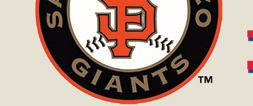
This is something I try to share with my crew each and every weekend in our initial meeting before the start of a series. It is also the very first place I start when I host and facilitate a rules study in preparing umpire candidates to take an entry exam. I share the first place to start in mastering the rules is knowing the definitions as defined in the rulebook.
Moving forward, take advantage of these opportunities to elevate your credibility on the field by using the words and terms defined in the rulebook. It will also increase your confidence to rule on action on the field as it plays out before you. James “Buzz” Albert, Mount Joy, Pa., umpires NCAA Division I baseball in the Big Ten Conference, Northeast Conference and Colonial Athletic Association and works as a clinician on the United Umpires Training staff in the offseason. *
BY THE NUMBERS
The number of pitches observed by home-plate umpire Alan Porter in the longest MLB game by innings (as of the print deadline for this issue) in the 2023 season: a 5-4 victory by the Miami Marlins against the Chicago Cubs in 14 innings on May 7.


DID YOU KNOW?
Major League Baseball’s first interleague game was played June 12, 1997, between the San Francisco Giants and the Texas Rangers. The umpiring crew featured Jim McKean on the plate, Ted Hendry at first base, Jim Joyce at second base and Ed Hickox at third base. The Giants prevailed, 4-3, in a game that took only 2 hours, 23 minutes.
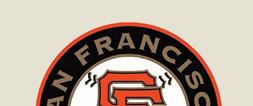
SURVEY SAYS...
A recent Referee Twitter poll asked, “Do you like the MLB rule changes (pitch clock, elimination of infield shifts, bigger bases) this season?”
Of the 90 respondents, 91.4
REFEREE September 2023 | 63
BRIAN ROTHMULLER/ICON SPORTSWIRE/NEWSCOM
386
TEST YOURSELF
In each question, decide which answer is correct for NFHS, NCAA or pro rules. Solutions: p. 85
1. B1 is granted time to talk to his third-base coach. While they are conferring, the defensive coach meets with the pitcher at the foul line. As the offensive conference concludes, the defensive coach returns to his dugout.
a. Only a defensive conference is charged.
b. Only an offensive conference is charged.
c. Both conferences are charged.
d. Neither an offensive nor defensive conference is charged.
2. With R1 on first base and one out, B3 hits a sharp ground ball that is deflected by F1 toward F4. As F4 is attempting to field the ball, he is contacted by R1, who is running directly toward second base.
a. The ball is live and in play. R1’s contact with the fielder was unavoidable.
b. Obstruction by F4. Once the pitcher had an opportunity to field the ball, the fielder is no longer protected and any contact between him and a runner is deemed his responsibility. R1 is placed at second and B3 is awarded first.
c. Time should be called after the play and a ruling made based on what would have happened had the pitcher not deflected the ball.
d. R1 is out for interference. If a batted ball is deflected by the pitcher and another fielder has a legitimate play to retire a runner, the fielder is protected and a collision by a baserunner results in interference. B3 is awarded first.
3. A scuffle ensues at second base after what is thought by the shortstop to be a hard slide by the runner. The shortstop, Abel, begins punching the runner (who does not retaliate). From the defensive team’s dugout, Baker and Charles run into fair territory but do not engage in a physical altercation. Daniel sprints out of the dugout and also begins punching the runner. Edward stands up and moves to the top of the dugout but does not come onto the field.
a. Abel, Baker, Charles, Daniel and Edward are all ejected.
b. Abel, Baker, Charles and Daniel are ejected.
c. Abel and Daniel are ejected.
Talent Isn’t Everything for Those Looking to Climb
By Jon Bible
I’m often asked what it takes for an umpire to get hired into a college conference. It’s more complicated than having a solid skill set and putting in the time. Having been a coordinator for four conferences and the first national coordinator of NCAA umpires, I can attest myriad factors affect how staff selections are made. The average umpire is likely aware of (or can intuit) some, but others may not be on his or her radar screen. Add everything up and you’ll see the odds of achieving this goal, while not insurmountable, aren’t necessarily favorable, either.
Staff Needs Coordinators want to ensure their staff, especially the premier members, have several series to work. To do that, they must keep the staff relatively small. The smaller it is, the younger the members and the better they perform, the more likely it is the need for new umpires each year will
be minimal, if not nonexistent. Many umpires work in several conferences. The more prominent the umpire, the more conferences in which that umpire will work. If three conferences each have 20 staff positions, that means slots for 60 umpires. But if Sam works in all three, he’ll take positions in two that Tom and Dick may have gotten. The more Sams there are, the fewer slots exist for other aspiring umpires. When openings occur, coordinators often fill them by taking someone from a “pipeline” of umpires they’ve previously identified as prospects. Most likely, these umpires have been working nonconference games involving conference schools, possibly for a long time. Larger conferences tend to fill vacancies with umpires from smaller “feeder” conferences. Thus, the key to getting into a conference is to become part of that pipeline or smaller conference and to perform well enough to be attractive when one of the few staff opportunities finally occurs.

BASEBALL 64 | REFEREE September 2023
If you are an umpire who has aspirations of being hired into a college conference, and working alongside the likes of Kellen Levy, Phoenix (left), and Chuck Lyons, Castaic, Calif., there is a checklist of items you should be prepared to complete.
BOB MESSINA
Ex-professional Umpires
In recent years, there has been an “up or out” policy in higher levels of minor league baseball. Whereas umpires could stay in the minors for years when I was in pro ball ages ago — many who never got to the majors were minor league “lifers” — pro umpires who are not quickly identified as serious MLB prospects now get released. Because they’re in their 20s or 30s with many years of umpiring still ahead of them, some seek to join the college ranks where the per-game pay is often much higher than it was in the pros. Generally, due to their experience and training, they go into a conference without being part of the pipeline or feeder system; if so, they may jump over umpires who have been working their tail off in that system for years.
If an ex-pro applies for my staff, why wouldn’t I want him? If that umpire’s skill set was good enough for pro ball, it’s good enough for
me and likely better than that of the typical amateur. Some former pros have difficulty adjusting to the college game, where they must control things and people differently than in pro ball, and some never do; they’ll get washed out. But those who make the transition may stick around for years. Increasingly, ex-pros are taking the few vacancies in college conferences, and this has created a roadblock for amateurs.
They’re also increasingly filling slots in NCAA postseason events. Coordinators rate their umpiring staffs for regional, super regional and Men’s College World Series selections, and it stands to reason ex-pros will usually score better than amateurs. So besides taking many conference staff slots that would otherwise be filled by amateurs, they’re taking many postseason positions as well. Check out who has umpired these events in recent years and you’ll see how much they’re dominated by ex-pros.
Geography
College baseball doesn’t generate the revenue football and basketball do. Some conferences give umpires a lump-sum payment that covers their game fee and travel expenses, so it doesn’t really matter where they live. But those that don’t may have to be careful about this in order to avoid having to pay significant travel expenses for airfare, mileage and/or hotel rooms. Thus, your chances of getting into a conference may be in part a function of where you live. I’ve known good umpires who weren’t in the footprint of any conference so they never got the opportunity to move up.
Diversity Initiatives
This is a touchy subject but it’s reality, so I need to address it. I was never told to hire someone specifically because of race, gender, sexual orientation, etc. However, on occasion it was made clear to me this
LEARN MORE STORE.

$2495








Longtime MLB umpire Sam Holbrook brings his years of onfield and umpire school experience to this new video focusing on the mechanics that will take you to the next level in your umpiring career.
/baseball
CASEPLAYS
Is It Over?
Play: With the bases loaded and two outs in the bottom of the last inning, the score is tied. B6 is hit by the pitch and is awarded first base. R3 legally touches home and scores and B6 legally advances to and touches first. R2 started toward third but went to join the celebration near first before he touched third. Ruling: In NFHS, R2 is out if the defense properly appeals at third base and the game continues. If not, the game is over. In NCAA and pro, the game is over. The run scores as only B6 needed to go to first and R3 needed to touch home (NFHS 9-1-1 Note 2; NCAA 5-8d Note; pro 5.08b).
Order Matters
Play: With R1 on first, B2 hits a line drive at F3, who dives but can only trap the ball for no catch. R1, believing there is a catch, returns to first. F3 tags first base before B2 touches first and then tags R1, who is standing on first base. Ruling: The order of the tag/touch is significant. B1 is out, removing the force against R1, who is safe. If F3 had tagged R1 before touching first, it would be a double play (NFHS 2-241; NCAA 2-33; pro Force Play Definition).
Timing of Block
Play: F1 throws to first to attempt a pickoff. F3 drops his knee to completely block the base before catching the ball and attempting to tag R1. Ruling: In NFHS and NCAA, F3 may not completely block the base until he clearly possesses the ball on a pickoff play. F3 is guilty of obstruction and R1 is awarded second base. In pro, F3 may block the base before possessing the ball as long as he is in the immediate act of fielding the throw (NFHS 2-22-3; NCAA 2-55; pro Obstruction Definition).
Do Over
Play: With R3 on third base, F1 stops his delivery because the batter stepped out of the box with one foot in response to the thirdbase coach giving a new sign. Ruling: There is no penalty on either the batter or the pitcher. The umpire shall call “Time” and begin play anew (NFHS 6-2-4d1; NCAA 9-3g Note; pro 5.04b2 Cmt.).
would be a plus factor for a potential candidate. Just another thing to factor into the mix.
Packaging
Trying to get into a college conference is like applying for a regular job in that your skill set and how you package yourself are important. Do you objectively qualify given how long you’ve worked, at what levels, and with what degree of success? Some folks aren’t realistic; I received applications from umpires who had worked high school baseball for only one year. That won’t cut it in a major conference or, for the most part, in smaller ones. Many umpires today want to shoot to the top without taking the time to get the seasoning needed to be wellrounded, but coordinators value experience. And if you apply to me prematurely, I may write you off so that if you apply again later, I won’t pay attention. So be careful about when you initiate your contact.
What’s your age, weight, etc.? (If you’re wondering, college
conferences hire umpires as independent contractors, who aren’t protected by laws barring discrimination based on age, race, disability, etc.) If you have weaknesses in these areas, you’re less attractive than another aspirant who doesn’t have them.
If you emailed me a cover letter and submitted a resume, were they well-written or replete with grammatical errors? You may say this shouldn’t matter, but if you present yourself sloppily on paper, why won’t I think you’ll be sloppy in your work? Remember the old adage “image is everything.”
Finally, some coordinators require umpires to have not only attended a camp to be considered, but one that has that coordinator’s name attached to it. I’ve complained about the latter on occasion because I don’t think it’s right, but I’ve never gotten anywhere. Jon Bible, Austin, Texas, worked seven NCAA Division I College World Series. In 2019, he was inducted into the National College Baseball Hall of Fame in Lubbock, Texas. *
Extra Steps Create Some Extra ‘Sell’
By Scott Tittrington
I was recently watching a Division I college baseball game alongside a high-level evaluator when a trouble ball was hit down the left-field line. I observed the left fielder racing toward the line and saw him make a diving catch before shifting my attention to the third-base umpire, who had gone out on the play and took three to four hard, running steps with his right arm raised to indicate he had a catch and an out.
I turned to the evaluator and asked, “Do you think he waited too long to go out on that trouble ball?”
My query centered on the fact U3 was moving while making his signal, leading me to believe he had made a late decision regarding his mechanics
on the play, and was therefore still moving when the catch was being completed, which goes against the guidance clearly stated in the CCA Baseball Umpires Manual regarding fly ball coverage in the outfield:
“Pause, read and react. Then go hard and get a good angle. Be stopped when the play occurs.”
The evaluator smiled and said, “No, that’s a veteran move,” and then proceeded to explain what he had observed.
While I was watching the flight of the ball and looking at the play develop — in other words, doing the exact same thing as probably every fan who was in attendance — the evaluator was watching U3 from the start. And what he saw is exactly what the CCA manual prescribes:
66 | REFEREE September 2023 BASEBALL
U3 read the play, reacted by taking just a few hard steps to indicate to his partners that he was going out on the play, and then stopped and set his feet, having obtained the best angle he was going to be able to get without continuing to move while the catch/no catch developed.
Once the left fielder had secured the ball and began his transfer to his throwing hand for a voluntary release, that’s when U3 began moving again — taking the three or four steps I had witnessed — and selling his call with a strong out signal. In other words, the movement I saw occurred after U3 had already determined his ruling on the play. In doing so, it delivered the impression to all those fans watching the action he was sprinting hard to get on top of the play and sell his ruling — similar to how basketball officials are taught to take an extra step or two and close down toward the action when they rule a foul or violation from any appreciable distance on the playing court.
Don’t confuse this mechanic with false hustle. This umpire was not being lazy in one moment, then putting on a show to make up for it. Instead, he was using an extra tool
to sell his call, and only doing so after he used a proper mechanic and had all the necessary information to make an accurate ruling in the first place.
Say Yes to Safety
There are plenty of rules in the NFHS, NCAA and pro rule codes that leave room for interpretation by the umpires working a game on any given day. This is where the blending of the art and science of officiating come into play.
However, the one area where umpires should never deviate or “let things slide” is a black-and-white safety rule. Whenever umpires step on the field, they should have two primary objectives above all else: keep the game safe and keep the game fair. When safety is at issue, there should be no gray areas.
This PlayPic illustrates a perfect example, showing a piece of tape running through the earhole of a batter’s helmet. Why is that tape
there? It can only be for one of two reasons: either there is a crack in the helmet, or the padding on the inside has come loose and needs to be kept in place.
The NFHS rulebook states batting helmets must meet the NOCSAE safety standard at the time of manufacture (1-5-1) and defective equipment must be repaired or replaced immediately (1-5-6). The NCAA rulebook is even more specific on the topic, stating helmets that are cracked, split or broken shall not be warn, and tape of any kind on the helmet is not allowed and must be removed from the game (1-15-a). Pro rules give the discretion to the umpires to correct any violations related to equipment, including helmets (3.08 Cmt.).
Don’t be the umpire who allows unsafe and illegal equipment such as this to remain in any game you are working. It’s an easy fix with strong rule support. Ignoring it puts the player wearing the helmet at peril and puts you as the umpire at jeopardy should an injury result. *
 Scott Tittrington is an associate editor at Referee. He umpires college and high school baseball, and officiates college and high school basketball and high school football. *
Scott Tittrington is an associate editor at Referee. He umpires college and high school baseball, and officiates college and high school basketball and high school football. *
CATCH PU U1 PU BR BR U2 U2 U3 U3 LF U1 U3 STOP AND SET OUT SIGNAL REFEREE September 2023 | 67
When U3 goes out on this trouble ball, it’s important to come to a full stop and be in a set position before making the catch/no catch ruling. However, once U3 is confident in what has taken place, it’s also a good idea to then take a few extra steps to close down on the play and sell the call.
GET IN THE ZONE A Plate-Full of Principles to Digest
By Carlos A. Santana
The most controversial aspect of any game is the strike zone. There are several reasons for this, but it is likely because it is the most common judgment call made during a game. In an average seven-inning game, the plate umpire will see 150-200 pitches from both teams combined. While the umpire needs to be prepared to judge each one, if you subtract the pitches that are swung at, you still have a substantial number of pitches to judge. This article will give tips and techniques for calling an accurate and
consistent zone. Ultimately, you will need to find a style that works for you. But you are not left to discover that style by yourself.
Strike Zone Defined
Calling an accurate and consistent strike zone requires knowing the dimensions of the zone used by the rule set of the game. Three of the four (NFHS, USA Softball and USSSA) are almost identical in their definition.
NFHS, USSSA — The strike zone is the space over home plate which is between the batter’s forward armpit
and the top of the knees when the batter assumes a natural batting stance, as shown in PlayPic A on the next page (NFHS 2-56-3; USSSA 3 –Strike Zone).
NCAA — The zone is the area above home plate between the bottom of the batter’s sternum and the top of the knees when they assume their natural batting stance, as shown in PlayPic B on page 66 (11.3.1).
USA Softball — That space over any part of home plate, when

SOFTBALL RULES, MECHANICS, PHILOSOPHY 68 | REFEREE September 2023 EDITOR: BRAD TITTRINGTON btittrington@referee.com
COURTESY OF MHSAA
John VanHolstyn, Sandford, Mich., locks in behind the catcher and tracks the ball all the way to the mitt. This helps him stay accurate and consistent throughout the game.
FAST PITCH STRIKE ZONE
a batter assumes a natural batting stance adjacent to home plate, between the batter’s arm pits and the top of the knees (1 – Strike Zone).


In determining a strike, the ball must meet the width and height requirements of the zone. In reviewing the strike zone definitions above, you should notice the common aspects and the differences. The common aspects include the width of the zone. The width is fixed and determined by the width of home plate. The width of the zone does not change with each batter. Home plate is 17 inches wide. The ball is 3.82 inches wide. Any part of the ball crossing over the plate is considered within the width of the zone. So doing the math, the strike zone becomes 24.64 inches wide, as shown in MechaniGram C on page 67.This precise width may not help in calling strikes on the inside or outside, but it is important to know that any part of the ball crossing
over the plate is considered within the width of the zone.
Now that you have considered the width of the zone, let’s cover the height of the zone. This is where the codes diverge. Each code agrees on the bottom of the zone, the top of the knees. However, the codes differ on the top limit. In NFHS, USA Softball and USSSA, the top of the zone is the armpits. Specifically, NFHS and USSSA use the “forward armpit” while USA Softball states “the batter’s arm pits.” The top of the NCAA zone is at the “bottom of the batter’s sternum.” All codes concur these limits are determined when the batter assumes a “natural batting stance.” In addition, in NFHS, USA Softball and USSSA, any portion of the ball traveling through any part of the zone is considered a strike. In NCAA, the entire ball must be below the upper limit of the zone while any portion of the ball hitting the other three boundaries is sufficient to be within the strike zone.

QUICKTIP
While it is generally in our nature to be empathetic and even sympathetic when an athlete gets injured during a game, remember you are not there in a certified athletic trainer capacity. Allow the appropriate team members to tend to injured athletes. Avoid touching injured players and avoid giving any medical advice. Give the injured athlete space and allow medical personnel to diagnose the player.

BY THE NUMBERS
1.1 The rating for the 2023 Women’s College World Series








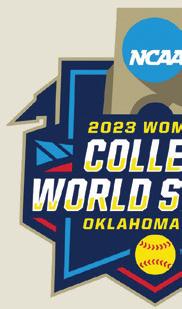
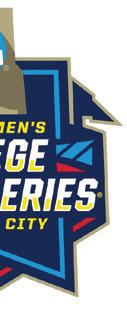
Final between Oklahoma and Florida State, an increase of seven percent from last year.
1.86M Number of viewers on ESPN for the championship game, up 15 percent from last year.
2.3M The peak number of viewers for the championship game, which trails only Game 2 between the same two teams from two years ago as the most-watched WCWS game since 2015.
The umpires for the championship game, which saw Oklahoma win, 3-1, were Robbie Guest, Christina Drumm, Megan Rabin and Mike Burwell.
THEY SAID IT
“A lot of people had concerns about these types of plays. We wanted to make this easier for the umpires to call. It also should allow catchers to be able to play their position without being called for obstruction. It allows catchers to make plays and be athletic.”
— Shena Hollar, NCAA Softball Committee chair, on the new obstruction interpretation proposed by the committee for next season. It states defensive players would not be called for obstruction if they are making a legitimate reaction to the trajectory of the ball after it is thrown.
SOURCE: NCAA.ORG
REFEREE September 2023 | 69
A
Each of the following includes a situation and possible answer(s). Decide which are correct for NFHS, NCAA, USA Softball or USSSA rules and which might vary. Solutions: p. 85
1. In the top of the first inning, team A uses A1 as a courtesy runner for the pitcher. In the sixth inning, team A wants to use A1 as a courtesy runner for the catcher.
a. Courtesy runners are illegal and may never be used.
b. Legal. A courtesy runner may run for both the pitcher and catcher, provided the courtesy runner isn’t used for both in the same inning.
c. Illegal. Courtesy runners may be used for the pitcher and catcher, but the same courtesy runner may not be used for both in the same game.
2. With R1 on first and R3 on third, B3 hits a single to right field. R3 scores and R1 advances to third. After the ball is returned to F1 in the circle, time is granted. The defense wishes to make a deadball appeal that R1 missed second base. Who may make the appeal?
a. Any infielder only.
b. Only the pitcher or catcher.
c. Any defensive player only.
d. Any defensive player or coach.
e. Any infielder or coach.
3. With R1 on first base and no outs, B2 hits a hard ground ball to F4. As F4 is playing the ball, R1 interferes with F4. In the judgment of the base umpire, the interference by R1 did not prevent a double play and B2 had not reached first base.
a. The ball is dead and R1 is ruled out for interference. B2 is awarded first base.
b. The ball is only dead if the base umpire determines the contact by R1 is intentional.
c. The ball is dead, R1 is ruled out for interference and B2 is also ruled out because B2 had not reached first base.
4. B1 is called out on strikes and is ejected for arguing the call.
a. B1 must leave the grounds and have no contact with umpires or participants in the game.
b. B1 shall remain in the dugout/bench area.
c. B1 may remain in the dugout but shall not remain on the playing field or communicate with opponents or umpires.

FAST PITCH STRIKE ZONE
Stance and Head Position

Now that you have the dimensions and boundaries of the strike zone, let’s get into the practice of calling an accurate and consistent zone. The key to this vital skill is a relentless commitment to positioning and mechanics.
Starting from the ground up, let’s focus on foot positioning first. During your training, you may hear terms like “heel-toe stance,” “box stance,” and “Gerry Davis.” The heel-toe stance means the umpire’s toe of the foot closest to the batter (“slot foot”) is in line with the catcher’s heel. Your body is angled toward the plate so you are at an angle no more than 45 degrees in relation to the pitcher. In the box stance, the foot farthest from the batter (“non-slot foot”) is placed about one foot behind the catcher in line with the point of the plate. The slot foot is parallel to and in line with the non-slot foot. In this stance, you are square to the pitcher. The

heel-toe stance puts you closer to the catcher while the box stance should be about one foot from the catcher’s back. The Gerry Davis stance starts like the box stance. However, in the Gerry Davis stance, you place your hands on your thighs above your knees with your elbows locked, which provides consistent head height.
Having set your base, we turn to head positioning. This is where you will hear the term “slot.” The slot is the area between the catcher’s inside shoulder and the batter in a natural stance and the catcher in a natural catching position behind home plate. Practice placing your head in this position using the various stances described above. Use the spread of your feet to control the height of your head. Practice different heights to determine which is best to allow you to see the entire zone. Ideally, your head height will be between the top of the catcher’s helmet and the batter’s rear elbow.
SOFTBALL 70 | REFEREE September 2023
TEST YOURSELF
B
With these basics in mind, there will be times when you will need to adjust because either the batter, the catcher or both will block your view. It is important to adjust to see the entire zone prior to the pitch being released. If the catcher moves inside and into the slot, you might be tempted to move to the outside
portion of the zone. Avoid this temptation. This will place you in a position that increases your chances of taking a foul ball to the mask or chest. Instead, slightly increase your head height to be above the catcher’s helmet and look through the zone.
Sometimes, the batter will have
her elbows in your line of sight. If this happens, you may lose sight of the pitcher’s release, but you should still be in a good position to view the ball coming to the catcher. Pick up the ball as soon as possible and watch it travel to the catcher.
Summary
A consistent strike zone provides a smoother game. Pitchers and batters will quickly adjust to your zone. An inconsistent zone confuses both pitchers and batters and will cause you grief throughout the game. Take the time to mentally prepare before the game.
Think about what you want to work on during the game. Do not try to work on everything. Pick one or two specific aspects and master those before adding more. Remember, you are going to make approximately 100 judgment calls related to balls and strikes during the game. You will miss a few. Mastering the techniques described will provide you with the skill necessary to be a successful umpire who calls a consistently accurate strike zone.
Carlos A. Santana lives in Honolulu, Hawaii. He officiates NFHS, USA and NCAA softball as well as NFHS basketball. *
Be Deliberate on Voluntary Release
By Brad Tittrington
In the normal course of a season, there are usually a few plays we wish we could have another look at or see from a different angle. Unless we are lucky enough to work games with replay, we don’t get the opportunity during the game to look at those plays again. We must make a decision on that split second the play happened and make the call from the one angle we have of the play.
One specific type of play where this is especially true is when a fielder catches the ball, either batted or thrown, and then loses control of the ball. Depending on our angle and
what transpires on the play, it can be difficult to determine if the ball was voluntarily or involuntarily released. There are two types of plays where this scenario pops up most often, and we will look at those later in this column. But first, it is important to understand the definitions from each code to understand the fundamentals to make sure we have a baseline for getting these calls correct.
Thankfully, the four codes are almost identical in their definitions of a catch, which makes it much easier for umpires working multiple codes to stay consistent. A catch is the act of a fielder who, with the hand(s) and/or glove/mitt, securely
gains possession of a batted, pitched or thrown ball. In establishing the validity of the catch, the fielder must prove control of the ball and the release of the ball is voluntary and intentional — USA Softball’s definition does not include the word intentional (NFHS 2-9-1, 2; NCAA 9.2.1; USA Softball 1 – Catch/No Catch; USSSA 3 – Catch).
The most common myth with dealing with catches is the concept of “long enough.” When determining a catch, there is no specific time element that defines a catch. But rest assured, anytime you have a fielder dive, crash into another fielder or hit a fence and the ball pops out of the
REFEREE September 2023 | 71
17” 24.64” 6” 2.18” Batter’s Box Batter’s Box 6” 3.82” 3.82” 2.18” C
CASEPLAYS
Obstruction?
Play: With R3 on third, B2 hits a ground ball back to the pitcher. F1 fields the ball and throws to F2 to make a play on R3. F2 sets up and blocks the entire plate before receiving the ball. F2 catches the ball and tags R3 before R3 reaches the plate. R3 began her slide just before F2 caught the ball, but R3, in the judgment of the umpire, was not impeded by F2’s actions and was still 10 feet from the plate when she began her slide. Ruling: In NFHS, USA Softball and USSSA, R3 is out as F2’s actions did not hinder, impede or obstruct R3 (NFHS 8-4-3b; USA Softball 8-5B, R/S 36; USSSA 8-13).
In NCAA, because the runner has begun her slide prior to F2 being in possession of the ball, this is obstruction and once R3 is tagged out, the plate umpire should make the ball dead and award R3 home (9.5.1 Note 3, AR 9-13).

Bat Warmer
Play: On a cold day, team A’s head coach asks the umpires if team A may use bat warmers in order to prevent bats from potentially breaking and also to keep the batter’s hands from stinging after making contact with the ball. Ruling: In NFHS, warming devices are illegal. Any bat found in a warming device should be ruled illegal and removed from the game (1-51e, 1.5.2A). In NCAA, the use of warming devices is prohibited and renders the bat altered and unsuitable for play. If discovered before being used in the batter’s box, the bat is simply removed from the team’s possession. If used in the game, the batter is declared out and ejected and the bat is removed. In all cases regarding possession or use of an inappropriate bat, the head coach is also ejected (3.4.1.2.1 and Eff., AR 3-9). In USA Softball, warming devices for bats are not approved (3-7A Note). In USSSA, bat warmers approved by USSSA are permitted (2-12).
Decisions regarding catch/no catch and voluntary versus involuntary release can be difficult for umpires, because plays can happen quickly. It’s important to know the definitions in order to get the call right. Umpires should slow down and let plays like this one develop before rushing to make a call.
glove, someone will say, “She had it long enough.” None of the four rule codes rely on a time element and that vocabulary should never be used by an umpire when explaining a call to a coach. The only words that matter are control and voluntary release. Did the fielder ever control the ball? And if said fielder loses control, was it voluntary? If the answer to both is yes, it is a catch. If the answer to either parts of questions is no, it isn’t a catch. Pretty simple in theory. Let’s take a look at a couple of scenarios that are most likely to happen in a game, some issues with those plays and how to handle them.
Play 1: With R1 on first, B2 hits a sharp ground ball to short. F6 fields the ball and throws it to F4 at second. The ball goes into the glove and as F4 reaches into her glove to transfer the ball to her throwing hand, the ball drops out of the glove and ends up on the ground.
Ruling 1: In this situation, at least as described, F4 voluntarily released the ball. The NCAA rulebook gives the best guidance on this play as its rulebook states, “When the fielder has made the catch but drops the ball in making a secondary move such as transferring it to the throwing hand or in making a throw, the ball shall be ruled caught.” The umpire should rule R1 out and should signal out and can give a signal to show the fielder was in the act of transferring the ball on the play and then signaling out again. The one problem with this play, at least in the two-umpire system, is the base umpire may be straightlined, be behind the second baseman and unable to see the ball go into the glove and come out. Ideally, the base umpire should get an angle to see all elements of the play, but that is not always possible. Chances are, a coach will come out and question the call, regardless of
SOFTBALL 72 | REFEREE September 2023
COURTESY OF MHSAA
which way the umpire rules. If there is any doubt, go to your plate partner and see if he or she had a different angle and can potentially help you. If you have all the elements in front of you and you see it clearly, there is no reason to go for help. Remember, it is not our job to appease coaches.

Play 2: B1 hits a fly ball in the gap to left-center field. F8 races over and secures the ball in her glove as she dives in the air. As she hits the ground, the ball initially remains in the glove. As she continues sliding, F7 loses control of the ball and it rolls out her glove. Ruling 2: This is not a catch. The covering umpire should verbalize “no catch” and signal safe to alert everyone the ball is not caught and play continues. While the fielder initially controlled the ball, the loss of control happened while sliding and it is not voluntary. The fielder did not make a secondary act, such as reaching into the glove to make a throw, when control was lost.
Play 3: B1 hits a fly ball near the right-field line. F7 races after the ball and makes contact with the ball right over the line. The ball bounces up in the air, then off F7’s arm and body and she continues to move into foul territory. F7 eventually secures control in the glove, hits the out-of-play fence and the ball pops out of the glove and onto the ground. Ruling 3: This is a fair ball, no catch and the ball remains live. Because the ball was first touched over fair territory, that is the status of the ball. The fielder then finally gained control over foul territory, but the first touching renders the ball fair. The collision with the fence caused the release of the ball, which is involuntary. This play happened in a collegiate game I was umpiring and the defensive head coach first argued it was a foul ball, then argued the fielder caught the ball because she had it “long enough.” Neither of those arguments were correct and
eventually led to the coach being warned for throwing a clipboard in the dugout out of frustration as the play led to a triple by the offense.
The most important thing to remember when umpiring these plays is to understand the definition and what constitutes voluntary release. If the ball goes into the glove and subsequently comes out of the glove, it is important to know if the ball came out because the fielder was trying to make a secondary action or if control was involuntarily lost. Understand the difference, use rulebook language when explaining the call to a coach, and don’t be afraid to ask your partner(s) for help if you don’t have a good angle on the play. Guessing never leads to anything good.
Brad Tittrington is an associate editor for Referee. He umpires D-I softball and officiates women’s college and high school basketball, college and high school volleyball and high school football. *
No matter how many games you’ve worked there’s still STUFF nobody told you. Until now! Referee has collected all the STUFF you need to know to polish your game and present a professional image. Don’t work another game without all this valuable STUFF.











learn more at STORE. /SOFTball *NASO member discount available. $395* DIGITAL $795 COMBO PRINT $595* Size: 5.5” x 8.5” Pages: 32 SOFTBALL
PROFILES PERSONALITIES PLUS
Three Generations, Triple the Memories
What began as a father-son outing on Father’s Day five years ago became an even more special family event this year. A third umpiring member of the Simpson family from Washington state came onboard to create a crew of three.
O.J. Simpson and his son, Johnathan, found umpiring a baseball or softball game a great
of us work together for at least a game.”
While Kyler is a newcomer, O.J. is a veteran of 32 years. “I have umpired because I enjoy it and started Kitsap Umpires Kamp,” he said. “My bride has put up with it because I didn’t realize I was gone all the time. We had three kids, and I would be at the field from 6 p.m. and get off the field at 11 p.m. and go home.”
Johnathan tries to work one game during the week but fills his weekends with as many as 12 games. He may have 200 assignments this season. O.J. knows all about busy schedules — he has had years in which he’s worked nearly 500 games.
Kyler hasn’t followed in those footsteps quite yet. In fact, baseball wasn’t his first sport. And his athletic activity isn’t confined to officiating; he is an active player.
The umpiring Simpsons from Washington state (from left), O.J., Kyler and Johnathan, worked a game together on Father’s Day. That kept alive a tradition O.J. and Johnathan began five years ago.
way to mark the holiday. The duo became a triumvirate when Johnathan’s 14-year-old son, Kyler, joined up this year.
“It feels great that I can umpire with two great umpires in my dad and grandpa,” Kyler told the Bainbridge Island (Wash.) Review.

Kyler’s officiating career is just getting started but he is getting lots of help from his dad and granddad.
“We trained (Kyler) up, and he wanted to work with his dad,” O.J. said. “It is hard to work with his dad because (Kyler) lives in Seattle, and we are (in Silverdale, Wash.).
Kyler can only be with us on Sunday so I’m going to make sure the three
“Kyler started with refereeing football because he can learn how to play football better if he officiates it,” O.J. said. “He will know what to look for as an official, so as a player you know what they are doing.”
You could say Kyler is already paying it forward. Officiating is a worthwhile endeavor because he “enjoys helping the kids learn the game that they love to play. My dad and grandpa have inspired me to umpire. Ever since I was little, I’ve always loved watching them umpire and couldn’t wait to do it myself,” he said.
Johnathan passed up a chance to attend pro umpire school as a teenager, but would like to see Kyler do so after graduating from college. Whether or not that happens, the youngest umpiring Simpson is happy to be added to the Father’s Day tradition.
“I’m excited that I now get the chance to do it with two of the best umpires in the area and learn new things,” Kyler said. *
SOURCE: BAINBRIDGE ISLAND (WASH.) REVIEW
From an Air Force Uniform to an Umpire’s Uniform
Joe Marchino Kansas City, Mo.
When he’s on the diamond, people call him “Colonel Joe,” which is only fitting. Joe Marchino is a retired Air Force colonel who knows the qualities veterans possess make them excellent sports officials.
“Servicemembers and veterans in general have that temperament, they have the discipline, they have the professionalism,” Marchino said. He umpired Little League games in 1981 while on active duty in Oklahoma City but stopped after being stationed in Alaska. After retiring in 2016 and moving to Kansas City, Marchino got the itch to umpire again.
Officiating high school baseball and track and field have kept Marchino busy, helping to fill a void left when he retired from the Air Force.
SOURCE: MILITARY OFFICERS ASSOCIATION OF AMERICA
A Legendary Career Receives Recognition
Steve Hines Hampshire, W.Va.

It was fitting that Steve Hines was honored at an event called the Legends Tournament earlier this spring. It was there he received a plaque recognizing his 40 years as a baseball umpire. He started umpiring in 1974 while living in Utica, N.Y., but moved back to his native West Virginia two years later.

Hines and two compatriots, Moe Kruk and Dick Rotruck, formed the Mountaineer Umpire Association. Hines served as the state rule interpreter and training supervisor for four decades. In 2018, Hines’ status as a legend was sealed when he was inducted into the PenMar-W.Va. Baseball Hall of Fame.
SOURCE: HAMPSHIRE (W.VA.) REVIEW
Do you know a person or group who should be profiled?
Send info to us at profiles@referee.com
BAINBRIDGE ISLAND (WASH.) REVIEW; COURTESY JOE MARCHINO/HAMPSHIRE (WVA.) REVIEW
74 | REFEREE September 2023
BECOME AN NASO GAME SAVER
Studies prove that the best way to get and keep officials is through one-on-one contact with other officials. Sports officials who are willing to help recruits are needed.


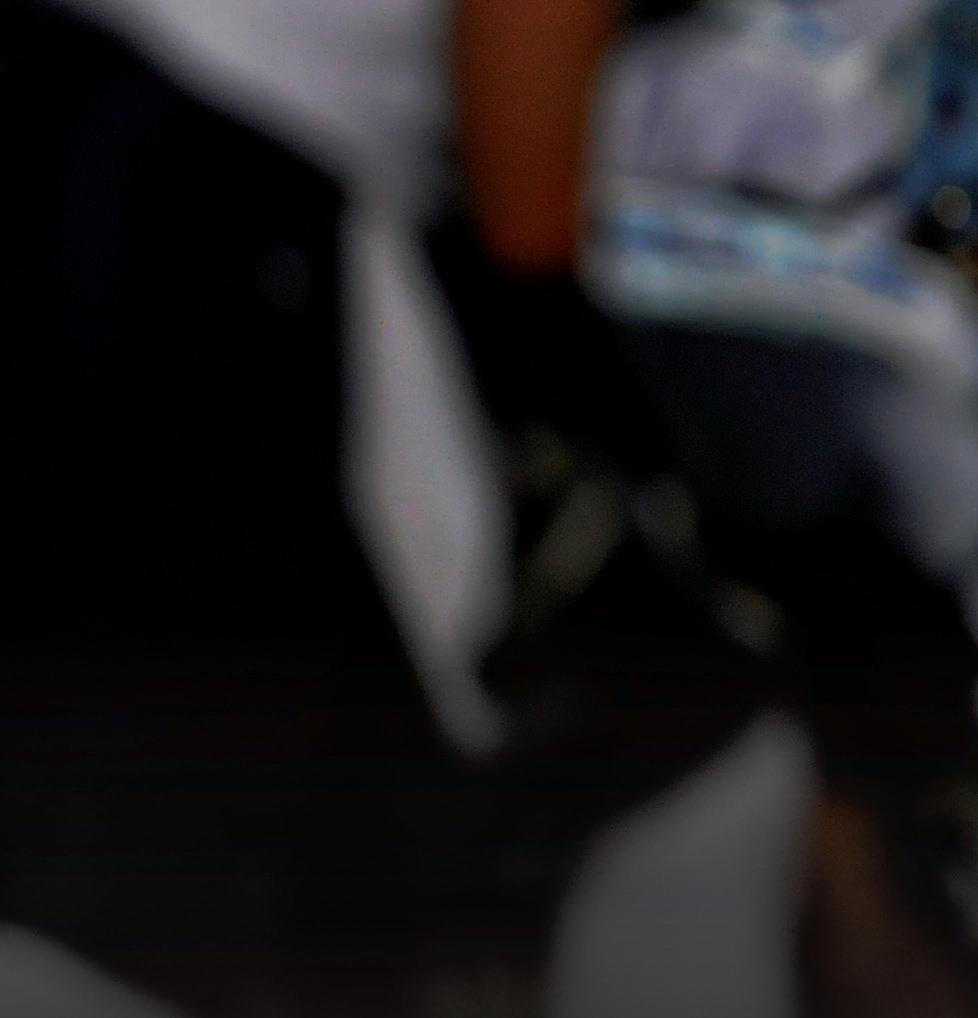

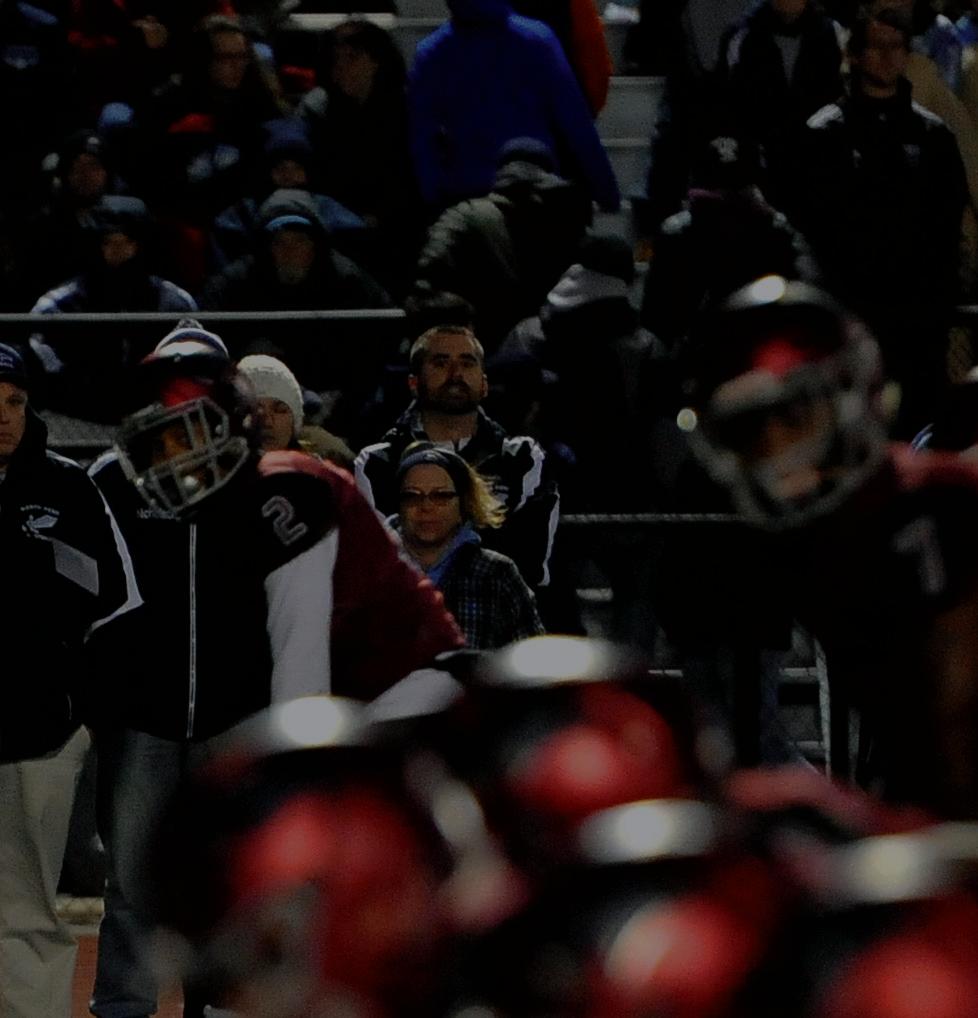
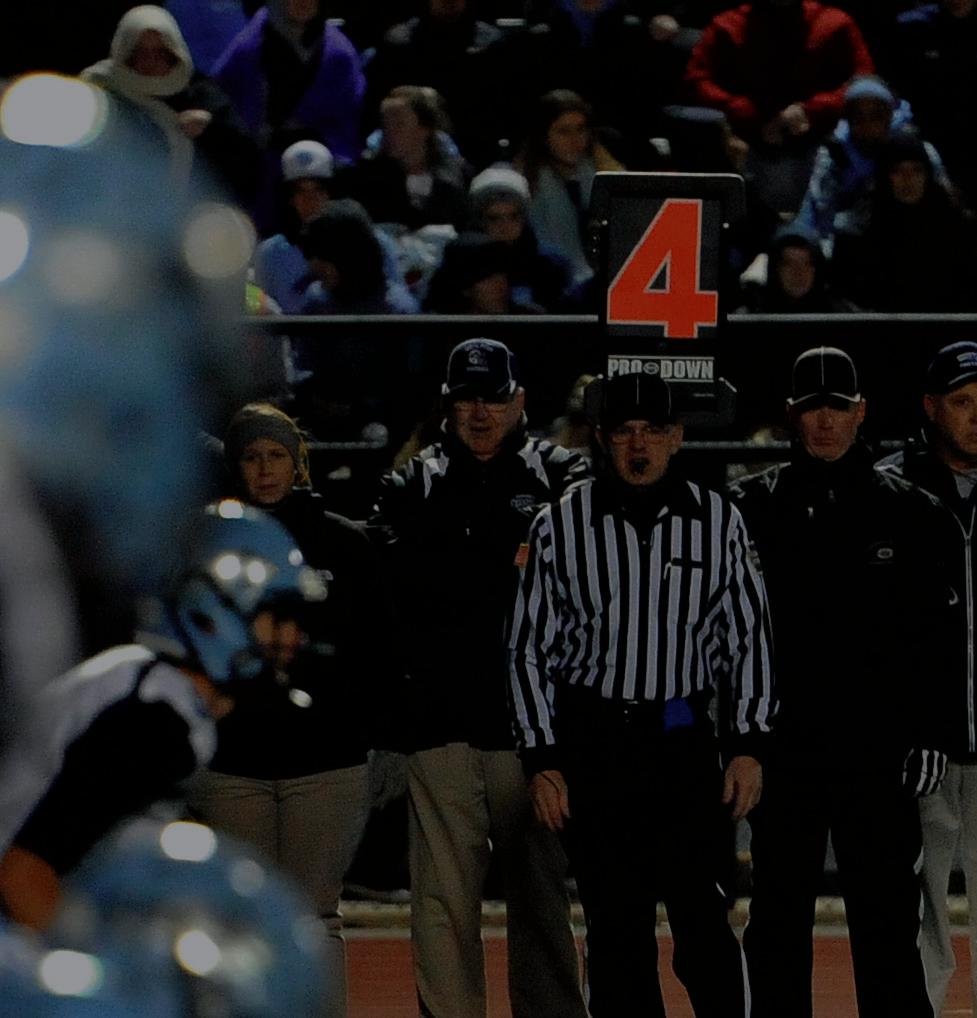

NASO Game Savers are established officials who are willing to help guide officiating prospects through the process of becoming a sports official in their local area and chosen sport(s) by putting them in touch with the right people, associations, leagues and assigners, and leading them through the necessary steps toward becoming a registered official.
VOLUNTEER TODAY! SIGN UP @
NASO.ORG/GAMESAVER


NATIONAL ASSOCIATION OF SPORTS OFFICIALS
THERE IS A NEED FOR COMMITTED GAME SAVERS IN ALL PARTS OF THE COUNTRY • ALL DIFFERENT SPORTS • ALL DIFFERENT LEVELS
Group finds recruiting success with Associate Officials program
By Doug Davenport
For the past 18 years, the Eastern Massachusetts Lacrosse Officials Association (EMLOA) has been developing and supporting a comprehensive training program for boys’ youth lacrosse officials.

Those efforts — called the Associate Officials (AO) program — have been paying off.
In 2023, there were 15 different classes covering Eastern Massachusetts, with more than 300 participants.
The EMLOA took over the endeavor from the Massachusetts Bay Lacrosse League and has refined the training program into a combination of in-person classes, online testing and mentoring to prepare high school-age players to officiate local youth leagues, often with fully certified high school officials working side by side.
The program has been developed by the EMLOA’s president, Darrell Benson, with regional assistance from Jon Izzo, Randy Wong and Rick Catalano.
“We started with a full day of training in a classroom setting and have since refined it into our current itinerary of a pre-test, a two-hour classroom session and a final rules test,” Benson said. “From there, the first game on the field is with a high school official, which includes an initial evaluation, and we fine-tune from there.”
The AOs need to be sponsored by the towns that have availed themselves of the program. There is a nominal fee for the training, which includes the class, online information, a rules handout and testing. Participants must purchase a striped shirt, hat, flags and a whistle, with some towns picking up the tab for these items.
Each town has a coordinator who works with the EMLOA assigner to schedule the AOs for games. Senior AOs, who are generally high school seniors with a year or two of experience, can officiate the youngest levels alone; otherwise the AO works games alongside a fully certified high school official.
PHOTOS COURTESY OF EMLOA
72 | REFEREE September 2023
AO-K
The AO is generally placed on the side of the field opposite the benches to provide a little protection from the coaches.
The certified official may have to cover a little more ground than usual, but generally everyone is aware of the situation and perspective is maintained. It’s an opportunity for certified officials to mentor the AO, giving them on-the-job training.
Massachusetts Bay Lacrosse Director Bob Thompson has been a huge advocate for the 12 years he has been involved.

“We are teaching the kids about the complexities of officiating and the importance of it,” Thompson said. He got his two sons involved as AOs. “They have gained a new perspective, as both players and now officials.”
Thompson is keenly aware of the need for more officials. “We hope the AO experience will be positive and that they continue on to be full officials in the future,” Thompson said.
Bill Wallace, president of the Old Colony Lacrosse League, also praised the program.
“The AO program has been extremely successful in teaching the high school players how to referee and interact with the youth programs,” Wallace said. “The adult referees are always extremely helpful in teaching the rules of the game and how to promote sportsmanship.”
Benson said there are multiple benefits of the AO program.
“It saves the youth leagues money, as the AOs earn half the pay rate of the certified officials,” he said. “We are able to educate the AOs on the rules and finer points of officiating, which they often take back to their high school teammates,
which benefits everyone. It has laid the groundwork for many to eventually become fully certified officials during and post college.”
In one case, the program brought in an adult. An AO’s father decided to officiate with his son, rather than just driving him to his games. The father, a local high school head football coach, got fully certified as an official and now works a full high school schedule yearly.
The program drew Jacob Banks into officiating. He’s currently a junior playing lacrosse at UMass-Boston. He started as an AO for EMLOA and is now an Apprentice Official, eligible to officiate all subvarsity high school and youth games as a certified official.
“I got into officiating during high school and started off in my youth town lacrosse program,” Banks said. “Playing lacrosse all my life, I have seen both sides of the lacrosse field as a player and now as an official.”
Banks said he now has a greater appreciation for officials.
“As I play, I watch their technique and how they carry themselves throughout games,” he said. “Officiating has created
Below, Darrell Benson, president of the Eastern Massachusetts Lacrosse Officials Association, leads a class for trainees in the Associate Officials (AO) program. At left, Mansfield (Mass.) High School sophomore and AO program participant Andrew Degorolamo oversees a faceoff.

a different kind of passion for me and how I look at the game of lacrosse. I look forward to continuing my officiating career after college and helping to continue to grow the sport of lacrosse.”

Not every AO continues officiating while in college, but there’s hope some will resume after graduation.
The AOs often introduce themselves to the officiating crews of their high school games, creating a unique camaraderie that helps break down any “us versus them” attitude between players and officials.
“It has given me a completely different perspective of the officials,” said Mason Thompson, a freshman at King Philip High School in Wrentham, Mass. He is in his second year as an AO. He said he has been able to educate some of his teammates about the rules of lacrosse.
“I am learning more about refereeing all the time,” Thompson said.
The AO program has helped support the development of many new officials, but it’s an ongoing process to train and mentor the next generation in stripes.
“The task is never-ending,” Benson said.
Doug Davenport, Medfield, Mass., is vice president of EMLOA for compliance and recruiting. He officiates high school basketball, football and lacrosse. *
FOUR ON THE FLOOR (OR COURT)
You Can Accelerate Your Performance
By Suzanne Dodd
Sports officials need a number of different types of skills in order to be successful. A good understanding of the rules is simply not enough to be an elite official. Physical fitness and conditioning

are certainly important, but won’t guarantee success. Mental toughness to thrive in challenging conditions plays a critical role. Communication with coaches and players ensures a smooth-running game.
A skill is defined as a learned (as opposed to genetic) competency.
That is, with practice and experience, skills develop and become more refined and proficient. The very definition of skills suggests weaknesses can be improved with training. To be the best official possible, adopting that growth mindset is critical to performance.
ALL SPORTS FOR ALL SPORTS, ALL LEVELS 78 | REFEREE September 2023 EDITOR: JEFFREY STERN jstern@referee.com
HESTON QUAN
Katrina Flores, Long Beach, Calif., remains calm while being questioned by a player about a ruling. Mental toughness, confidence, focus, attention and stress management are psychological skills, one of the four skills necessary to excel in officiating.
But what types of skills are included in officiating?
Sport scientists note the skills necessary to be successful in sport fall into four different categories. Just like the athletes we’re officiating, officials need to be aware of and develop all the types of skills. While some sports may rely on certain skills more than others, strength in each of the following four types of skills is critical for success.
Think about how each of these applies in an officiating context.
Physical
The players need the foundational motor skills of walking, running, jumping, throwing, hitting, kicking and catching. They also require more advanced sportspecific skills of strength, endurance, flexibility, speed, balance and coordination. And in order to keep up with those athletes, officials need to develop the same skills.
A basketball referee, for example, won’t be very successful without matching the speed and endurance of the players running up and down the court. Ice hockey referees who lack agility and coordination on the ice may find themselves out of position to call a penalty. The plate umpire who lacks strength and flexibility may tire in late innings and become distracted during play.
Good officiating demands the officials can — at a minimum — keep up with the players. Those physical skills cannot be overemphasized. And even when officiating sports with low physical demands, the benefits of looking fit in uniform can often contribute to success.
Technical
Technical skills are the bits of specialized knowledge and expertise required to perform specific tasks. They might often be referred to as “hard skills.” Those skills are practical and specific. Technical skills are also specific procedures to move one’s body to perform a task. The basic moves and concepts needed to play a sport are developed by athletes early in their playing
career. Soccer and basketball players develop highly proficient dribbling skills. A swimmer works hard to master a stroke and make it as strong and as efficient as possible. A softball pitcher works on placement of pitches, speed, spin and planes. Those are critical technical skills necessary for success.
In officiating, rules knowledge falls into the category of technical skills. The ability to easily recall rules and apply them in specific situations is an example of a critical technical skill needed for sports officials. Technical skills are also demonstrated when communicating a foul to the scorer, when signaling a strikeout in baseball and when awarding a point in wrestling. There are preferred — and in some cases, required — mechanics. Those constitute technical skills and play an important role in an official’s success.
Basketball referees working a middle school game one night in a crew of two and switching to a varsity game the next night with a three-official crew must adapt. Understanding the nuances of the different systems, being in the correct position and performing duties correctly requires mastery of technical skills.
Tactical Skills that involve decisionmaking and actions to gain an advantage over the opponent constitute tactical skills. Those skills include a measure of psychological consideration combined with physical action. For example, a game tactic might be to call a timeout in an attempt to ice a kicker preparing for a field goal. In volleyball, a tactical skill is when to attack cross-court versus tool it off the block. A baseball coach may put a pinch runner in the game to gain an offensive tactical advantage.
The game officials must also be aware of and develop tactical skills. Officials are involved in decision-making actions that help to ensure or restore order, to ensure the competition proceeds equitably and to re-assert control. How often has a volleyball coach questioned
SURVEY SAYS …
A poll conducted by Ipsos on behalf of Reuters News indicates the top 10 countries where citizens are most likely to agree that they have “been to children’s sports events and witnessed parents become verbally or physically abusive toward the coaches or officials.”
Country
United States ....
India ..................
Italy ...................
Argentina ..........
Canada .............
Australia ............
Spain ................
Belgium ............
Great Britain .....
Sweden ............
NOTE: SURVEY BASED ON INTERNATIONAL SAMPLE OF 23,351 ADULTS, AGED 18-64, IN 22 COUNTRIES.
BY THE NUMBERS
The most and least penalized teams aren’t always at the top or bottom of the standings.
244
Penalties called against San Francisco and Miami in 2022, most among NFL teams.
22-12
Combined record of those teams.
175
Penalties called against the Los Angeles Rams and Atlanta in 2022, least among NFL teams.
12-22
Combined record of those teams.
SOURCE: NFLPENALTIES.COM
THEY SAID IT
“I think about it every day. Don Denkinger’s play was (in 1985) and he is still answering questions. When my play happened, Don told me on the phone that he literally got 40 phone calls from the press.”
— Retired MLB umpire Jim Joyce, whose safe call in a 2010 game cost Armando Galarraga a perfect game, on his kinship with retired umpire Don Denkinger, who faced a similar situation. Denkinger died May 12, 2023.
REFEREE September 2023 | 79
60%........ 59%........ 55%........ 54%........ 53%........ 50%........ 42%........ 39%........ 37%........ 35%........ 40% 41% 45% 46% 47% 50% 48% 61% 63% 65% Agree Disagree
ballhandling consistency? Learning where to establish the standard for ballhandling is a tactical decision based on a number of factors including level of play and athleticism. A soccer referee makes tactical decisions when deciding whether to call a foul or to indicate an advantage has been gained. When to warn a player about potentially offensive trash-talking requires tactical skills.
Psychological
The last of the four types of skills are those that involve mental and emotional components. The psychological skills include mental toughness, confidence, focus and attention, and stress management among others. Those skills are critical to overall performance but are often overlooked.
Just as the players need to be able to focus when the game is on the line, so do the officials. When a game enters overtime and the players need confidence to take a gamewinning shot, the officials also need
50-50 Calls: Not Half Bad
By the Referee editors
If you put 30 sports officials in a room, regardless of the sport, and watch a tight play on video, what happens during the dissection of the action afterward? A big argument, right? On average half will see it one way and half will have the opposite view.
We are trained to get our rulings correct. We study the rules, learn complex situations, watch video and get feedback from clinicians at camps. All that work doesn’t ensure
Did the ball hit the glove before the foot hit the base? Fifty umpires in a room might see it one way and 50 others see it the other. But that’s the challenge of officiating.

confidence they’re making the correct call or no-call. When stress and selfdoubt enter the mind, the ability to remain focused and mentally tough is critical. Recovering quickly from an unpopular call is an important psychological skill. Persevering through difficult weather conditions requires positive self-talk and mental toughness.
A combination of each of the four types of sport skills is critical to officiating success. None of those can be overlooked. Elite-level officials are aware of the importance of each of those types of skills and do not overlook any of them. Consider the different ways to train and improve in each of the skills.
Many officials devote the majority of their training time to physical fitness and conditioning. In sports that require a great deal of movement, that is a wise use of time. But is physical conditioning any more important than rules knowledge? Is it any more important than learning the nuances of when to assess a foul or when to warn a player?
In sports with less physical demands on the officials — such as tennis, volleyball or swimming — how much emphasis during training is placed upon psychological skills enhancement? Learning how to maintain attention in bad weather, under stressful conditions and in the face of adversity is a critical skill for success that can be developed with proper training.
Consider the four different types of skills and how they fit in to training and performance. Good officiating mandates awareness of the contributions of strong physical, technical, tactical and psychological skills to overall performance. What are your strengths? Do you have a weak area? Train each of the different skill types in order to reach officiating excellence.
Suzanne Dodd, Greenville, S.C., is an adjunct faculty member in the College of Health Professions at Anderson University. She is a PAVO and USAV National referee and a PAVO National line judge. *
ALL SPORTS 80 | REFEREE September 2023
DALE GARVEY
perfection. Nor does it ensure we’ll always be on the same page as our partners or that reasonable people can’t disagree on a specific play.
At the same time, there is a presumption in almost all sports that there is only one correct ruling for a specific play. You are either right or wrong. That’s not true. Given the complexity of factors and the speed with which players run, balls are thrown and bodies clash, we can’t presume certain movements or contact can always be ruled one way or another. Sometimes the play is a 50-50 call and we should remember that.
Take baseball for example. Umpires know the strike zone. The pitcher has to hit a small area. If he’s off just slightly, it won’t be a strike. But there are edges to the plate. The ball is thrown with great velocity. Balls curve and sink. Every umpire knows and recognizes those factors, yet there is still an expectation of 100 percent accuracy.
What about the ball that ever-soslightly shaves the corner? Or the ball at 98 mph that appears to cut across the corner? Did the umpire see it perfectly? Perhaps the base umpire saw it differently. A camera catching the ball’s movement played back in slow motion may support one or the other or identify it as a 50-50 ruling. We should stop beating ourselves up under the presumption one ruling applies to all plays. There’s no question that many, if not most, of our rulings are clear cut and should only yield one decision.
There are also times where the judgment is fuzzy and you can go
either way. Holding by the offensive line in football certainly fits the category. You can study the rules for decades, but when you head onto the field, there’s so much action and the bodies are gigantic, so you can’t see everything at all times. When you do, even with a great angle, you may not see a hand grabbing or a jersey being yanked. What looks like a significant tug to you may be a light pull to one of your crewmates.
There’s judgment involved and you’re expected to decide quickly whether to throw a flag or not. Hindsight from video may clarify that the ruling should have gone one way or the other, but on the field it was 50-50.
Keep in mind when you officiate that you won’t always get 100 percent agreement with your partner(s), nor should you expect to on certain plays. Some are 50-50, and we should leave it at that. *
YOUR KEY TO BETTER COVERAGES







$1595 only
HIGH SCHOOL FOOTBALL CREW OF 5
KEYS
MAP
A fast way to easily identify the keys and determine coverages in a crew of 5. The convenient laminated map is perfect to use at home or to throw in your bag for easy pregame meetings with your crew.




GET YOURS TODAY STORE. /footBALL SIZE: 18”X16.5” 16 PANEL LAMINATED MAP
We should stop beating ourselves up under the presumption one ruling applies to all plays.
PROFESSIONAL POSTSEASON ASSIGNMENTS
•Denver defeated Miami, four games to one, to win the 2023 NBA championship. Referees for the Finals were Marc Davis, Scott Foster, John Goble, David Guthrie, Bill Kennedy, Ed Malloy, Kevin Scott, Josh Tiven, James Williams and Zach Zarba. Officials for preliminary rounds:
First round — Ray Acosta, Brent Barnaky, Curtis Blair, Tony Brothers, Nick Buchert, Sean Corbin, Kevin Cutler, Eric Dalen, Davis, J.B. DeRosa, Mitchell Ervin, Tyler Ford, Brian Forte, Foster, Pat Fraher, Jaycn Goble, John Goble, Guthrie, Kennedy, Courtney Kirkland, Karl Lane, Eric Lewis, Mark Lindsay, Tre Maddox, Malloy, Rodney Mott, Gediminas
Petraitis, Scott, Aaron Smith, Michael Smith, Ben Taylor, Tiven, Justin Van Duyne, Williams, Sean Wright and Zarba.
Conference semifinals — Blair, Buchert, Corbin, Davis, Ervin, Ford, Forte, Foster, Fraher, Ja. Goble, Jo. Goble, Guthrie, Kennedy, Kirkland, Lane, Lewis, Lindsay, Malloy, Mott, Petraitis, Scott, Taylor, Tiven, Williams, Wright and Zarba.
Conference finals — Blair, Brothers, Davis, Ford, Forte, Foster, Jo. Goble, Guthrie, Kennedy, Kirkland, Lewis, Lindsay, Maddox, Malloy, Mott, Scott, Taylor, Tiven, Williams and Zarba.
•The Vegas Golden Knights defeated the Florida Panthers, four games to one, to win the 2023 NHL Stanley Cup. Referees for the Finals were Steve Kozari, Wes McCauley, Dan O’Rourke, Chris Rooney and
FOR THE RECORD
AWARDS, ROSTERS, NOTABLES
Kelly Sutherland. Linesmen were Steve Barton, Scott Cherrey, Brad Kovachik, Kiel Murchison and Jonny Murray.
Officials for preliminary rounds: First round — Referees: Jake Brenk, Francis Charron, Gord Dwyer, Eric Furlatt, Trevor Hanson, Jean Hebert, Kozari, Frederick L’Ecuyer, Chris Lee, T.J. Luxmore, McCauley, Jon McIsaac, Kendrick Nicholson, O’Rourke, Kevin Pollock, Garrett Rank, Kyle Rehman, Rooney, Graham Skilliter and Sutherland. Linesmen: Shandor Alphonso, Barton, Devin Berg, David Brisebois, Cherrey, Michel Cormier, Kyle Flemington, Brandon Gawryletz, Travis Gawryletz, Ryan Gibbons, Kovachik, Matt MacPherson, Jesse Marquis, Bevan Mills, Murchison, Murray, Bryan Pancich, Andrew Smith, Libor Suchanek and James Tobias
Conference seminfinals —

Referees: Dwyer, Hanson, Hebert, Kozari, Lee, McCauley, McIsaac, O’Rourke, Rehman, Rooney, Skilliter and Sutherland. Linesmen: Alphonso, Barton, Berg, Brisebois, Cherrey, Cormier, Kovachik, MacPherson, Mills, Murchison, Murray and Pancich
Conference finals — Referees: Hanson, Hebert, Kozari, Lee, McCauley, O’Rourke, Rooney and Sutherland. Linesmen: Barton, Brisebois, Cherrey, Kovachik, MacPherson, Mills, Murchison and Murray
COLLEGE
•LSU defeated Florida, two games to one, to win the 2023 NCAA Division I baseball College World Series. Umpires were Ramon Armendariz,
Angel Campos, Brandon Cooper, Jeff Head, Casey Moser, Travis Reininger, David Savage and Billy Van Raaphorst. Umpires for preliminary rounds (CC) indicates crew chief, (ACC) indicates assistant crew chief:
Super Regionals: Rick Allen, Linus Baker, Michael Banks, Craig Barron, Jason Bradley, Mark Buchanan, Greg Charles, Scott Cline (CC), Dave Condon, Tim Cordill, Chris Coskey (CC), Perry Costello, Brian deBrauwere, Adam Dowdy (CC), Clint Fagan, Eric Goshay, Jeff Gosney, Greg Harmon, Darren Hyman (CC), Mike Jarboe, Scott Letendre, Kellen Levy, Brian Marine, Mike Morris, Shawn Rakos, Patrick Riley, Grady Smith (CC), Greg Street, Kevin Sweeney (CC), Jake Uhlenhopp (CC), David Uyl and Mark Wagers (CC).
Regionals: James Albert, Allen, Matthew Anderson, Armendariz (CC), Baker (ACC), Banks (ACC), Barron (ACC), Damien Beal, Joseph Blumenauer, John Bostwick, Bradley, John Brammer, Ryan Broussard, Buchanan (ACC), Seth Buckminster, Jon Byrne, Campos (CC), Shane Cannon, Travis Carlson, Charles (ACC), Cline (CC), Condon, Cooper (CC), Cordill, Coskey (CC), Costello (ACC), Danny Cricks, deBrauwere, Dowdy (CC), Travis Eggert, Kevin Elzey, Derrick Everett, Fagan (ACC), Blake Felix, Mike Fichter, Sal Giacomantonio, Don Goller, Chris Gonzalez, Goshay, Gosney (ACC), Joseph Gravina, Ray Gregson, Chris Griffith, Rob Hansen, Harmon (ACC), Joe Harris, Jason Harstick, Head (CC), Jeff Henrichs (ACC), Brandon Henson, Mark Hutchison, Hyman (CC), Javarro January, Jarboe (ACC), Daniel Jimenez, Richard Katz, Clint Lawson, Letendre, Levy (ACC), Joe Maiden, Marine, Bill McGuire, Stephen McMullen, Brian Miller, Derek Mollica, Morris (ACC), Moser (CC), Eddie Newsom, Kyle Nichol, Alex Ortiz, Brian Peterson, Rakos (ACC), Wilson Raynor, Reininger (CC), Patrick Riley, Richard Riley, Tim Rosso, Alberto Ruiz, Savage (CC), Jim Schaly, Josh Schepis, Grady Smith (CC),
Joe Smith, Greg Street (ACC), Sweeney (CC), Uhlenhopp (CC), Uyl (ACC), Van Raaphorst (CC), Jason Venzon, Doug Vines, Wagers (CC), Matthew Wilbanks, Doug Williams, Tim Winningham, Mark Winters and Jeff Wright.
•Angelo State (Texas) defeated Rollins (Fla.), 6-5, to win the 2023 NCAA Division II baseball World Series.
Umpires for the series were (CC indicates crew chief) Jeff Arthur (CC), Carbondale, Pa.; John Hastings (CC), O’Fallon, Ill.; Jon Jordan, East Longmeadow, Mass.; Bobby Dunnigan, Boone, N.C.; Ryan McCraney, Pensacola, Fla.; Ryan Karle, Topeka, Kansas; Brooks
O’Hearn, Aurora, Colo., and Tyler Schmidt, Cheney, Wash. Umpires for preliminary rounds: Regionals — Jordan (CC); Joe LaBella (CC), Allentown, Pa.; Tyler Bullock, Swansea, Mass.; Thomas Clare, Ramsey, N.J.; Frank Endl, Kenilworth, N.J.; David Gonzalez, Clifton, N.J.; Michael Hinojosa, Revere, Mass.; Nick Thul, Basking Ridge, N.J.; Arthur (CC); Pat Atkins (CC), Charleston, W.Va.; Austin Adam, Hamburg, Pa.; Albert Jones, Mill Hall, Pa.; Bobby Lynn, Montoursville, Pa.; Bill Reuter, Mount Joy, Pa.; Ben Smith, Winfield, W.Va.; Tony Veltri, Fairmont, W.Va.; Dunnigan (CC); Gary Keller (CC), Rock Hill, S.C.; Don Andrews, Ludowici, Ga.; Danny Everett, Buford, Ga.; Pat Gentry, Grayson, Ga.; Julius Green, Charlotte, N.C.; Kirk Lundell, Waxhaw, N.C.; Kevin Spivey, Lilburn, Ga.; McCraney (CC); Kevin Flay (CC), Lake Mary, Fla.; John Bennett, Sarasota, Fla.; Daniel Glidewell, Daviston, Ala.; Casey Sanchez, Orlando, Fla.; Nate Starr, Panama City, Fla.; Paul Taylor, Edgefield, S.C.; Kedrin Wright, Ellenwood, Ga.; Hastings (CC); Steve Miller (CC), Toledo, Ohio; Jason Dreier, Troy, Ohio; Zo Evans, Morton, Ill.; Todd Odell, Eastlake, Ohio; Brad Polk, Bolivar, Tenn.; Chris Silvestri, Sioux City, Iowa; Tom Swoboda, St. Louis; Karle (CC); Nate Foley (CC), Lincoln, Neb.; Kenny Akin, Havana, Ark.; Jeff Kopecky, Gretna, Neb.; Derek Roberts, Prior Lake, Minn.; Nate Simmons, Hideaway, Texas; Connan Strobel, Andover, Kansas; Lance Vaughn, Topeka, Kansas; O’Hearn (CC); Courtney
82 | REFEREE September 2023
Designate NASO as a beneficiary of your retirement plan or life insurance policy.
800-733-6100
LEARN MORE AT NASO.ORG/LEGACY OR CALL
Lowrance (CC), Van Alstyne, Texas; Cody Allenbrand, Denver; Steven Fuller, Harker Heights, Texas; Matt Herrera, Katy, Texas; Mark Moffett, Thornton, Colo.; Dominic Toledo, Bernalillo, N.M.; Cody Whitehead, Bullard, Texas; Schmidt (CC); Jim LeBeau (CC), Waipahu, Hawaii; Ron Adams, Baypoint, Calif.; Stu Bertrand, Billings, Mont.; Denver Dubreuil, Thousand Oaks, Calif.; Dale Gardner, Rancho Cucamonga, Calif.; Scott Jones, Ventura, Calif. and Harrison Silverman, Roseville, Calif.
Super Regionals — LaBella (CC), Hinojosa, Jordan, Endl, Atkins (CC), Lynn, Arthur, Veltri, Keller (CC), Everett, Dunnigan, Spivey, Flay (CC), Bennett, McCraney, Starr, Miller (CC), Polk, Hastings, Swoboda, Foley (CC), Strobel, Karle, Simmons, Moffett (CC), Lowrance, O’Hearn, Whitehead, LeBeau (CC), Gardner, Schmidt andJones
•Lynchburg (Va.) defeated Johns Hopkins, 7-6, to win the 2023 NCAA Division III baseball World Series. Umpires for the series were (CC indicates crew chief) Eric Byrum, Michael Chukerman, Rudy Firmbach (CC), Lou Kammermeier (CC), Dominick Longbucco, Bret Miell, Bill Rush and Roger Wolfe. Umpires for preliminary rounds:
Regionals — Dan Adkins, Scott Amox, Eric Becnel, Justin Bertsche, Lou Bonacci, Will Bowers, Christopher BrentPost, Jacob Brinegar, Jeff Brogan, Justin Burton, Byrum, Chris Calkins, Brent Cardwell, David Chiasson, Chukerman, Jeff Clifford, Rodney Davis, John DeGirolamo, Ryan Dimare, Curtis Dugar, Rex Engstrand, Michael Federer, Aaron Fink, Firmbach, Brian Fuller, David Gabor, Pat Galdonik, Michael Gerber, Ben Gray, Lee Gruen, Steven Hart, Martin Hasenfuss, Phil
Heim, Steve Hilgendorf, Drew
Hoagland, John Howe, Kenny Hyatt, Joe Iglio, Frank Iurilli, Kammermeier, Greg Kiewitt, Jeff Kinney, Brett Koehler, Leon Kruset, Pete Lakkis, Jason
Lambert, Russ Lundquist, Sean Martin, Jerry Martinez, Miell, Garett Moselle, Keith Mundt, Justin Murphy, Erik Nilson, Keith Petersen, Mark Piantedosi, Cory Ray, Ben
Robertson, Adam Rogers, Mark Rowan, Rush, Jason Schneider, David Schwartz, Sean ShaferMarkle, Devin Shehab, Steve Sillers, Eric Slosek, Mark Snyder, Greg Stanley, Ron Starsiak, Allen Stekl, Aaron Stokke, J.B. Torres, Lyle Travis, Carl Villanueva, Jesse West, Wolfe and Bill Worthington.
Super Regionals — Adkins, Bowers, Burton, Byrum, Chukerman, Firmbach, Fuller, Gabor, Hasenfuss, Hilgendorf, Hoagland, Kammermeier, Kiewitt, Koehler, Lakkis, Longbucco, Cole Lumpp, Lundquist, Martin, Bryce McCalla, Miell, Mundt, Murphy, Petersen, Piantedosi, Rowan, Rush, Pete Saucedo, Slosek, Torres, Travis and Wolfe.
HIGH SCHOOL
•These officials were assigned by the Wisconsin Interscholastic Athletic Association to work 2023 winter sport state championships:
Boys’ basketball — Gregory Blum, Madison; Matthew Boeder, Oshkosh; Matt Burry, Appleton; Kyle Christiansen, Valders; Vince Diplaris, Waukesha; Tom Fiedler, Eau Claire; Rhoderick Fields, Appleton; Jason Fisch, Suamico; Rich Fronheiser, Columbus; John Furrer, Menomonee Falls; Tony Giombetti, Appleton; Michael Graber, Kimberly; John Hemauer, West Bend; Lawrence Holschuh, Appleton; Charlie Ihle, West Salem; Dave Jameson, Oregon; Curt Johnson, Antigo; Kevin Johnson, Iola; Kenneth Koester, Wauwatosa; John Logue, Wauwatosa; Jeb Loth, Elkhorn; Jason Mangin, Appleton; Mike Martin, Jackson; Tim McIntyre, Danbury; Cody McLean, Markesan; Ellis Miles Jr., Milwaukee; Zach Morley, Middleton; Jim Myers, Mount Horeb; John Palesse, New Berlin; Nick Pilsner, Stevens Point; Casey Pivonka, De Pere; Kelvin Porter, Milwaukee; Anthony Rasmussen, North Fond du Lac; Bobbie Reinhart, Madison; Richard Schwarz, Manitowoc; Jay Shields, Milwaukee; Mark Sorensen, Hartland; Brian Trettin, Ashland;
Don Van Deurzen, Little Chute; Scot Vandenheuvel, Kaukauna; Dennis Von Rueden, New Berlin; Robert Von Rueden, Brookfield; James Wilbern, Milwaukee; Tim Windler, Brookfield; Jimi Zawacki, Strum.
Girls’ basketball — Pamela Alexander, Milwaukee; Rod Amys, Poplar; Dave Baker, Milwaukee; Marc Blakeley, Johnson Creek; Larry Bodin, Onalaska; Todd Boivin, Shawano; Brian Burgert, Oshkosh; Abby Burmeister, South Milwaukee; Terri Byrd, DeForest; Brent Christianson, Elk Mound; Joseph Cyran, Stevens Point; Paul Ford, Howard; Zach Ganschow, Mondovi; Michelle Gates, Onalaska; Tiffany Hardy, Pleasant Prairie; Jeff Hartl, Kiel; Patrick Hawker, Cottage Grove; Tony Huizenga, Cambria; Tammy Hutchison, Mount Pleasant; Mark Jandrin, Luxemburg; Andy Krautkramer, Marathon; Michael LaGrassa, Milwaukee; Mark Larson, Oshkosh; Jeff Linehan, River Falls; Nick LoCicero, Oak Creek; Cade Martin, Mondovi; Daniel McCulloch, Oshkosh; Jarod Meyer, Superior; Steven Olson, Superior; Nick Pack, Baldwin; Travis Parr, Mondovi; Rick Prince, Menomonie; Jeff Prince, Colfax; Randy Rasmussen, Marathon; Fritz Richter, Waukesha; Jerry Sample, Onalaska; Mark Schlueter, Platteville; Gregg Scott, Mosinee; Andrew Sislo, Superior; Terry Ver Straate, Kiel; Tim Wagner, Jefferson; Kenneth Welter, Dickeyville; Kirk Wieland, Milton; Tommie Williams, De Pere; Mark Zwart, Monona.
Gymnastics — Patricia Abraham, Onalaska; Jan Adkins, Sun Prairie; Michelle Andrews, West Bend; Debbie Brown, Sun Prairie; Kim Carlsen, Pewaukee; Lori Castleberg, Sun Prairie; Cheryl Chapman, Brookfield; Helen Culliney, Grafton; Karen Doll, Middleton; Shelley Fahey, La Crosse; Barbara Fotsch, Sussex; Megan Gracia, Madison; Tania Gray, River Falls; Megan Haley, Lisbon; Cheryl Hancock, Holmen; Cindy Hoenisch, Eau Claire; Julie Kleist, Sussex; Marijean Lucas, Prescott; Janelle Martinson, Cottage Grove; Lori Neuman, Sun Prairie; Jane Schwartz,
Ixonia; Kristin Sutter Parent, Mount Horeb; Roseann Tank, Fort Atkinson; Susan Vielgut, Glendale; Cyndie Zocher, Middleton.
Hockey — Sean Albrecht, Eau Claire; John Annis, Monona; Ryan Berdal, Weston; Michael Biever, Tomahawk; Mark Bray, Appleton; Patrick Courtney, Muskego; David Crisman, Waupaca; Ryan Darrow, Lake Hallie; Nano Espenes, Madison; Adam Johnsen, DeForest; Dan Kassis, Oregon; Dave King Sr., Winneconne; Dustin Klitzke, Appleton; Nikki Kloes, Lake Tomahawk; Andy Krahenbuhl, Cameron; Bryce Maphis, Waukesha; Scott Noles, Dousman; Jason Peters, Wausau; Justin Peters, Marathon; AJ Rahm, Appleton; Dave Reichenbacher, Greenville; Ryan Reischel, Sun Prairie; Derek Robarge, La Crosse; Brandon Schroder, Marathon; Tony Stemberger, Brookfield; Scott Suick, Green Bay; Scott Swid, Wausau.
Boys’ swimming and diving — William Benson, Fond du Lac; Scott Hertting, Appleton; Thomas Miller III, Menomonie; Stewart Oliver, Elm Grove; Tom Wencel, Middleton.
Individual wrestling — Philip Amstadt, Rhinelander; Tony Antczak, Dallas; Michael Arendt, Franklin; Patrick Austinson, Sussex; Bill Cook, Mosinee; Rodney Davis, Sharon; Patrick DeBruin, Appleton; Adam Guthrie, Bloomington; Lynn Isensee, Sparta; Ted Kiefer, Stevens Point; Brett King, Grafton; Eric Reukauf, Dodgeville; Mark Parrott, Reedsburg; Gail Pronschinske, Hudson; Joe Puetz, Cuba City; Todd Schaaf, Sauk City; Bruce Shefchik, Luxemburg; Steve Skarda, Menasha; Neal Stake, Evansville; Tony Wilson, Waukesha.
Team wrestling — Bill Coker, Athens; Jim Ewing, Weyauwega; Mark Farrell, Pleasant Prairie; Kevin Guilette, Forestville; Thomas Platner, Cedar Grove; Mike Schumacher, Menasha. Offmatt officials: Ron Arendt, Palmyra; Steven Graeber, Tomahawk.
Do you have any rosters, assignments or awards that warrant mention?
Send info to us at ForTheRecord@referee.com
REFEREE September 2023 | 83
Association Restrictions May Carry a High Cost
By Donald C. Collins
Associations can be sorely tempted to bar both current and former members from working for other associations. Whatever the reasons, associations would be wise to steer clear of restricting members even when doing so is perfectly legal.
The law distinguishes current members from former members (see siderail item about restricting former members). It’s generally easier to restrict current members. However, there are some factors an association must consider before restricting anybody.
The first factor associations must consider is location. Most states apply a contract theory to restricting current workers. These states allow an employer to bar a worker from working a second job because it’s part of the contract. An association should consult with local counsel to see if it’s located in one of these states.
exchange of promises; if I don’t get any extra pay or some other benefit for the restriction, there’s really no contract. It is not clear how these states would handle association bylaws since those are contracts. The issue may boil down to whether the school or the association is writing the official’s check.
Also, association members, like all workers, have a duty of loyalty to their current employer. Whether your state allows restrictions or doesn’t allow them, a worker can’t moonlight on a second job if it’s going to hurt the current employer’s business. In essence, the duty of loyalty allows the average Burger King worker to take a second job at McDonald’s, but would allow Burger King to stop its vice president from moonlighting at McDonald’s.
Officials aren’t generally going to embarrass association A by working games for competing association B, but there are circumstances where they might. Members should not work for other associations in those circumstances.
What About Restricting Former Members?
When it comes to associations restricting members from working for other associations, it can be tougher with former members.
It is done through non-compete agreements, and most states do allow them. However, there are limits. The three big limits are they must protect a legitimate business interest, and be limited in time and scope.
The truth is a list of schools and a list of officials associations are publicly available; they’re not trade secrets. Courts won’t find a legitimate interest in protecting them, and former members can make full use of them and officiate wherever they want. Even if a court did bar a former member from working for a rival, restrictions don’t tend to last more than a year or two. Ultimately, one’s former member is going to get to work for rivals or even start a competing association either immediately or pretty darned soon.
It’s hard (but not impossible) to use non-competes to restrict former members. But just like restricting current members, the potential cost of the restrictions (in association morale and potential litigation) makes them something most associations will want to avoid.
SOURCE: ATTORNEY DONALD C. COLLINS
On the other hand, some states simply don’t believe in restrictions on current or former workers. These states either believe employers shouldn’t be butting into one’s non-working life or they believe employers shouldn’t be restricting free competition. Associations whose local counsel tells them they’re in one of these states simply shouldn’t be restricting their members from joining other associations.
The second factor associations must consider is the technical details. If you are in a state that allows an association or employer to restrict workers, you still have to do it right. Some states may require a worker to get something extra if the worker is being restricted. This makes sense since every contract is an
Ultimately, an association can restrict its current members from working games for another association as long as they do it right and they’re in a state that doesn’t ban the practice. Officials may find this a bit troubling because they’re generally independent contractors. However, independent contractors are responsible for meeting the terms of their contracts, and association bylaws and assigner contracts are contracts.
One unpopular condition will not generally change a worker’s independent contractor status, but an association or school that has too many restrictions could convert their independent contractors to employees. Also, the more a school or association restricts, the more it opens itself up to dissension within the ranks and burdensome employment-related litigation. So it may generally be legal to restrict current members, but the cost of restrictions may be too high.
Donald C. Collins is a longtime basketball official and lawyer. This article is for informational purposes and is not legal advice. *
Ways to Support
Legislative Initiatives
As of mid-2023, there are 22 states that have officiating assault and/ or harassment laws (including 20 with criminal laws and two with civil statutes). Officials interested in supporting legislation in their state that protects officials from assaults can find valuable information at naso. org. Recommended steps include:
1.Involve a local association.
2.Circulate a petition.
3.Gather information on incidents in that state.
4.Phone or email legislators and tell them you’d like to meet to present information on the issue.
5.Follow up with thank you letters and keep reminding lawmakers you are following their progress. Offer to speak at committee hearings and invite legislators to come speak at one of your meetings.
Taking these steps helps increase the chances of success.
LAW ISSUES AFFECTING OFFICIALS Go to www.naso.org and click on member benefits for more on MICP.
84 | REFEREE September 2023
It may be legal to restrict current members, but the cost of restrictions may be too high.
PRESENTED BY
CLASSIFIEDS
CAMPS/CLINICS/ SCHOOLS
* ATTENTION ASSOCIATION LEADERS! Are you holding a camp or a clinic? Do you know of a camp or a clinic coming up? Referee can help get the word out! Call our sales department at 262-6328855 for more information.
LEADERSHIP RESOURCES
* Association Advantage Membership to Association Advantage provides officials, associations and their leaders the tools to conduct wellrun meetings, education resources for officiating training and access to years of association management articles. Member associations
also receive 12 issues of Referee magazine, monthly Advisor newsletters, Click e-newsletters, massive discounts on training materials and optional insurance coverage exclusive to membership. For additional membership information, contact Ken Koester at 262-632-5448 or visit the Association Advantage website at nasoadvantage.com.
EQUIPMENT/APPAREL
* Purchase Officials Supplies — Everything for Life Inside the Lines. Call 800-767-2233 or visit our website purchaseofficials. com for the best products and prices in the market.
* Ump-Attire.com — The #1 website for officials’ sporting goods. Now serving
QUIZ ANSWERS
BASKETBALL
1 — NFHS – d (3-5-6); NCAAM/W – a (1-23.1)
2 — NFHS, NCAAW – a (NFHS
4-8-1; NCAAW 8-2.1); NCAAM – d (8-2.1)
3 — All – c (NFHS 9-3-3; NCAAM/W 9-3.1)
4 — NFHS, NCAAW – b (NFHS 4-8-1; NCAAW 8-2.1); NCAAM – c (8-2.1, 8-2.2)
5 — NFHS – d (10-1); NCAAM/W – c (NCAAM 10-2-1; NCAAW 10-12.2.a)
VOLLEYBALL
1 — NFHS – d (12-2-9c Pen. 1c); NCAA – a (6.1.2); USAV – c (21.3.2.3)
2 — NFHS, NCAA – b (NFHS 5-53b-20; NCAA 19.4.6); USAV – a (23.3.3)
3 — All – a (NFHS 9-6-4b; NCAA 14.6.4.2.1; USAV 14.6.1)
4 — NFHS – c (9-9-1p); NCAA, USAV – b (NCAA 6.2.2.1, 6.2.3.1; USAV 15.11.1.1, 15.11.2)
BASEBALL

1 — NFHS – b (3-4-5); NCAA – c
(6-5.f.4); pro – a (5.10m1)
2 — All – d (NFHS 8-4-2g; NCAA
8-5.d Note 2; pro 6.01a10)
3 — NFHS, NCAA – b (NFHS 3-31p; NCAA 5-16.c Pen. 1); pro – c
(8.01d)
FOOTBALL

1 — Both – c (NFHS 8-2-2; NCAA
3-2-3a-1)
2 — Both – b (NFHS 6-1-2, 7-2-3, 7-3-2a; NCAA 2-13-1b, 2-16-5b, 7-1-4a, 7-1-6b)
3 — NFHS – b (7-5-1, 7-5-2b,
7.5.1); NCAA – a (2-19-3b, 7-3-2a)
4 — Both – d (NFHS 10-1-3, 10-4-


2 Exc.; NCAA 6-3-13, 10-1-6b)
5 — Both – b (NFHS 2-14-2, 2-3214, 9-4-6; NCAA 2-27-8, 9-1-14, AR 9-1-14 I-III)
SOFTBALL
1 — NFHS, USA Softball – c (NFHS 8-9-1; USA Softball 8-10A-
3); NCAA – a (no rules provision);
free returns to go along with more brands, product reviews, same-day shipping and world-class service.
* Smitty Outlet Store
Visit the NEW Smitty Outlet Store featuring discontinued, factory seconds and individual slightly defective items at great prices. Go to smittyoutletstore.com to shop now!
TRAINING RESOURCES
* Referee Training Center — The largest library of officiating training materials in the world. Rules study, mechanics updates and materials on important topics can all be found in one location 24 hours a day, seven days a week, with sample chapters and video samples. Discover it all at store.referee.com.
FLASHBACK SEPTEMBER
40 YEARS AGO …
1983
•A Mercer County (N.J.) judge rules three school districts and the New Jersey State Interscholastic Athletic Association were not responsible for injuries sustained by a basketball official who reportedly was assaulted by an unknown spectator after a state tournament game.
30 YEARS AGO …

1993
•The NHL experiments with an off-ice referee. NHL Director of Officiating Bryan Lewis said the experiment had many benefits, including the fact officials were in constant contact with each other. Additionally, the off-ice official could act as the clock and count down the final seconds of a period for the on-ice officials.
MISSION
USSSA – b (8-3A)
2 — NFHS, NCAA, USSSA – d (NFHS 2-1-3b-1; NCAA 7.1.2.2.1, USSSA 9-3); USA Softball – e
(8-7I Eff. 3, R/S 1C-1)
3 — All – a (NFHS 8-6-10a Pen.; NCAA 12.17.2.1.5 Eff.; USA Softball 8-7J; USSSA 8-18G)

4 — NFHS, USSSA – b (NFHS
3-6-20; USSSA 12-2); USA Softball – a (4-8B Eff.); NCAA – c
(13.2.1, 13.2.2)
SOCCER
1 — All – c (NFHS 11-1-4, 12-81f10; NCAA 11.2.1, 12.4.3.5; IFAB 11.2, 12.3)
2 — All – b (NFHS 9-1-3; NCAA 13.2.2; IFAB 13.2)
3 — All – c (NFHS 12-8-2d, 13-22a; NCAA 12.7.4.3, 13.2.2; IFAB 12.3, 13.2)
4 — All – a (NFHS 12-3-1; NCAA 12.1.9; IFAB 12.1)
5 — All – b (NFHS 11-1-2 Sit. A; NCAA AR 11.2g; IFAB 11.4)
20 YEARS AGO …
2003
•NBA Deputy Commissioner Russ Granik announces a new structure for the league’s officiating department. Ed T. Rush, who was the NBA’s director of officiating for the previous five seasons, was appointed director of officiating programs. Ronnie Nunn was named director of officials and Paul Brazeau took over as director of officiating performance analysis.
10 YEARS AGO …
2013
Referee is a magazine written from an officiating perspective, blending editorial credibility and business viability. It educates, challenges and inspires officials at the youth, recreational, high school, collegiate and professional levels in all sports, with an emphasis on baseball, basketball, football, soccer, softball and volleyball. Referee is the journal of record for officiating and takes informed positions on selected issues. The magazine provides a forum for its readers, facilitates the flow of information, raises public consciousness about officials’ roles and serves as a catalyst for improved officiating worldwide.
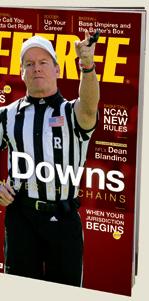
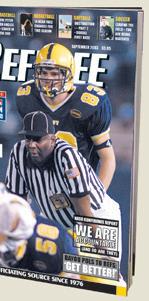
•Veteran college basketball official and Atlantic Sun Conference coordinator Jake Bell is hired as the Southeastern Conference coordinator of men’s basketball officials. He replaced Gerald Boudreaux, whose contract was not renewed. Bell was a longtime SEC official and worked four NCAA tournaments and six NIT tournaments.
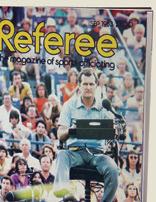
REFEREE September 2023 | 85
A PERSONAL STORY BY MIKE FALTUS
Passing the Bataan
In the early hours of March 19, I stood at the starting line of the Bataan Memorial Death March at the White Sands Missile Range in New Mexico. As I stood staring at a giant American flag hoisted by a crane, I couldn’t help but be filled with a sense of pride. I was surrounded by young ROTC students, 17- and 18-yearolds, as well as current and former military men and women, all here for one cause — to honor and remember those who served in World War II and were forced to march 65 miles to confinement camps in the Philippines.

working on a crew on Friday nights and Saturday afternoons. We all have each other’s back. We are out there as a team. We fail together and we succeed together. When the going gets tough, you don’t get to quit. You persevere and if one person is getting flak, we all are getting it as a team. And you work together as a team to get through whatever adversity you face.
And just like the military, you have to be physically fit in officiating to get the job done. I’ve always tried to find ways to get in shape to be ready for the start of the football season, and that is part of what led me to the White Sands Missile Range this particular day.
I have friends in my town, David and Annie Thomas, whose sons are in the Air Force Academy and had run the marathon in the past. I read what the marathon was about and I really liked the physical challenge of it, and thought it would be a great way to get in better shape to get ready for my upcoming season. I signed up in December, trained for two to three months and thought I was prepared for the challenge. The key word in that sentence is “thought.”
The event was more than I imagined it would be as I set out on the 26.2-mile course with my 35-pound backpack. In typical military fashion, the scale for weighing the backpacks was a little off and the backpack ended up weighing roughly 42 pounds.
as a reminder that his generation is quickly passing. The world today is shaped by the tremendous sacrifices from that generation.
Once out on the course, I was able to ease into a 10-minute-mile pace, and then the hills kicked in. My back and my legs began to hurt and I had blisters on my feet. I reached a point in the race where there are three to four straight miles of incline. I started to think about what the actual Death March survivors went through. There certainly were no water points on their 68-mile course. I put that in perspective and kept pushing on. When you are in the military, you don’t have a choice. If you don’t get there, your whole unit doesn’t get there.
When I finished, I was as sore as I’ve ever been. But to be able to pay homage to the Greatest Generation was the best part to me. It was an honor.
At the end, I was tired. And while crossing the finish line, I took a brief moment to reflect. When I served, Ranger regiment wasn’t special because of me. It’s special because of those before me who served in Korea and Vietnam, willing to do things under tremendous adversity — and they did it well. Finishing this race was an ode to them as we in the military stand on the shoulders of those before us. We embrace that legacy and add to it.
What lay ahead over the next several hours was a grueling marathon that would push all of us to our limits.
But first, let me tell you how I got here.
When I was younger, I was in need of discipline and I found that in the Army. When I left the military, I missed that camaraderie and teamwork. I have a really great job, but I was missing out on something. I found that something through officiating football.
And I found a lot of similarities between my time in the military and
At 6:30 a.m., we all pushed off and started the challenge. One of the coolest parts of the event, and something I will never forget, was having Valdemar DeHerrera there to see everyone step off. DeHerrera, 103, is one of the oldest, if not the oldest, surviving members of the Bataan Death March, with only about a dozen survivors still alive. We had an opportunity to speak with him and shake his hand, but I regret not being able to get a photo with him as I never expected a survivor to be there. That generation saw some of the worst atrocities of war. He serves
I am looking forward to challenging myself again next year and hoping to get some of my football crewmates to join me. It is an opportunity to experience that camaraderie a lot of us military guys miss when we are away from it and a chance to build more with my crew. Mike Faltus, Tacoma, Wash., is a football official working NCAA D-I (Southland Conference) and high school football. He is an umpire and center judge and was a member of the Army 75th Ranger Regiment. *
Do you have a personal officiating story to tell?
Send your story or queries to lastcall@referee.com
86 | REFEREE September 2023 COURTESY OF MIKE FALTUS
LAST CALL
We are out there as a team. We fail together and we succeed together.










IT’S OFFICIAL



september 2023



Board Holds Elections, Names Officers
Since its founding in 1980, NASO has known no president other than Barry Mano. His stepping down from that role effective July 1 and the NASO board of directors’ selection of Bill Topp as his replacement, brings about a period of transition for the largest organization dedicated to serving sports officials.









Amid that organizational leadership change, the NASO board chose at its April meeting to execute a bylaw provision in the interest of keeping knowledgeable and seasoned board members on hand during the transition.

Typically, a board member may serve two consecutive twoyear terms, but must then wait one year before being considered again for board election. The board enacted a one-time waiver of the waiting period — an option in the NASO bylaws that allows the president to waive the waiting period for a board member one time — to re-elect Dana Pappas, Sandra Serafini and Paul LaRosa to an additional two-year term.
All three were finishing their second consecutive two-year term on the board, which would otherwise trigger that one-year
waiting period before being eligible for election.
Pappas is the NFHS director of officiating services and most recent chair of the NASO board. She previously worked as commissioner of officials for the New Mexico Activities Association.
Serafini is a retired FIFA and collegiate soccer referee who formerly served as the director of strategic initiatives and innovation for PRO. She is currently a consultant for PRO. LaRosa recently retired as president of the Louisiana High School Officials Association. He was a high school football official for more than 40 years.
In other action, the board re-elected Dean Blandino, Lisa Jones and Mark Uyl to their second two-year term.
Blandino is the NCAA national coordinator of instant replay, Fox Sports officiating analyst and vice president
of officiating for the XFL. He previously served as the NFL’s vice president of officiating.
Jones has been a women’s Division I college basketball referee for more than 20 years, working 11 Final Four assignments. She’s a former WNBA official and retired deputy chief of the Phoenix Fire Department and retired director of Homeland Security and emergency management at the Phoenix office.
Uyl is the Michigan High School Athletic Association (MHSAA) executive director. He previously worked as the MHSAA assistant director responsible for officiating programs. He’s a former NCAA Division I baseball umpire.




“I’m excited that this board is staying together in the interest of continuity and helping grow this association,” Topp said.
“With this group of experienced board members, NASO is in
NATIONAL ASSOCIATION OF SPORTS OFFICIALS
1
a great position to continue advocating on behalf of sports officials, educating to improve sports officiating and protecting officials through industryleading legal and insurance benefits and services.”






In addition to the election of board members to new terms, the board held elections for officer positions. The new officers will assume their positions at the conclusion of the 2023 Sports Officiating Summit on Aug. 1.
Robert Smith Jr. was elected chair and Lisa Jones was elected vice chair.
Smith, executive director of the University of Northern Iowa’s Center for Urban Education, is in his 20th year as
an NCAA Big Ten Conference football official. He officiated 12 NCAA bowl games and the 2011 and 2014 BCS National Championship games. He has been a high school football and high school girls’ and boys’ basketball official for 30 years.
Additionally, Bill Carollo was re-elected treasurer. Ron Foxcroft was re-elected special advisor. Both Carollo and Foxcroft are non-voting members of the board.
Carollo is the coordinator of football officials for the Collegiate Officiating Consortium, which includes the Big Ten, MidAmerican and Missouri Valley football conferences. Prior to that he served various management roles at IBM and Manpower for
25 years. He was an NFL official for 20 years, working two Super Bowls.
Foxcroft is founder and CEO of Fox 40 International. He is also owner and CEO of one of North America’s largest trucking logistics companies. He had a 25-year career as a NCAA Division I and International FIBA basketball official. He officiated in the NCAA tournament and the 1976 Olympic gold medal game.
Topp was re-elected secretary, a role he has held since 2014. Prior to that, he was a staff liaison to the board since 2005. He will serve in a dual role as president and secretary until the future of the secretary position is determined by the board.
Editor: Julie Sternberg
Sports Editor: Brent Killackey
Graphic Designer: Dustin Brown
Contributors: Don Collins, George Demetriou, Alan Goldberger, Joe Jarosz, Patrick Rosenow, Tim Sloan, Jeffrey Stern, Brad Tittrington, Scott Tittrington, Bill Topp
NASO BOARD OF DIRECTORS
Robert Smith, Waterloo, Iowa, Chair
Lisa Jones, Phoenix, Vice Chair
Bill Topp, Racine, Wis., President, Secretary
*Bill Carollo, Shorewood, Wis., Treasurer


*Ron Foxcroft, Burlington, Ontario, Special Adviser

Dean Blandino, Santa Monica, Calif.
Paul LaRosa, Metairie, La.
Dana Pappas, Lebanon, Ind.
Pati Rolf, Pewaukee, Wis.
Sandra Serafini, Yachats, Ore.
Ron Torbert, Hanover, Md.
Mark Uyl, DeWitt, Mich.
Rob Wigod, Los Alamitos, Calif.
*Non-voting members
NASO MISSION STATEMENT







The mission of NASO is to:
• Serve members by providing benefits and services.
• Improve officiating performance through educational programs.
• Advocate opportunities for officials and engage in programs to recruit and retain officials.
• Create alliances with organizations that benefit from healthy officiating programs.
• Enhance the image of officials.
© 2023 NASO/Referee Enterprises, Inc. All rights reserved. It’s Official is published by the National Association of Sports Officials and Referee Enterprises, Inc.
Find NASO @ facebook.com/NASOofficiating
New Jersey Softball Group Goes Titanium
The Greater Bergen Softball Umpire Association (GBSUA), based in Garfield, N.J., is one of five organizations to recently join NASO through the Association Advantage program.
The GBSUA has 37 members and is led by President Jim Cosgrove, Vice President/ Secretary Jennifer Robbins and Assigner John Gentile. The group covers assignments for more than 2,300 games annually for both softball and baseball — youth travel, high school travel, adult summer leagues and fall ball.
“NASO offers good coverage for our organization and provides excellent benefits for our membership,” Robbins said. “No matter the level of games worked in both softball and baseball, we feel like our entire group is in
good hands with NASO.”
The GBSUA is one of two groups to recently join NASO at the Titanium level — the other is GSL Tournaments based in the Pacific Northwest. In addition, three groups joined NASO at the Platinum Shield level — Channel Islands Military Officials Association from Camarillo, Calif.; Prodigy Futsal League from Hawthorne, Calif.; and Piedmont Basketball Officials Association from Waynesboro, Va.
Association Advantage provides guidance, materials and services to more than 500 member associations. Different levels of protection, management and training options allow groups to select what works best for them and their budget. For more information, go to nasoadvantage.com.

2 IT’S OFFICIAL - september 2023 NATIONAL ASSOCIATION
Surgeon Sings Praises of Concussion Course
When some medically related educational material can impress a physician who also officiates, you know it must be good.
Such is the case with the HEADS UP to Sports Officials: Online Concussion Training course. The course was developed through a partnership between the Centers for Disease Control (CDC) and NASO to share the latest guidance on concussion safety and prevention. The training provides information to help sports officials spot possible concussion signs and symptoms that can help keep athletes safe.

Among those who took the course was Dr. Gerald Lang, an orthopedic surgeon and football official from Madison, Wis.

“It was absolutely excellent,” Lang said. “They did a great job of identifying the sports officials’ role. Most officials feel a bit uncomfortable making the call on a concussion. It is clearly stated in the training they are not being asked to make the diagnosis of a concussion but rather be on the lookout for signs and symptoms of a potential concussion.”
Lang said he learned of the presentation through Referee He said it carried a lot of weight with him because both the CDC and NASO were involved. After completing the course, he decided to spread the word to other officials. He visits local officials associations and delivers a PowerPoint presentation that supplements the HEADS UP training.
Lang says two of the positives of the course are it’s geared toward officials and it’s easy for anyone — veteran or newcomer, regardless of age and with or without any sort of medical background — to understand. “They did a really good job of explaining it,” Lang said.
The course, as well as Lang’s personal presentation, hit the most important target, he said, in that they stress officials aren’t expected to diagnose concussions. They are only to recognize the symptoms and react by sending those players to the sidelines to be examined by those who treat head injuries.
To take the HEADS UP course, log on to cdc.gov/headsup/ sportsofficials/training.














Legacy NASO is a new program whereby you may bequeath a gift through your will or trust that ensures you can take care of your loved ones first, and then leave whatever else you choose to make a big difference in the future of sports officiating.


3 OF SPORTS OFFICIALS
Sports Officiating has been a big part of your life.
Now you can make it a part of your legacy.
NASO.ORG/LEGACY OR CALL 800-733-6100 LEARN MORE AT
NASO Continues to Build CBOA Relationship


The partnership between NASO and the California Basketball Officials Association remains strong, dating back to 2006 and featuring more than 2,600 CBOA members who also fall under the NASO membership umbrella. That first five-year agreement that was signed nearly two decades ago has been renewed several times since, most recently in February 2021, and calls on NASO to produce a full-scale basketball officiating instructional program alongside the insurance and support that come with every NASO membership.










NASO understands it is incumbent on it to cultivate its relationships and develop not just a business investment, but an emotional one as well, with the large groups and members it serves. Earlier this spring, Ken Koester, NASO’s director of business development and the point person driving the CBOA relationship, traveled to Southern California to meet with the CBOA board of directors and executive council for their first face-to-face meeting since
April 2019, a break caused by the COVID-19 pandemic that stifled all such activity beginning in the spring of 2020.
While in California, NASO and CBOA discussed numerous items related to their relationship, including strategic planning, while receiving reports and updates from the numerous CBOA local boards and units scattered throughout the nation’s most-populous state.
“NASO is so committed to this long-standing partnership, and we are grateful for the opportunity to be involved in their leadership meetings. We share a common goal of trying to educate, support and protect one of the largest basketball officiating groups in the country,” Koester said.


“CBOA continues its efforts to evolve and serve its membership and member officials. The meetings gave me a chance to reconnect in person with so many leaders within CBOA, while at the same time meeting so many new faces. While Zoom meetings can be beneficial and have positives, you definitely
miss the in-person interaction you get with onsite meetings. It was great to reconnect and share some personal time with so many individuals in that organization.”
The opportunity to reconnect on a personal level was even more crucial this year as the 41st annual Sports Officiating Summit took place from July 30-Aug. 1 in the CBOA’s backyard at the Mission Inn in Riverside, Calif. With its accompanying State Day on July 29, this year’s Summit provided a perfect backdrop to showcase to the officiating world at large the strong symbiotic relationship between the CBOA and NASO.
“Given the Summit in California, it was critically important to visit and update on the continued efforts of NASO and the CIF (California Interscholastic Federation) and bring an incredible event to Riverside,” Koester said.
NASO Insurance Provides Coverage You Can Count On
In today’s ever-increasing vitriolic climate, it is important for every official to have insurance to have peace of mind when taking the field or court.
NASO members like you have that peace because the best, most
inclusive insurance is provided through NASO.
Officials face much more liability risk now than at any time in the past and NASO’s Sports Officials Security Program covers you in every facet of
your officiating. Think of it as a complete risk management and legal protection service that works before you even need it.
The first part of the NASO insurance program is general liability insurance coverage. In



4 IT’S OFFICIAL - september 2023 NATIONAL ASSOCIATION
its simplest terms, NASO protects members for all organized sports, all levels and covers what you do as an official. It provides excess coverage for bodily injury, property damage and personal (libel and slander) injury during sporting activities that are organized by recognized sports organizations, leagues and associations. You are protected while assigning, attending seminars, camps, clinics or other similar meetings and covered up to $6 million per occurrence.





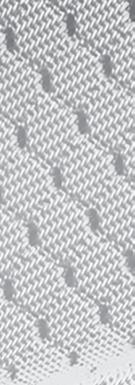






Another facet of NASO insurance is the $100,000 Game Call and Assigners Coverage. This protection covers you for claims against you alleging officiating errors or omissions resulted in a financial loss, but where no bodily injury occurred. This would cover you if you were sued over a challenged game call which resulted in a claimed financial loss or a suit against an assigner by a disgruntled official. The policy limits include defense costs. In simplest terms, if someone sues you because of a game call you made, you are protected. You are also covered if you are an assigner or clinician and an official sues you for a decision you made.
Another perk of NASO insurance is access to the Member Information and Consultation Program (MICP). If you have professional service type questions, NASO can provide free information from its Legal Library of articles. Members can also consult with an experienced professional for officiating-related information. Members may use the consultation service up to three times a year.
The final piece of NASO insurance is the $30,500 Assault Protection Program, which is a significant increase from last year. As assaults unfortunately become more common, this







provides for reimbursement of certain expenses and loss of game fees resulting from injuries suffered when an official is a victim of an assault and/ or battery by a spectator, fan or participant while officiating. Legal fee reimbursement may also be available and NASO puts members in contact with appropriate legal counsel. NASO provides up to $4,500 reimbursement of reasonable non-contingent attorney fees in bringing a non-frivolous lawsuit against the perpetrator and NASO’s Assault protection benefit pays up to $100 for each game lost within 21 days after the injury, with a maximum of $1,000. There is also a maximum of $25,000 medical expense, to the extent not covered by other insurance.
It is also important to note that NASO insurance does not include lost game fee insurance. That is an optional group coverage. NASO fields inquiries from officials throughout the country about whether they are entitled to compensation for games they were scheduled to work but missed due to injury, pandemic-related issues, etc. The answer, unfortunately, is no, unless you are a member of an association that purchased the optional group coverage. If you are a member of that group, the reimbursement for lost game fees is $100/game. Only games missed due to injury caused by an assault are covered for NASO members, whether or not they are part of the optional group coverage.
The NASO membership package rate for current and prospective members remains the same at $116 yearly. Some officials get more competitive rates by registering with groups. Details are available at nasoadvantage. com, naso.org or by calling NASO at 262-632-5448.














5 OF SPORTS OFFICIALS
On individual membership when your association joins together For more information: Call (800) 733-6100 or go to naso.org/promo/MyGroup GROUP MEMBERSHIP AVAILABLE SAVE UP TO $35
The Challenges of Weather
By Donald C. Collins
QWhat are some things outdoor officials should keep in mind when it comes to bad weather and lightning? What are the safety and liability risks to keep in mind? What guidance should all officials follow?
AWhen it comes to weather, safety is the first priority. An official should not gamble that they can get a few more plays in.
There have been lawsuits over weather-related injuries, and injuries caused by bad facility conditions. Vigilance is essential, but it’s not always easy.
An official must know his or her sport’s weather rules and safety procedures. However, this knowledge isn’t enough. Our pregame inspections may need to become a continuous monitoring when weather comes into play.
Our sports weather rules are now supplemented by rules that aren’t in our rulebooks. We now confront air quality issues, satellite storm alerts, and even heat index procedures that can be set by entities ranging from cities to school districts to local leagues and governing bodies.
The modern additions to weather rules mean somewhere, someday an official will be sued for an injury we wouldn’t have heard of 20 years ago. The official can attempt to defend themselves with the legal argument they are not contractually bound to enforce rules not contained in their sports rulebook. The official might even argue these modern

weather rules and procedures are duties of game management, not of officials. However, it is legally safer to step in and suspend games for safety reasons than to engage in postinjury legal arguments.
Weather rules force us to go beyond the rulebook. Associations must work with leagues and governing bodies to disseminate information about their rules and procedures. Associations, leagues, teams and governing bodies must work together or officials won’t know of some of the weather rules and procedures that aren’t in the sport’s rulebook.











Weather rules also drive home the odd fact that we do not always act alone. We are often part of committees or crews. There are times where we have multifield tournaments or we work a sport with multiple events. Sometimes one field will be playable and another won’t, or one event can be held while another shouldn’t.
Even odder, there are sports in which the initial determination of playability is made by the host site or league; the official then gains jurisdiction after that initial determination.


We must document our weather-related decisions with personal postgame file notes. It’s the only way to protect ourselves. The truth is we don’t always know if our weather call led to an injury or even created an administrative disruption or some unknown economic harm. We may not find out for quite some time as injured parties could have a year or more to sue due to statutes of limitations. Between the multiple parties involved in a weather and
YOUR RIGHTS AND RESPONSIBILITIES



field playability situation, the different duties that various sets of officials and site officials have, and even the wide array of rules and regulations that come into play, we just have to record the details of our weather-related decisions. If we don’t, they’ll come back to haunt us.
Finally, we must have a feel for the expectations of the people whose game we’re officiating. Courts do judge whether we acted reasonably. The problem is what’s reasonable in Wisconsin may not fly in California where the local expectations might not be as tolerant of a 15-degree day in a youth league. Communal expectations based on climate and age simply can’t be written down in a rulebook, but when somebody’s injured the local courts will apply the unwritten communal expectations.
So, be vigilant when it comes to weather. And remember, the sports rulebook will not be enough to get you through.
Donald C. Collins recently retired as commissioner of the San Francisco Section of the California Interscholastic Federation. He is a longtime basketball official and lawyer. This article is for informational purposes and is not legal advice.
6 IT’S OFFICIAL - september 2023 NATIONAL ASSOCIATION
Recruit Excellent Board Members
By David Westol
Perhaps the last thing on the minds of members of an association board after the election and installation of new board members is, “Who will be our next set of officers?” The prevailing mode of thinking is, “Let’s get these rookies acclimated … let’s get our strategic plan together … let’s start making decisions.”
But “Who’s next?” should be one of the things a newly constituted board of directors is thinking about.



Good board members do not grow on trees. They are usually not (board) table ready to contribute to discussions or participate in decision-making. New board members tend to fall into two groups. They go ghost — seen but not heard, or new board members offer opinions and input at every opportunity.
A balance is needed. But balance comes with experience. Your current board should seek people with experience serving on other boards, if possible. And it isn’t a matter of finding an exact fit in terms of experience.
What should nonprofit board members be thinking about? We can begin with the purpose and mission of the group. Add in the biggest part of “trustee” which is trust — the fiduciary aspect of serving on a nonprofit board. And while passion for the cause is important, it is not the most significant quality. Can a candidate work with others?



Accept criticism or feedback?
Good board members must be recruited. Recruitment means specific identification
of prospective board members. Yes, there is a place for the democratic process, but that should not discourage the board from recruiting candidates. Make certain the duties and responsibilities of board members are outlined as you look for new candidates. Make sure expectations — attendance at meetings, special events, the annual awards banquet — are specifically referenced.
Recruitment of board members shouldn’t be political or based upon cosmetic aspects such as, “He’s a good official,” or “She’s always at meetings.” What are you seeking in terms of specific talents and abilities? Certainly, those who work hard, for example, at the specific sport level in an association deserve consideration but look beyond the obvious. Does this person have the time and energy to serve on the board? Can she look beyond her specific sport? Can the candidates work with others on the board? Invite candidates, one at a time, to attend a board meeting. Encourage them to speak up
ASSOCIATION ADVANTAGE
Running a local officials association is demanding. You volunteer your time and effort to make it the best you can. But there’s no reason you have to do it alone. NASO Association Advantage exists to help you face any challenge and elevate your association in the process. Whatever challenges you have — training, insurance, legal issues, meeting help, bylaws and organization, membership issues and more — WE HAVE A SOLUTION TO MEET YOUR NEEDS.
PLATINUM & PLATINUM SHIELD
Association Advantage Platinum is the premier resource for maximizing the performance of your group, providing leadership and administrative resources to help you elevate your organization with a focus on training,
FROM OUR DATABASE
and to share their thoughts. Ask around, too. The way someone officiates a contest with other officials is often a good indicator of how that person will work with others in the board room.
One dynamic hasn’t changed over the years — a domineering board member will drive good board members away. Good association board members will step quietly away from service and find other things to do with their time if the meetings are dominated by one or two FHFs — “Frequently Heard From” — board members. The board chair or president owns some of the responsibility for maintaining involvement and engagement by all board members.
Recruitment of your next board of directors begins with the installation of your newest board members. Be specific. Be practical. And invest time in this very important aspect of association governance. Dave Westol is a longtime football official. He is principal and owner of Limberlost Consulting Inc., in Carmel, Ind. His website is limberlostconsulting.com.
assigning, legal issues and best practices specific to local officials association management.
TITANIUM & TITANIUM SHIELD
The Titanium solution is ideal for officials associations that want to maximize their organization’s performance while fully protecting both their organization and individual members.







DIAMOND
The most comprehensive solution for officials associations that want to fully protect both their organization and individual members, as well as provide full training and testing solutions with an emphasis on video. Association Advantage Diamond is the ultimate answer to every challenge your association faces.



To learn more, go to NASO.org/Advantage or call us at 262-632-5448

7 OF SPORTS OFFICIALS
Referee Voices brad watson: ‘You’ve Made It’ Moment
rad Watson knows his two decades in the NHL meant plenty of missed calls. Any official has to deal with that.
“It’s important we pull those back and we start celebrating some of those good calls,” Watson said. “I think as officials when you trust your own judgment, you’re going in the right direction, and when you react and make the right call. I learned two things there. I learned to trust my judgment, and I know I can live in that stage.”
Watson goes back to his third year in the league. One moment which he feels forever changed his trajectory.
First, a quick stage set: Islanders and Toronto in a backand-forth playoff game. New York beat Toronto thanks in part to a penalty shot awarded
Bby Watson’s call, creating a firestorm through Canada.
Watson knows what he saw, though.
“Basically it was a cross-ice pass, and then the winger got the puck, and he’s going over the blue line, and he has to get past a defenseman,” Watson said. “The defenseman from Toronto turns and stumbles ever so slightly, so that gave just enough space for that New York winger to get down to where the face-off dot is, and he starts driving and got the score.”
Watson recalled exactly where he was, what he saw and how he handled the moment.
“I’m across the ice, I’ve got a nice diagonal position, good sight line. And when I see this play develop, I see the defenseman stumble, and all of a sudden it slowed the game down for me, because I go, something bad could happen here,” Watson said. “So when he does lunge and trip him and the player slides into
Honig’s Offers NASO Members Exclusive Discount











NASO and longtime partner Honig’s are giving members an exclusive discount. NASO members receive a 10 percent discount when they shop through the Honig’s website. Find everything from apparel and equipment to starter packages and casual wear. Honig’s has been in the officiating game for more than 40 years, providing customers with a great


shopping experience.
This new benefit will allow NASO members to shop at one of the officiating industry’s oldest and most trusted brands at a great price.
Jim Arehart, chief marketing officer for Referee Enterprises, explained, “It’s an exciting opportunity for NASO members, and we’re excited to provide excellent gear to our members through Honig’s.” He
the goalie, I put up my arm. It doesn’t catch me off-guard — I was ready for it. It’s almost like it was just slowed down. Then I was backing up and I’m against the end boards and I’ve got my arm in the air.”
That was back in 2002, before instant replay.
Watson wound up being part of 1,393 regular-season games, 214 playoff titles and saw the ice in eight Stanley Cup finals. He also worked the Winter Olympics in 2010 in Vancouver, Canada. He retired in 2019.

These days Watson is an officiating manager. He often talks about his big “you’ve made it” moment.
“That was only three years into my career, so I punched out 17 more,” Watson said. “And I had a lot of bad calls in those 17 years, but I still had some good ones.” This Referee Voices story was recorded at the 2022 Summit. For more personal stories on various topics, go to referee.com/voices.
added, “The wide variety of products, across a wide range of sports, offers something for everyone.”



To access the offer, go to Honigs.com, add all the items you need to your cart, click the checkout button, and then enter the code NASO#10/DVCO into the discount code box in the upper right-hand corner to receive 10 percent off your entire purchase.

8 IT’S OFFICIAL - september 2023 NATIONAL ASSOCIATION
sports section
Defusing Coach Confrontations
By Matt Ciciarelli
The psychology of being a coach lends itself to an “us-against-the-world” mindset. As a game or a match wears on, tension inevitably mounts. Soon enough the coach who during pregame shook your hand, asked about your family and how your season was going has become a redfaced, foot-stomping, veinpopping human powder keg.














“You’ve got to be kidding me with that spot … that’s a first down!”
“She missed the tag!”
“Where’s the foul?!”
“Blow the whistle!”
Officials can see it coming from a mile away, and the ability to lower the temperature of any situation is something of an art form. For some officials, it comes naturally. For others, it comes only with experience. But once mastered, having the knack to talk a coach off the ledge is a skill that can turn a good official into a great official.
From an official’s point of view, sports are games of answers. Coaches often yell and scream because they want answers. “Why can’t we get that call at the other end?” “Are you going to let him do that all night?” “How many times is she going to push my player?” It’s possible that no answer to questions like these will be satisfactory, especially
if they’re asked in a fit of rage. Answering any question from a coach, however, should always be a rules-based answer. The rulebook is the most effective defense an official can use in any heated discussion. And if the blood pressure of the conversation is rising, a properly referenced rulesbased answer will give the coach no leg on which to stand. It goes without saying the best way to counteract a



over or attempt to out-yell a coach. A calm, non-reactive voice can defuse a heated exchange and make it clear that until the coach gets his or her emotions in check, the conversation will go nowhere. No official wishes to be perceived as a pushover in front of a packed gym or a full stadium, but if the coach is making enough of a spectacle, it will be clear to anyone watching who is acting irrationally.
combustible coach is to not let it get to that point in the first place. In instances when that’s not possible, recall the lesson parents have attempted to teach children for years: “ Two wrongs don’t make a right.” In other words, don’t stoop to the coach’s level. Easy to say. Hard to do. But a reaction equal to the coach only makes the situation worse.
It requires an incredible amount of patience not to talk
Too often when a coach is disciplined for unsporting behavior (a technical foul, a yellow card, penalty flag, etc.), the cries of : “Q uit making it about yourself, ref!” or, “C ome on, Blue . you baited her into that call!” come from everywhere. Even if the punishment is completely warranted, officials are often accused of having too much ego. It’s a perception that officials may never shake, unfortunately. However, to make the optics of this call seem less ego-centric, a more nuanced approach can help.
Without saying a word, the “stop sign” is a simple gesture that can send a loud-and-clear message: enough is enough. To avoid the perception of baiting the coach, add distance to create a buffer. By giving a coach the stop sign when not standing next to them, it’s easier for everyone to see the conversation is over. If the
OF SPORTS OFFICIALS NATIONAL ASSOCIATION OF SPORTS OFFICIALS
9
Many officials have played the sport they officiate. That gives them a unique advantage.
coach persists and the proper unsporting penalty is assessed, the cries of baiting the coach will have less bite, as it will be clear to everyone that the official told the coach to knock it off.
Some sports lend themselves to this tactic more than others. Bigger fields naturally create distance between officials and coaches. For those played in smaller venues, however, taking a few extra steps can enhance the message, making it clear that a line is about to be crossed.
Many officials have played the sport they officiate. That gives them a unique advantage. They have a good feel for the flow of a game, the strategy, and the intensity from the team perspective as well as that of an experienced official. Coaches who have little or no officiating experience may lack that multi-dimensional point of view. Officials should use that to their advantage to increase the effectiveness of their communication with coaches. That advantage, and being the final arbiter, should not be taken lightly, but it can be a way to effectively manage a game. Without question, mastery of this skill can start an official’s career on an upward trajectory.
Try these tactics the next time a coach starts raising their voice and see how it works. Having the reputation of someone who communicates with coaches effectively and can manage games with a calm demeanor is one of the highest compliments an official can receive.







Matt Ciciarelli, Hatboro, Pa., is a high school and college basketball official.

BASKETBALL
Stay in Your PCA Only One Piece of Pregame
By the Referee editors
The newer official may hear it in a veteran’s pregame: “Everybody stay in their primaries.” If it isn’t stated outright, the implication is clear.



“Don’t go fishing in my pond.”
“Leave the calls in front of me up to me.”

“Stay in your own area.”
Most of the time, especially when the new and learning meet up with the veteran and experienced, that intimidating injunction alone leads to compliance.
However, is “Stay in your primary” enough? Unfortunately, no. Your pregame might well need to go beyond mere familiar phraseologies and into the concepts behind the sayings.
Many times, when “Stay in your primary” is expressed in pregame, the underlying message is this: Ball-watching officials keep ball watching and even become progressively adept at it every game, it’s just that they grow even more careful not to call the fouls or violations they clearly see occur in their partners’ primary coverage areas. Ball-watching officials have practiced their craft so well they strive to observe the play “over there” well enough to then make a fully conscious choice to withhold a whistle because, they maintain, “That’s not in my area.”




That takes effort. That takes focus. That takes attention. But that’s all wrong.
For that official to see that play well enough, that means
his or her eyes are focused on a place where they ought not be. Instead of maintaining surveillance of the action in his or her primary coverage area, maintaining off-ball observation and looking for illegal activity in his or her own area, the official was ignoring all that and instead observing what wasn’t his or her duty to observe.

That official is following the pregame point of emphasis, in a way, but isn’t doing what either the two-person or threeperson officiating systems are designed to do: provide off-ball surveillance. That official is ball watching. To the detriment of the crew and the system and the game, there are too many eyes on the on-ball matchup.
It’s not good enough to say, “Stay in your primary,” only to have it interpreted as, “Be sure everyone calls only what’s in his or her primary.” It’s more in accord with the purpose of both the two-person and threeperson systems to say, “Let’s be sure everyone knows when to turn off-ball and provide surveillance on the action in his or her primary coverage area when the ball is in a partner’s area.”
When the ball passes from your primary coverage area (PCA), turn off-ball and trust your partner to decide whether to call whatever violation or foul does or does not occur in his or her area. Chances are, there’s plenty of action for you to keep your eyes on away from the ball. For a good game to result, you can’t afford to have four eyes (or six!) on the ball when two eyes will do just fine.
That means knowing where the PCA boundaries are. That means trusting your partner(s). That means visually communicating with your partner(s) when you’re on-ball
10 NATIONAL ASSOCIATION IT’S OFFICIAL - september 2023
and when you’re off-ball. That means you’re not a ball-watcher. That means you know what PCA principles mean for the game. That means you trust that, “The system works when the crew works the system.”
Many times, “Stay in your primary” still results in four — maybe even six — eyes on the ball. “Stay in your primary” as a pregame point of emphasis isn’t good enough. Where officials’ eyes are when the competitive matchup is over in a partner’s area — when off-ball — is the important thing!
Keep your eyes on the action in your primary coverage area. Don’t just be a ball-watcher who doesn’t call what he or she sees in his or her partner’s area.
FOOTBALL
Legitimate Question or Gamesmanship?
By George Demetriou
At least once a season, you are likely to encounter a coach who will warn you before the game that the opponent does something illegal or untoward. Sometimes it is framed as a legitimate question; other times it takes the form of a specific request for vigilance.
Those situations can have a negative effect. Many officials look at that scenario as a no-win situation. If you accommodate the coach, he may think he has you in his hip pocket. If you don’t, he may either feel ignored or later say, “I told you so.” Probably the worst thing you could do is let the coach know that’s how you feel about it.
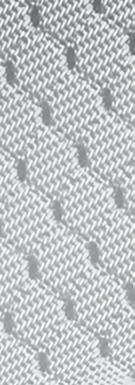
Here are some possible responses for those situations, along with an analysis of their plusses and minuses.
Response 1: “Thanks for your concern, coach. We will watch that closely for both teams.”




Analysis 1: Mentioning that both teams will be monitored is a good idea, but thanking the coach for his concern falls somewhere between smart aleck and patronizing.
Response 2: “Coach, we’ve worked your games before, and I assure you we will not tolerate illegal acts from either team.” Analysis 2: If you’ve officiated for the coach before, he probably remembers and there is no point in reminding him. The second half of that statement smacks of apple pie and motherhood.
Response 3: “Coach, I’ll get the visiting coach and we can discuss your concerns and his together.” Analysis 3: That is asking for trouble. If the coaches wanted to talk to one another, they did so when the teams took the field to warm up. Only in the most unusual circumstances should a referee bring the coaches together and in that situation, it is a response in kind. You’ll be beating him at his own game. The most likely outcome is the first coach will be intimidated into withdrawing his remarks or modifying them. Your success in eliminating the issue is hollow because the coach will remember you negatively. If he persists in making a face-to-face accusation, you run the risk of being caught in the middle of a shouting match between coaches.
Here are examples that actually came up.
The visiting coach mentioned the other team’s tight end has been known to block below the waist and wanted to know if that was legal. The referee explained that could be legal or illegal depending on

All NASO members get an exclusive 10% discount as a benefit of NASO membership. Members are able to use the discount on Ump-Attire.com’s 850+ o ciating gear and apparel and qualify for free shipping o ers and free returns. Registered NASO members will be able to access the discount automatically without using a coupon code or having to call to place an order.





















11 OF SPORTS OFFICIALS
EXCLUSIVE 10% DISCOUNT AT UMP-ATTIRE.COM
whether the tight end lined up in the free-blocking zone and the opponent being blocked was in the zone at the snap. The coach’s comments were passed on to the wing officials, but not to the opposing coach. The game was played and no illegal blocks were observed.
In the second situation, the home coach complained a film review had shown that in punt formation, the opposing team’s snapper would lift the ball before passing it backward. He thought it was either illegal or that his nose guard should then be allowed to bat the ball from the snapper’s hands. The umpire explained the forward movement of the ball made that an illegal snap and he would watch for it.
In the first quarter, it happened exactly as the coach had described: The snapper lifted the ball and the nose guard knocked it loose. The dead-ball foul was charged against team A.
Most coaches are reasonable and responsible individuals. Many of their pregame questions will be legitimate requests for information or clarification. On occasion, some coaches will vie for an advantage and the official must be prepared to respond professionally without falling victim to the gamesmanship. George Demetriou has been a football official since 1968. He lives in Colorado Springs, Colo.
SOFTBALL
Look-Back Rule Mechanics and Myths










 By the Referee editors
By the Referee editors

The look-back rule can be confusing and misapplied if




umpires do not stay focused when runners are on base. It is imperative umpires do not go to their next position until the ball is in the pitcher’s circle and all runners are stopped on bases. Umpires should see the ball go into the circle, then look at all runners and make sure they are stopped on their bases and then move to their next position.
It is important that at least one umpire has a set of eyes on the field at all times when other umpires are moving. Once a play is completed, the plate umpire should wait until the base umpire gets to the next position before turning back to the plate. That doesn’t mean the plate umpire can’t move. The plate umpire can walk back toward the plate while watching the field. The plate umpire should focus on the field until the base umpire has gotten into a new position and is able to take over focus of the entire field. The base umpire, while hustling to the new position, should keep an eye on the pitcher to make sure she never leaves the circle. If the pitcher is not in the circle, no umpires should be moving.

As a base umpire, once the batter-runner reaches first base, it is important to open up and see what direction she turns if she overruns the bag. The base umpire should never be in a hurry to get to another position and must keep an eye on the batter-runner.
One particular instance where umpires must remain alert is when the pitcher receives the ball back from the catcher and walks to the back of the pitcher’s circle. If she steps out of the circle completely with a full foot, the look-back rule is no longer in effect and baserunners may advance with liability to be put out.
Another potentially tough call is when there is a runner on third and there is a base on balls. The batter-runner often will hit first and then go straight to second to either draw a throw or just simply get into scoring position. It is extremely vital that the plate umpire keeps an eye on the runner at third. If the ball goes back into the pitcher’s circle and the batter-runner touches first, the runner on third either has to head back to third or run home. If she pauses, she is out. It is a dead ball and the batter-runner would go back to first base since that is the last base she legally touched at the time of the violation. In this situation, the base umpire has the responsibility of the batter-runner and the plate umpire should clear the catcher and open up to be able to see the ball in the circle and the runner at third base. The plate umpire can say, “I’ve got lead,” to let the base umpire know they can solely focus on the batterrunner and all runners are covered.
One big misconception is that any fielder can be in the pitcher’s circle with the ball and the look-back rule goes into effect. This is incorrect as the rule only comes into play if the pitcher has possession.
Another big myth is the runner is unable to stop. In reality, a runner can round the base, go 59 feet toward another base, stop, and then return to the previous base without violating the rule. The runner has the ability to stop so she can pick up the ball and make a decision which direction she wants to go. Provided she only stops one time and then immediately chooses a direction, she has not violated the rule.
12 NATIONAL ASSOCIATION IT’S OFFICIAL - september 2023
VOLLEYBALL
Multiple contacts (Double Hits)













First referees must ascertain whether or not the ball contacted a player using two or more successive contacts. In most of those situations, a double hit fault is called. When multiple contacts (double hit) occur, the referee will blow the whistle, signal the point, followed by two fingers extended on the hand of the side of the team at fault.
When is a double contact legal? Remember, double contacts of the ball are allowed on any first team contact — as long as the player makes one attempt to play the ball. That can occur, for example, if the ball crosses the net and a player allows it to roll up the arms during a forearm pass. As long as the ball does not visibly come to rest (prolonged contact), the contact should be deemed legal and play should continue. Or, if a player receives the first ball over the net with an overhead set, the ball may legally contact two body parts at different times, as long as only one attempt to play the ball is made. Finally, during a block, the ball may bounce back and forth any number of times between any parts of the body. Since the block does not count as a team hit, the blocking team is entitled to three more hits.
So when is a double contact illegal? While there are certain double contacts that are permitted by rule, there are others that should be called without hesitation. If a ball is hit with two separate, consecutive motions, it is a fault. For example, if a player contacts a ball by swinging
with one arm and then swings a second time with the other arm, a double hit should be called. Similarly, if the ball hits a player’s arms and then hits the player’s chin (assuming it’s not the first team contact), a double hit fault has occurred.
The most common type of double hit fault — and the most difficult to judge — is an attempt to play the ball using the overhead set. A prolonged contact was described as overcontrol; a double contact is called on a play in which the ball is undercontrolled. Typically, a double hit fault occurs when the ball is poorly played, resulting in a less than perfect contact. In that case, undercontrol of the ball often creates additional spin on the ball. However, referees must not call a double hit based on spin. Many novice referees think that spin is a surefire way to determine a double hit, but that is not the case. Just like an overhand attack or forearm pass without being hit twice can have spin, an overhead set can be contacted legally and create spin, too.
See it, call it. Keep in mind that obvious double hits should always be called. If a player makes illegal contact with the ball due to a lack of skill, poor setting technique or clumsiness, the fault should be called regardless of the reason. Consistency in that same call should be maintained throughout the match. While no referee wants a match or a good play to end on a judgment call, the referee must maintain the same standard of consistency from the first play of the match to the last.
Furthermore, if a double hit is made on the second team contact, regardless of whether or not the double hit was an
attack, the fault should be called. Double hits that stay on the same side of the net are still double hits.
A referee may allow slight double contacts of the ball in the interest of continuing play for two reasons. First, because of the difficulty of the overhead set, if players are of a novice skill level, allowing double contacts may be necessary for player development.
Second, there is an exception to the double contact rule that applies in NCAA women’s and USAV volleyball rules. In an effort to allow play to continue to an obvious end and to create greater consistency in ballhandling judgment, both of these codes allow some leniency on slight double contacts that are made during an especially challenging or spectacular play. That directive creates a little more subjectivity in the decision-making process as to what plays fit that criteria. However, any ball that results in a blatant double hit should still be called as a fault.




The challenge to the referee in making that type of judgment decision is in maintaining consistency. Consistency in applying the double hit fault throughout the match, from player to player, set to set, match to match, between officials, across different levels of play and within geographic regions may be the most difficult aspect of officiating. Good judgment is a murky notion, but necessary to be a top official.
One thing is clear: Judgment of the legality of the double hit is both an art and a science. Adapted from Net Gain: Officiating Volleyball’s Tough Calls, available to NASO members for $12.76 at store.referee.com.
13 OF SPORTS OFFICIALS
ASK US
BASKETBALL
Alternating-Possession Arrow Mistake
Play: While A1 is holding the ball, defender B1 grabs the ball, and a held ball is called by the nearest official. Team A has the possession arrow in its favor, but team B is mistakenly granted the ball for the alternating-possession throw-in. B2 completes the throw-in pass to B3, and (a) while B3 is holding the ball, or (b) after A4 is holding the ball after stealing it from B3, an official realizes team A should have been awarded the alternating-possession throw-in and blows the whistle. Can this mistake be corrected?
Ruling: In NFHS and NCAAM, when the ball is awarded to the wrong team on a throw-in, the mistake must be rectified during the first dead ball after the mistake was made, unless there has a been a change in possession. In (a), since there had been no change in possession, the mistake shall be corrected, and team A shall receive a

















throw-in with the alternatingpossession arrow changed to be in team B’s favor after the throw-in completes. In (b), since there had been a change in possession, it is too late to correct the mistake. Team B shall receive a throw-in, and the possession arrow shall remain in team A’s favor (NFHS 7-6-6; NCAAM 7-6.13). In NCAAW, when the ball is awarded to the wrong team on a throw-in, the mistake must be rectified before the throw-in ends. In both (a) and (b), the throw-in had ended before the discovery of the mistake, so no correction for that throw-in shall be made. Team B shall receive a throwin, and the possession arrow shall remain in team A’s favor (NCAAW 7-6.13, AR 231).
SOFTBALL

Hands Together
Play: On the first pitch to B1, F1 steps onto the pitcher’s plate, takes a signal from F2 and then brings her hands together. F1 keeps her hands together for seven seconds before separating them and delivering the pitch. Ruling: Legal in NFHS, USA Softball and USSSA. In these three codes, the pitcher must bring the hands together for not more than 10 seconds (NFHS 6-1-1c; USA Softball 6A-1-E; USSSA 6-1D). In NCAA, this is illegal as the pitcher may not bring the hands together for more than five seconds. The ball is dead and a ball is awarded to the batter (10.2.3 and Eff.).
Flex Player
Play: In the second inning, team A’s coach announces to the plate umpire the Flex is going to bat for the DP. In the fourth inning, the DP bats and


hits a single. Team A’s coach announces to the plate umpire the Flex is going to run for the DP. In the sixth inning, team A’s coach announces to the plate umpire an eligible substitute is going to bat in the DP position in the lineup. After the player singles, team A’s coach announces to the plate umpire the Flex is going to run for the DP. The plate umpire states the Flex has exhausted her re-entry rights and does not allow the Flex to run. Ruling: Incorrect ruling in all codes. In this scenario, the Flex has never left the game, provided the Flex never stopped playing defense. The Flex may be inserted into the batting order to either bat or run for the DP an unlimited amount of times without it counting as a substitution against the Flex. It only counts as a substitution against the Flex if the Flex is replaced on defense (NFHS 3-3-6f; NCAA 8.2.2, 8.2.6; USA Softball 4-3f; USSSA 5-4g).
BASEBALL
Choice?
Play: With R3 on third and one out, B3 swings, contacts F2’s mitt and hits a deep fly ball to right field. R3 tags up and scores. Ruling: In NFHS and NCAA, the umpire goes to the offensive coach and asks him whether he would like the obstruction enforced (B3 awarded first, R3 returns to third), or the result of the play (B3 out, R3 scores). In pro, the umpire enforces the obstruction (B3 awarded first, R3 returns to third). He will grant the offensive manager the result of the play if the manager requests such, but he does not offer the option (NFHS 8-1-1e; NCAA 8-2e1; pro 5.05b3).
14 NATIONAL ASSOCIATION IT’S OFFICIAL - september 2023
SAYYESTOOFFICIATING.COM
The free resource for recruitment & retention
Talk Is Not Cheap
Play: B1 hits a pop up down the first-base line. As F2 settles under the ball well into foul territory, B1 comes up behind him and screams loudly. F2 drops the ball. Ruling: B1 is out and the ball is dead. This is a form of verbal interference. An offensive player is prohibited from impeding or hindering a defensive player in any way. Contact is not necessary (NFHS 2-21-1a; NCAA 2-51a; pro Interference Definition a).
Additional Throws?
Play: With the weather being chilly, the relief pitcher asks for more throws to warm up. Ruling: In NFHS, the plate umpire may grant the request, but the pitcher being replaced may not return to pitch for the balance of the game. In NCAA and pro, the plate umpire cannot legally authorize additional warm-up throws (NFHS 3-1-2, 6-2-2 Exc.; NCAA 9-2i; pro 5.07b).
Pardon Me
Play: With a 1-1 count, B1 takes an outside pitch and steps outside of the box with both feet to take the sign from the third-base coach, causing the pitcher to delay. Ruling: In NFHS and NCAA, B1 is charged with a strike. In pro, unless the batter requests his one timeout, he must be in the box with both feet and alert to the pitcher at the eight-second mark (NFHS 7-3-1; NCAA 7-1d1 Exc.; pro 5.04b).
Well-Dressed Umpire
Play: With R2 on second and a 3-2 count, B2 swings and misses. The ball hits F2’s glove and becomes trapped inside the umpire’s plate coat. Ruling: B1 is awarded first (NFHS 8-3-3d; NCAA 8-3k; pro 5.06b4I).
FOOTBALL
Late Addition
Play: Fourth and two on team B’s 20 yardline. Team A huddles with 10 players. As the huddle breaks, field-goal kicker A1 enters the field. Ruling: There is no foul in NFHS. There are no restrictions on when a substitute may enter as long as he is within the nine-yard marks before the snap and he does not violate any other rules provision. In NCAA, it is not a foul unless the covering official determines the delay was intended to confuse the opposing team. If a foul is ruled and the penalty is accepted, it is enforced five yards from the previous spot and the down is repeated (NFHS 2-32-15, 3-7-1; NCAA 3-5-2c).
Forced Touching
Play: Fourth and 10 from team R’s 30 yardline. K1’s field goal attempt is short. K2 legally bats the rolling ball at team R’s 10 yardline into R3 and K4 recovers it there. Ruling: In both codes, that is forced touching and R3 is not considered to have touched the ball. In NFHS, K2’s bat is first touching. Team R will start a new series at its 10 yardline. Under NCAA rules, R3 is not considered to have touched the ball. Team R will likely take the ball at the previous spot (NFHS 6-2-4, 6-2-5; NCAA 6-3-4, 8-4-2b-1).
SOCCER
Head Down Low
Play: A1 passes the ball in direction of A2. A2 lowers the head well below the waist in an attempt to head the ball. B3, attempting to play the ball, kicks A2 in the side of the head. Ruling: The referee is to stop
play and award an indirect free kick for team B. Although B3 made contact with A2, A2 created a dangerous situation by lowering the head (NFHS 12-6-1; NCAA 12.2.9.1; IFAB 12.2).
Advantage, Foul
Play: B1 attempts to trip A2 just outside the penalty area. A2 continues forward and the referee applies and signals advantage. A2 continues forward and is fouled by B1 again inside the penalty area and loses control of the ball. Ruling: The referee stops play and awards a penalty kick. B1 is to be cautioned for persistent infringement of the rules (NFHS 12-8-1B; NCAA 12.4.3.2; IFAB 12.3).
Simultaneous Collision
Play: A1 passes the ball into the penalty area. A2 runs toward the ball and B3, goalkeeper, moves forward to attempt to save the ball. A1 and B3 make contact when they arrive at the ball the same time. The ball rolls forward over the goal line but not into the goal.
Ruling: As long as A1 or B3 did not do anything other than incidental contact, the match is restarted with a goal kick. The referee should make sure neither A2 or B3 are injured as a result of the contact. If the referee felt that A2 attempted to kick or otherwise injure B3, the game would be started with a direct free kick for team B (NFHS 16-1-1; NCAA 16.1; IFAB 16).












Free Kick Signal





Play: The referee awards an indirect free kick for team A. The referee fails to raise the hand to indicate an indirect free kick. A1 shoots and scores directly from the free kick.
Ruling: No goal since the referee
15 OF SPORTS OFFICIALS
failed to signal indirect free kick. The kick is retaken (NFHS 13-34; NCAA AR 13.1.3.b; IFAB 13.1).
Keeper Hand Ball
Play: A1 shoots on goal. B2, the goalkeeper, deliberately parries the ball to the ground with the hands. B2 dribbles the ball with the feet to the edge of the penalty area and then picks the ball up with the hands and punts it down field. Ruling: Illegal. The goalkeeper played the ball with the hands during the initial save. The goalkeeper cannot play the ball with the hands a second time (NFHS 12-7-2; NCAA 12.3.2; IFAB 12.2).
VOLLEYBALL
Back-Row Attack
Play: On team A’s second hit, a back-row player on team

A jumps from in front of the attack line and contacts the ball while it is completely higher than the top of the net. A frontrow blocker from team B jumps and attempts to block the ball but does not contact the ball. The attacked ball goes into the net and is then successfully sent over to team B’s side by team A’s left-front player. The first referee whistles, awards a point to team B and signals an illegal (back-row) attack on team A. Ruling: Incorrect ruling in all codes. While the back-row player was in front of the attack line at the time of contact with the ball, which was completely above the height of the net, the ball neither completely crossed the net, nor was it contacted by the opposing blocker. Therefore, there was never a completed attack. Play should have continued, but because it was
inadvertently whistled, a replay should be awarded (NFHS 9-44, 9-5-1b, 9-5-4, 9-8-1a; NCAA 14.5.1, 14.5.4.1, 16.1.2; USAV 8.2, 13.1.3, 13.3.3).
Back-Row Block
Play: After a quick set from the setter on team A, A1 attempts an attack. At the same time, two front-row players and the libero from team B jump as a collective block. The ball completely misses the block and the attack is dug by B15. The first referee whistles, awards the point to team A and signals illegal block on team B. Ruling: Correct ruling in all codes. The libero is not allowed to block or attempt to block, regardless if the block is completed (NFHS 9-5-6c; NCAA 12.1.2.2; USAV 19.3.1.3a).
The National Association of Sports Officials (NASO) is a nonprofit, educational association providing services and benefits for sports officials. It is run by officials, for officials. If you know a good candidate for membership, please send us his or her name and address. We will forward an invitation to join. For more information contact 262-632-5448 or www.naso.org/membership
Your Company Can Help Improve the Quality of Officiating
NASO EDUCATION PARTNER PROGRAM MEMBERS:










Alabama High School Athletic Association
American Specialty Insurance & Risk Services Inc.
ArbiterSports

Arizona Interscholastic Association
Atlantic Coast Conference
Big 12 Conference
Big East Conference
Big Sky Conference
Big Ten Conference
Big West Conference
California Basketball Officials Association
California Interscholastic Federation
CIF-Southern Section
Canadian Football League
Capelli Sport
Chief Zebra Enterprises
Cliff Keen Athletic College Football Officiating LLC
Collegiate Officiating Consortium
Colorado High School Activities Association
Court Club Elite
D-II - Collegiate Commissioners Association
DVSport Software Inc.




Eagle Tax Res
Fox 40 International
Fox40Shop.com
Gamekeepers
Georgia Athletic Officials Association
Georgia High School Association
Gulf Coast Conference
Honig’s
Hudl IAABO Inc.
Illinois High School Association
Indiana High School Athletic Association
Iowa High School Athletic Association
Kansas State High School Activities Association
Kentucky High School Athletic Association
Louisiana High School Athletic Association
Louisiana High School Officials Association
Major League Baseball
MIBT Media
Michigan High School Athletic Association
Mid-American Conference
Minnesota State High School League
Missouri State High School Activities Association
Missouri Valley Football Conference
National Association of Intercollegiate Athletics
NBA
NCAA
Nevada Interscholastic Activities Association
New Mexico Officials Association
N.Y. State Public High School Athletic Association
NFHS
NFL Foundation
NFL Officiating Department
NFL Referees Association
NHL
NHL Officials Association
Officiating Collective
Ohio High School Athletic Association
Oklahoma Secondary School Activities Association
Oregon Athletic Officials Association
Oregon School Activities Association
Pac-12 Conference
Pac 12 Football Officials Association
Professional Association of Volleyball Officials
Professional Referee Organization
Purchase Officials Supplies
QwikRef Inc.
Referee Enterprises Inc.
RefReps
Reveal Media
South Dakota High School Activities Association
Southern California Intercollegiate Athletic
Conference
Southeastern Conference
Sports Officials Care
Sun Belt Conference
Texas Association of Sports Officials
Texas High School Basketball Officials Association
U.S. Center for Safe Sport
Ultimate Fighting Championship
Ump-attire.com
UMPS CARE Charities
United States Polo Association
United States Tennis Association

University Interscholastic League - Texas
USA Cheer/STUNT the Sport
USA Hockey
USA Softball
USA Volleyball
US Youth Soccer
Vokkero by Adeunis
Washington Interscholastic Activities Association
Washington Officials Association
West Coast Conference
W.Va. Secondary Schools Activities Commission
Wisconsin Interscholastic Athletic Association
16 IT’S OFFICIAL - september 2023
an NASO
Partner Today!
Become
Education



















































































































































































































































































































































































 By Kara Honthumb
By Kara Honthumb






































































 — David Doerflein
— David Doerflein



























































































 — Brad Tittrington, associate editor
— Brad Tittrington, associate editor
































































































 Scott Tittrington is an associate editor at Referee. He umpires college and high school baseball, and officiates college and high school basketball and high school football. *
Scott Tittrington is an associate editor at Referee. He umpires college and high school baseball, and officiates college and high school basketball and high school football. *



































































































































































